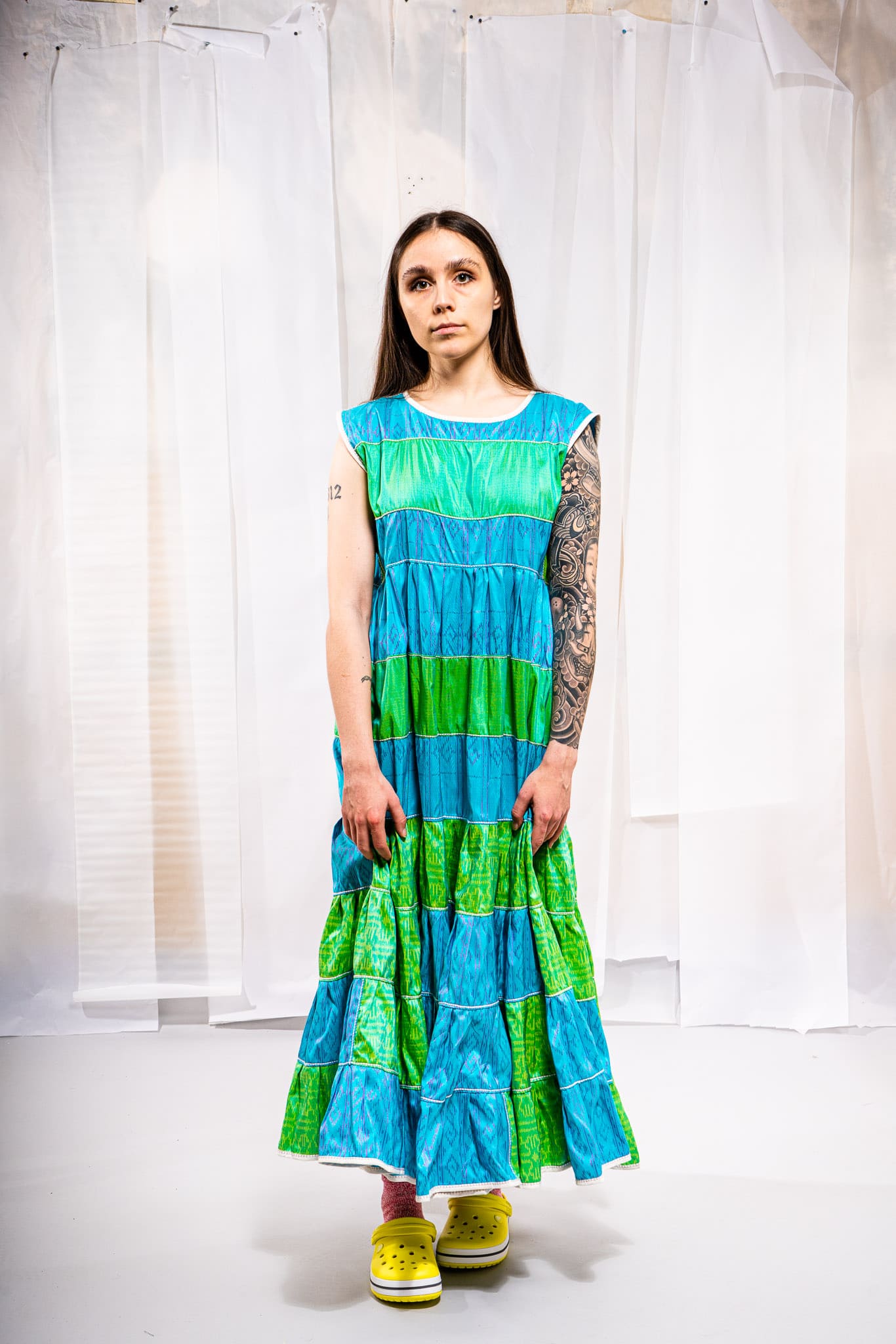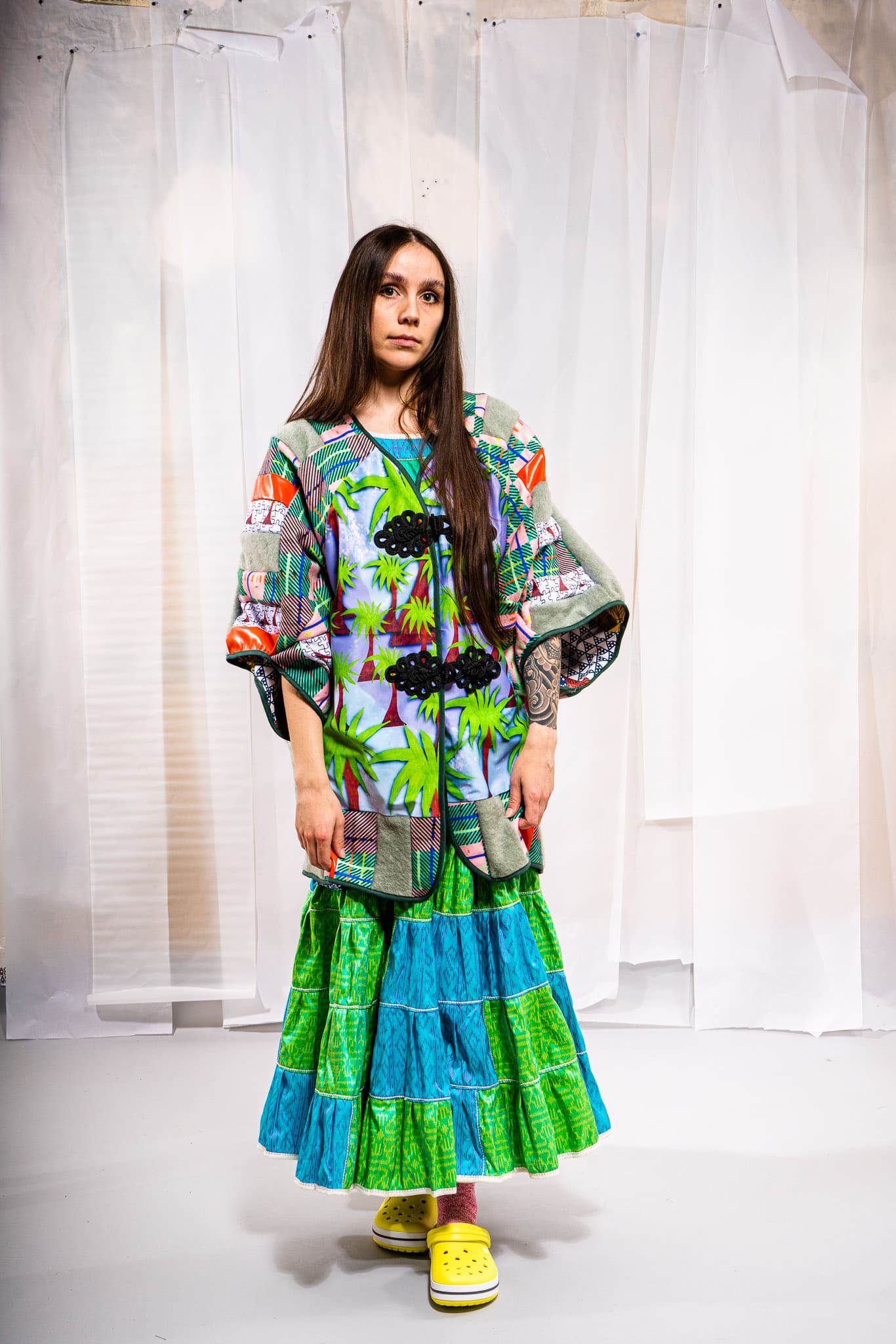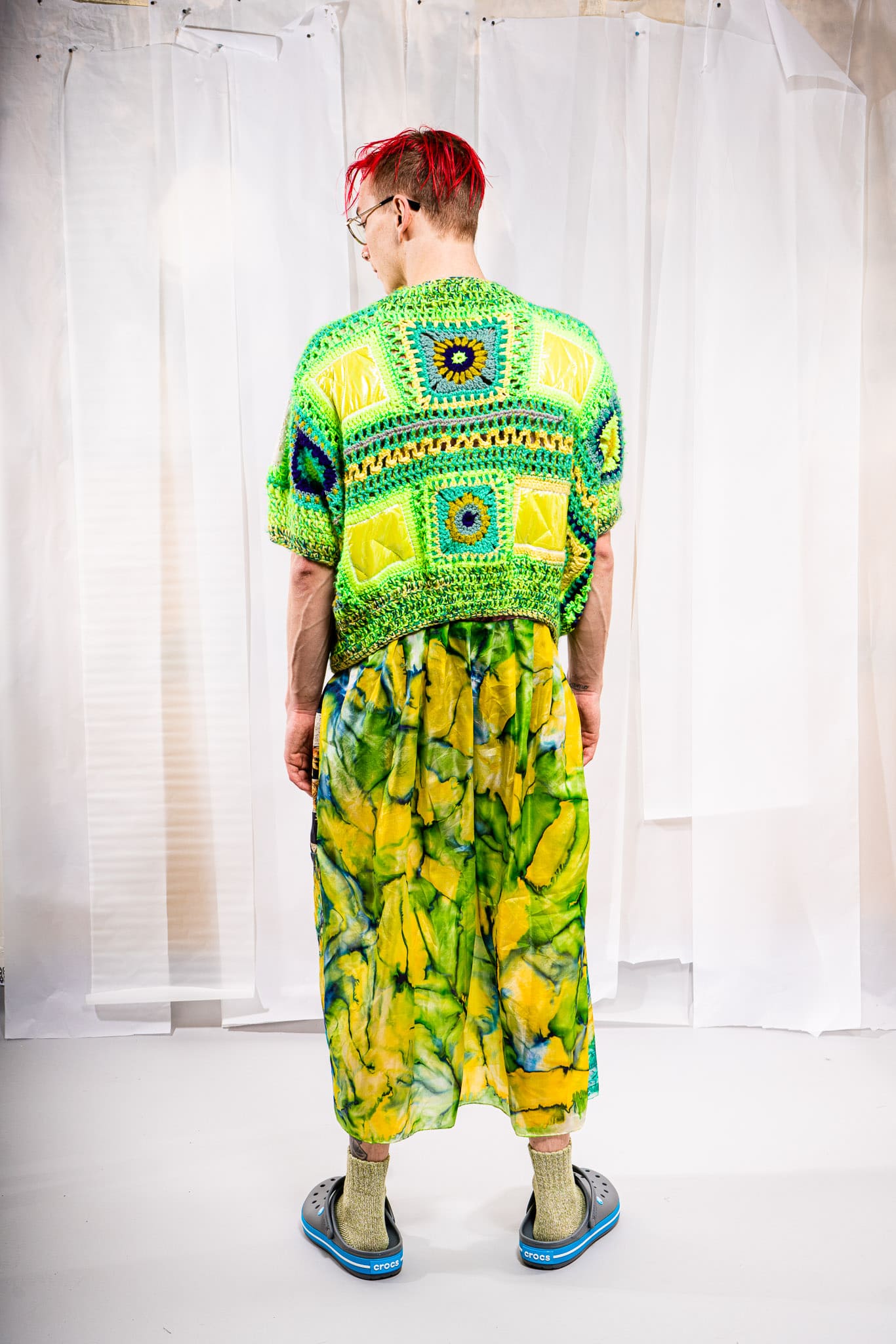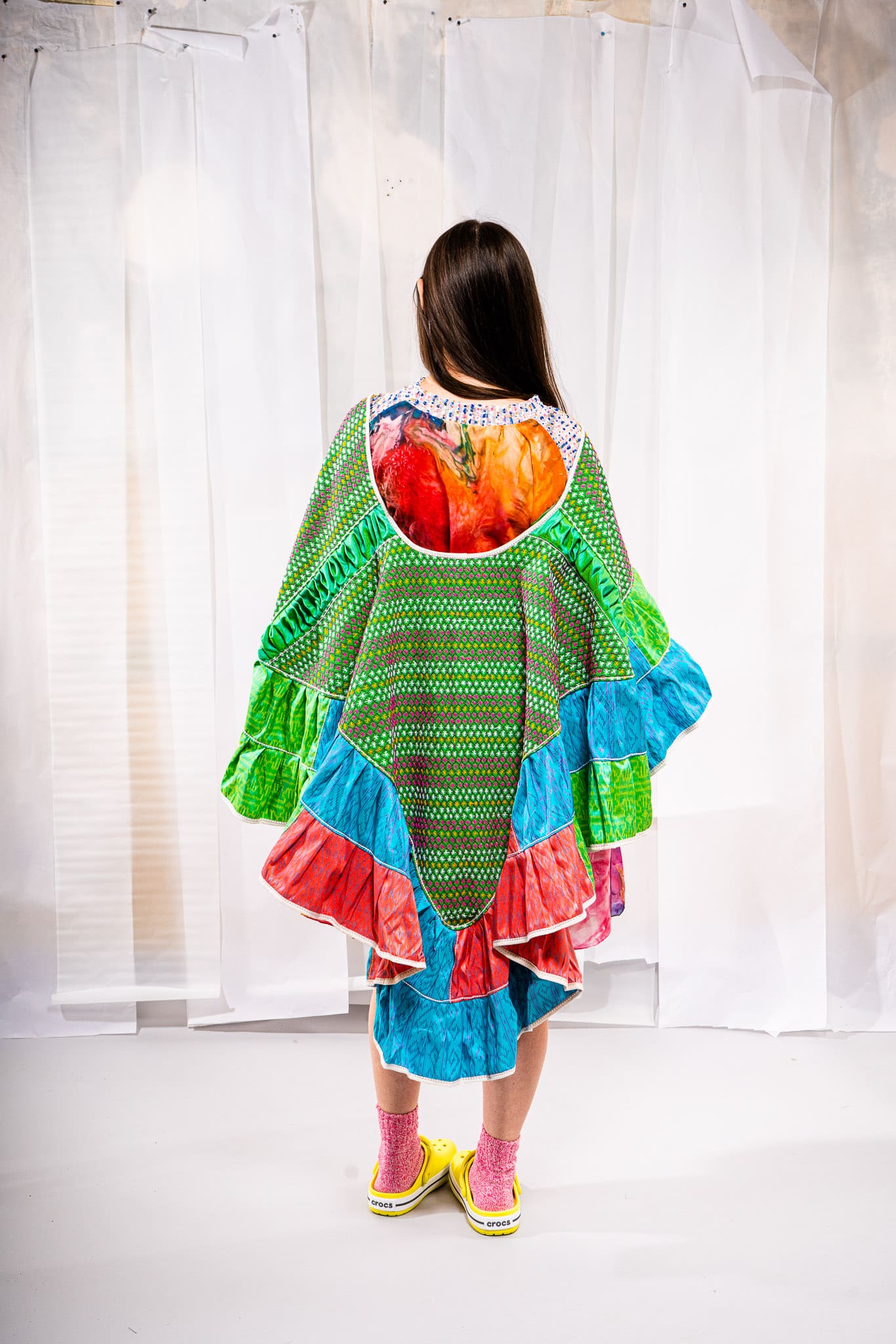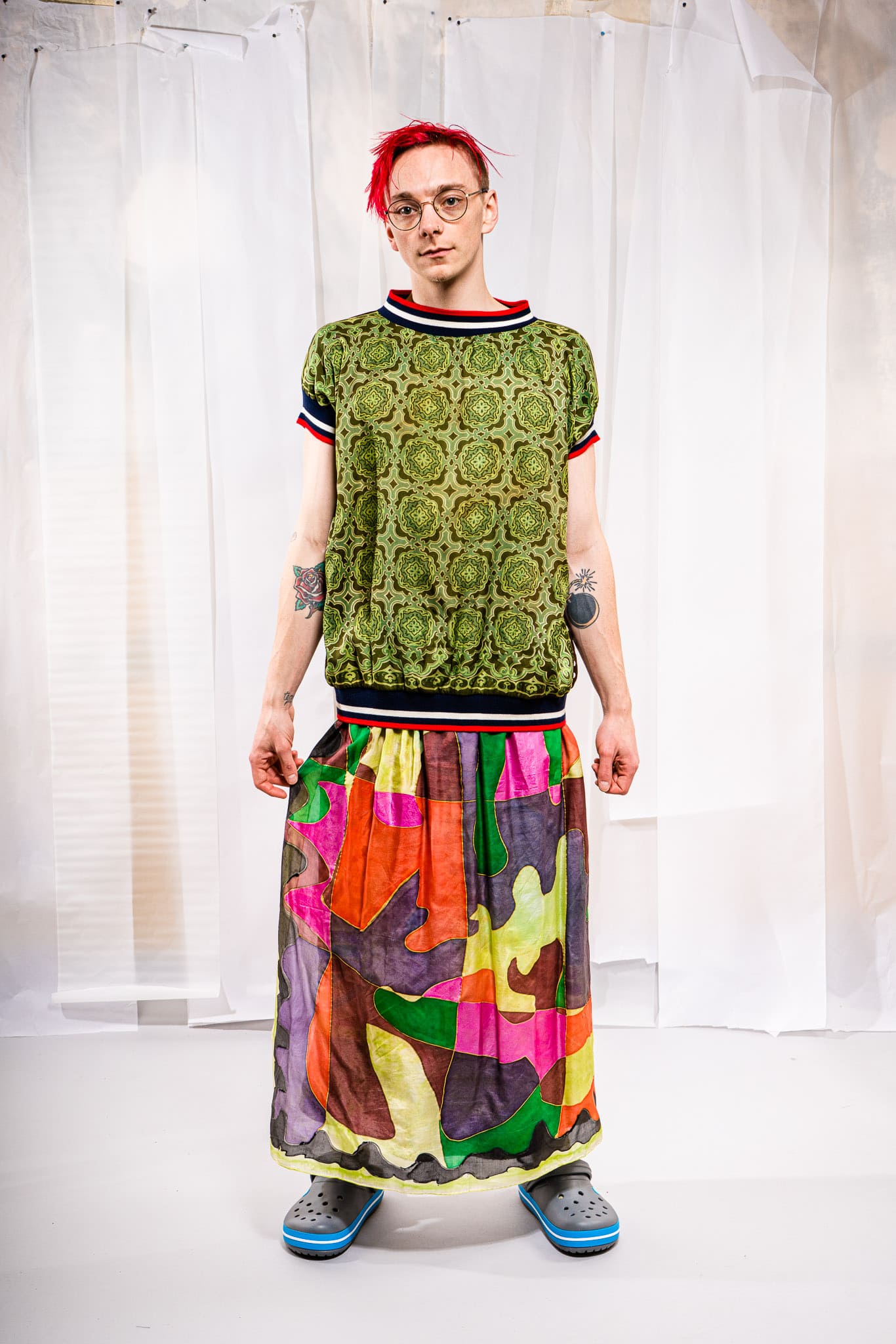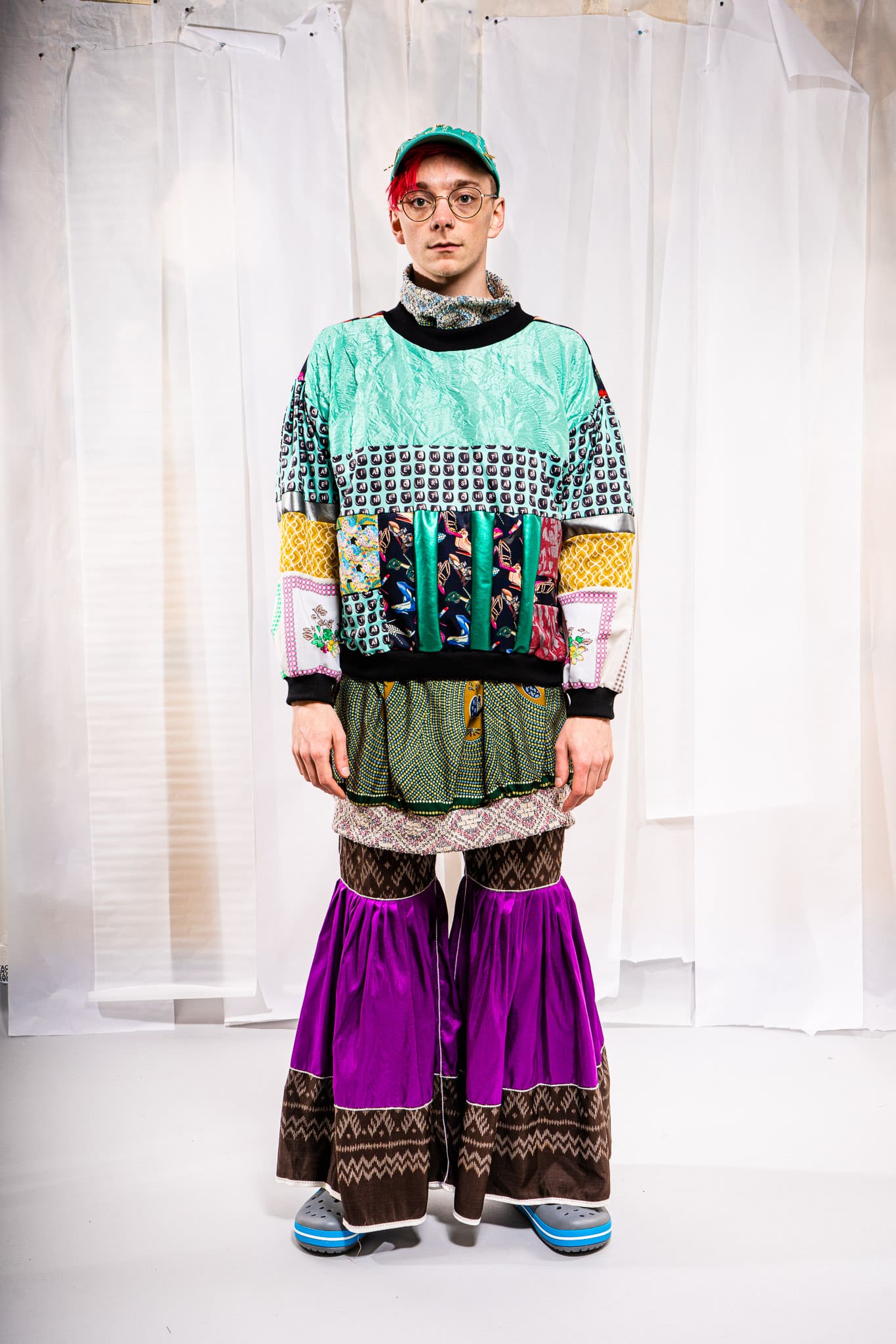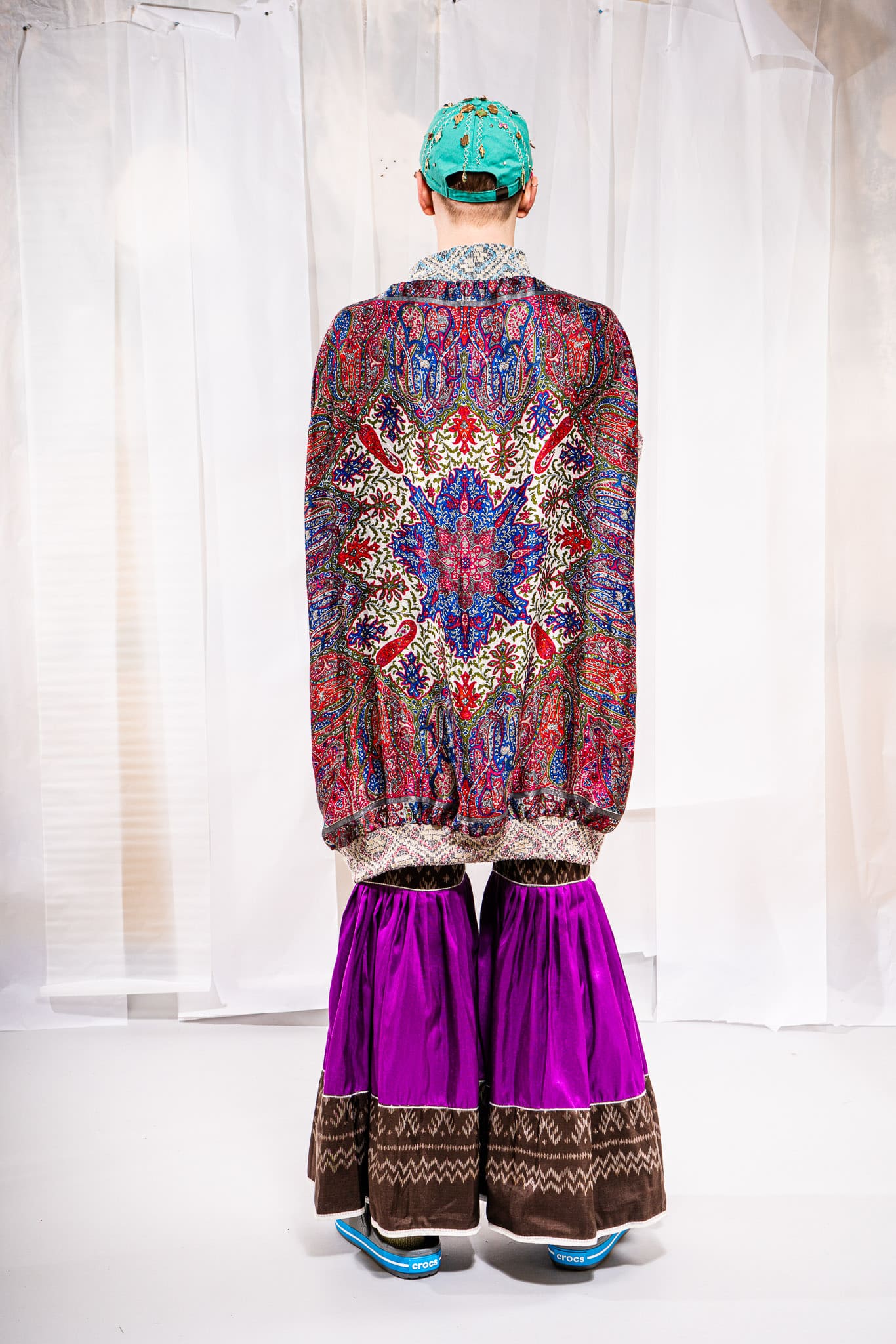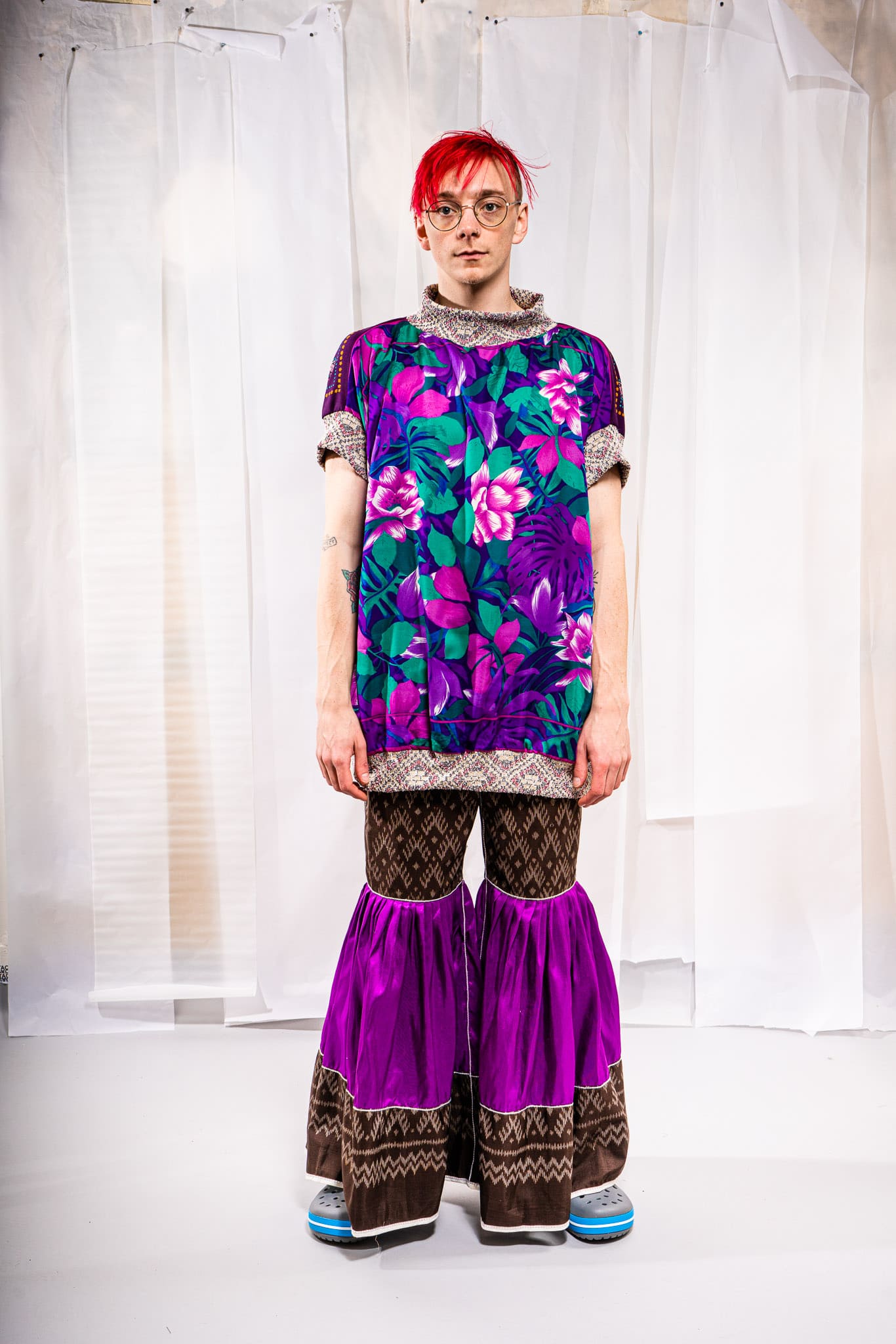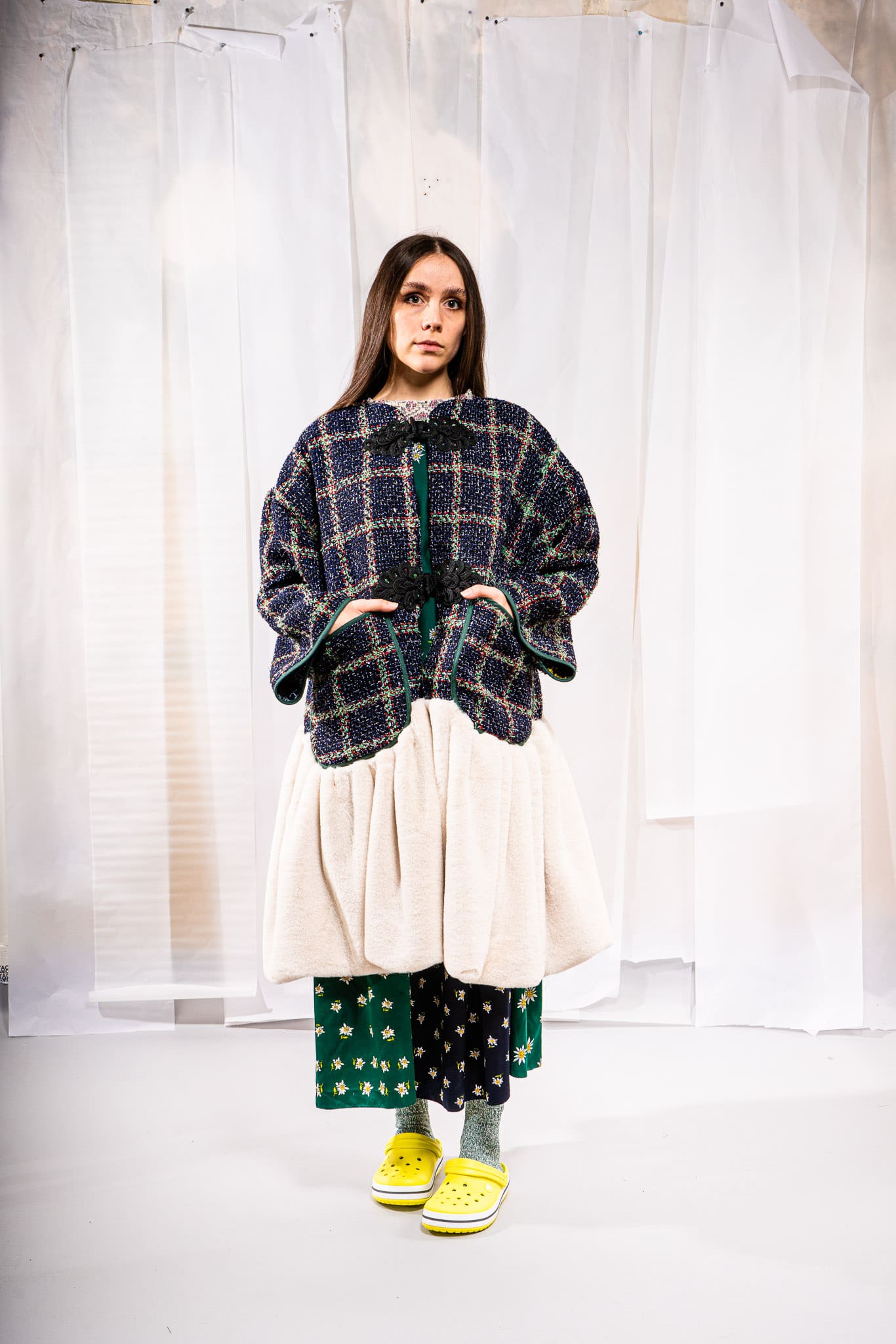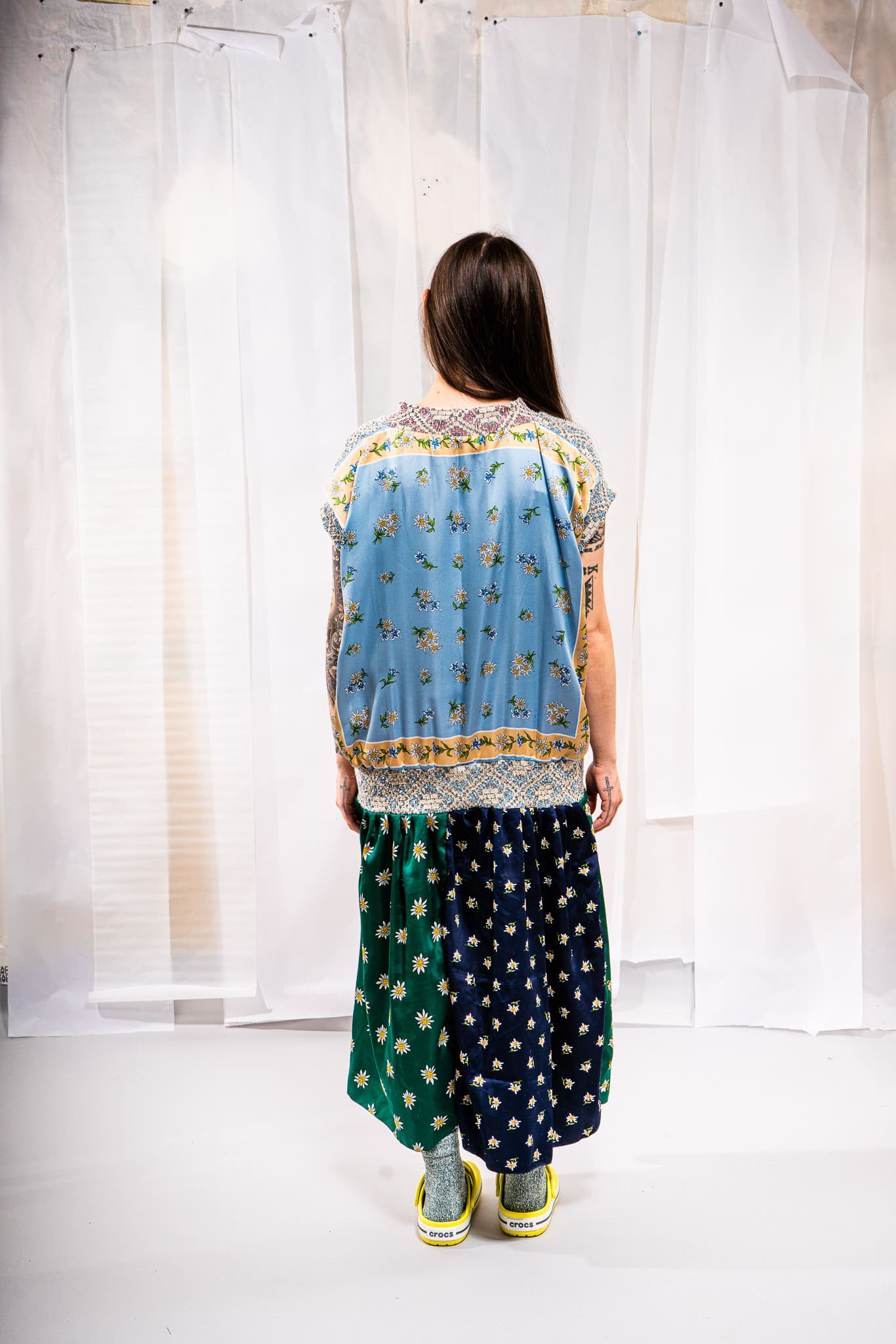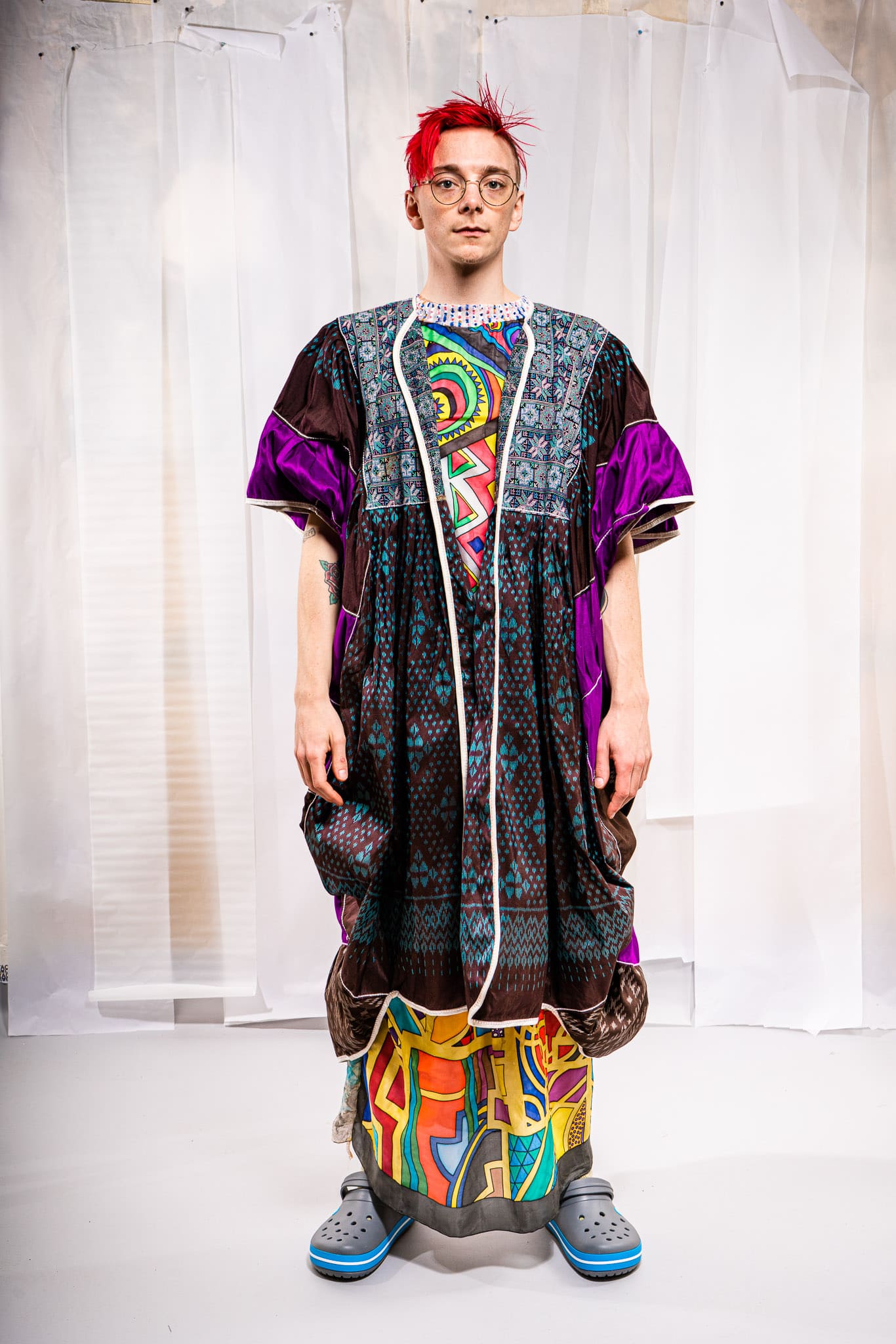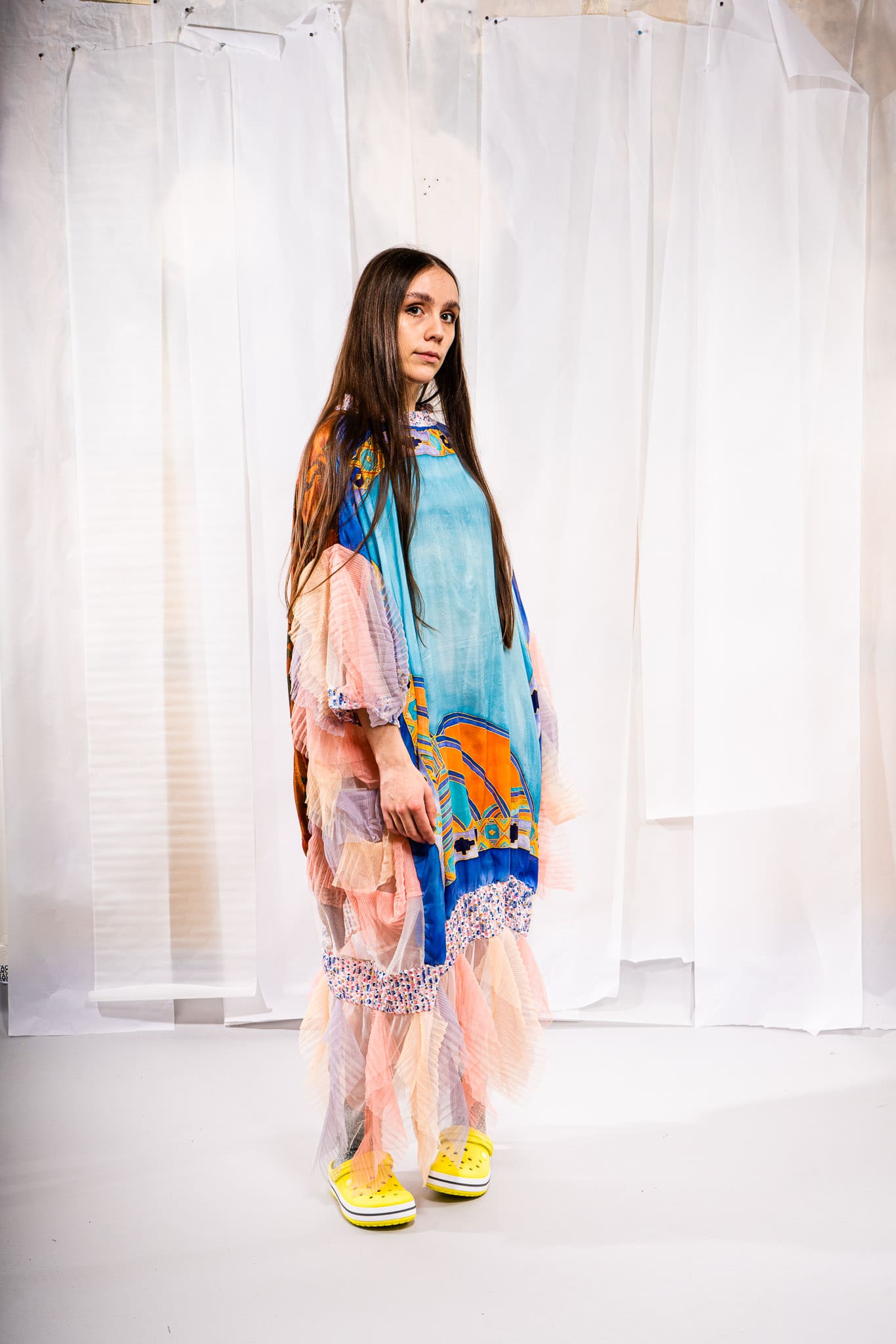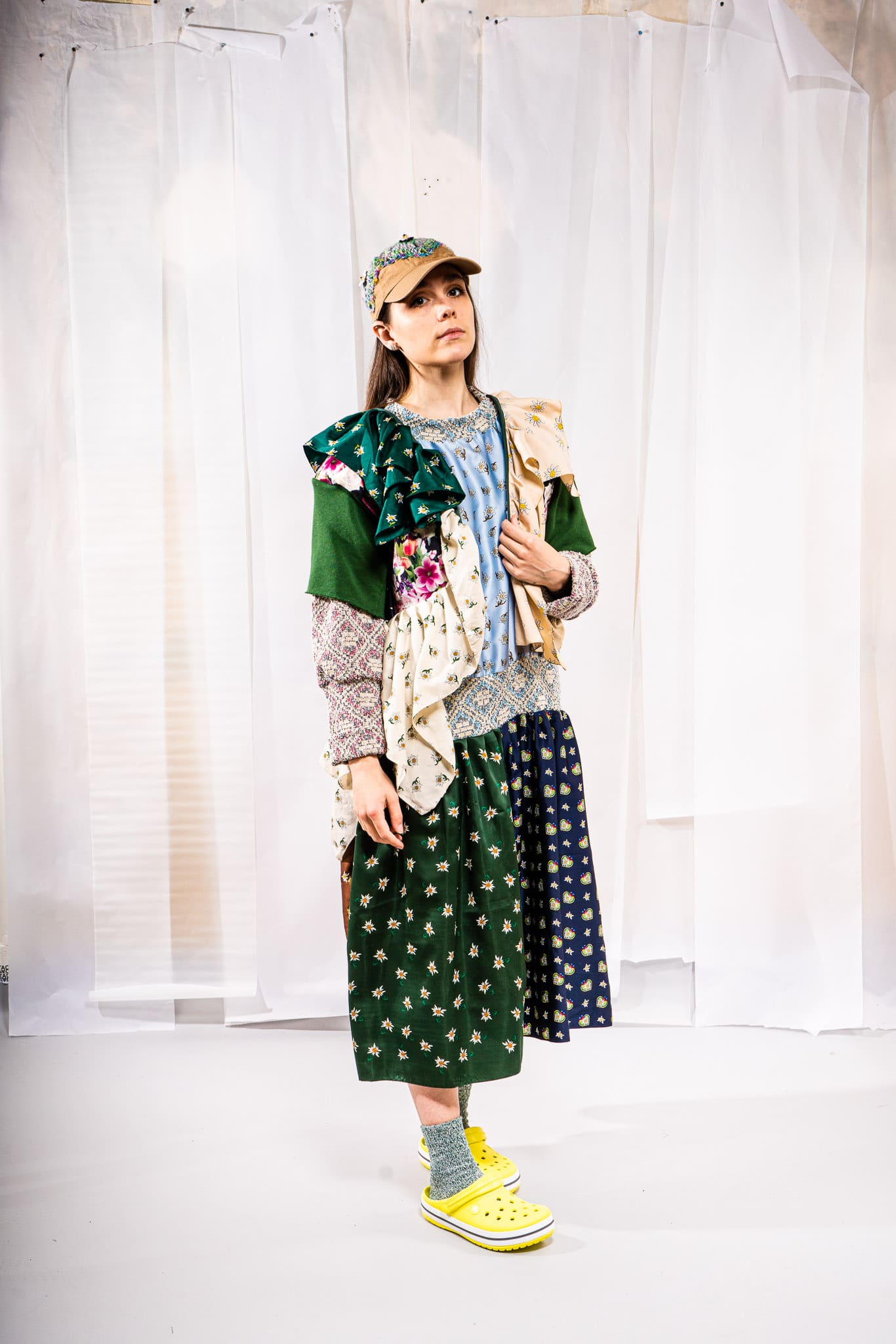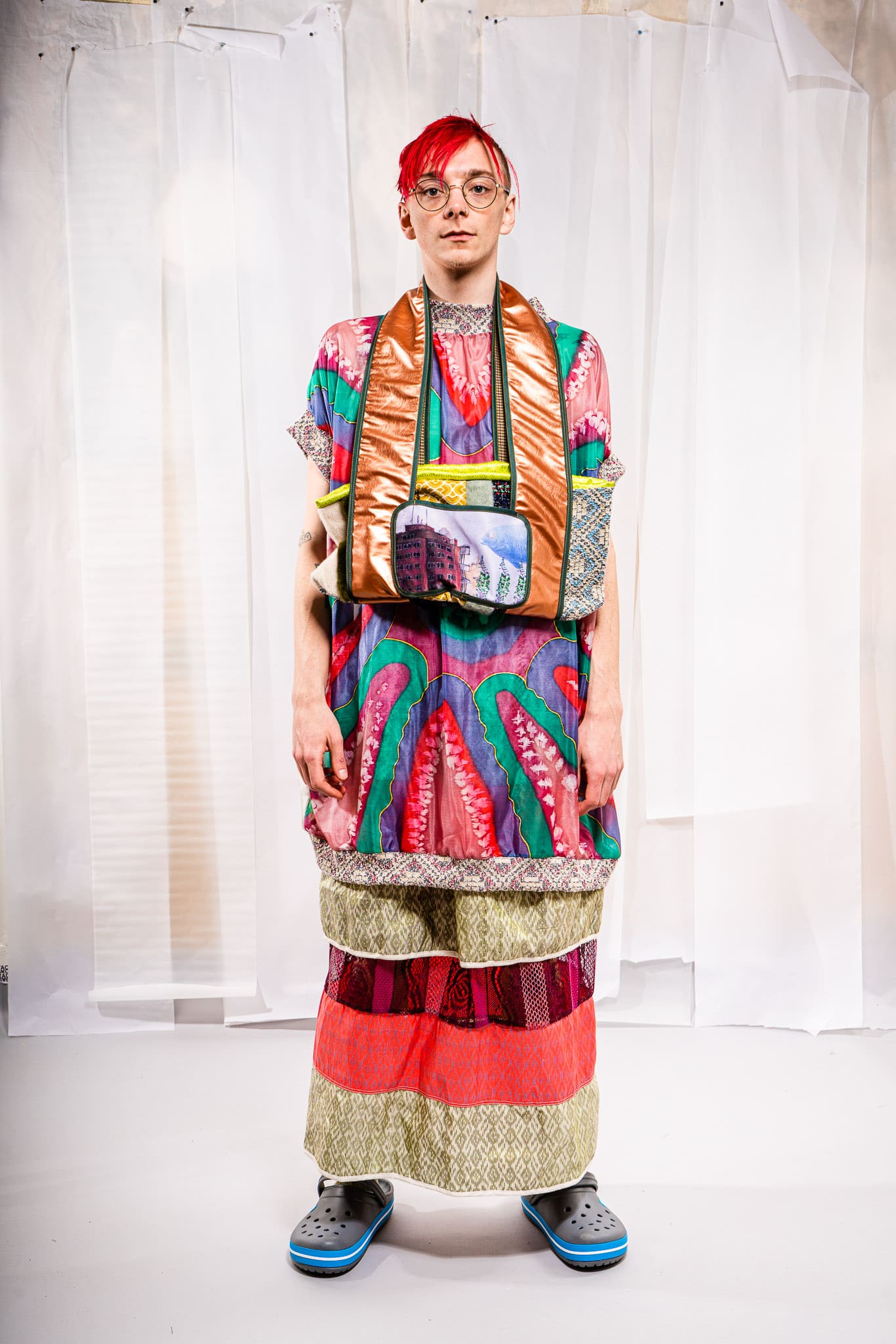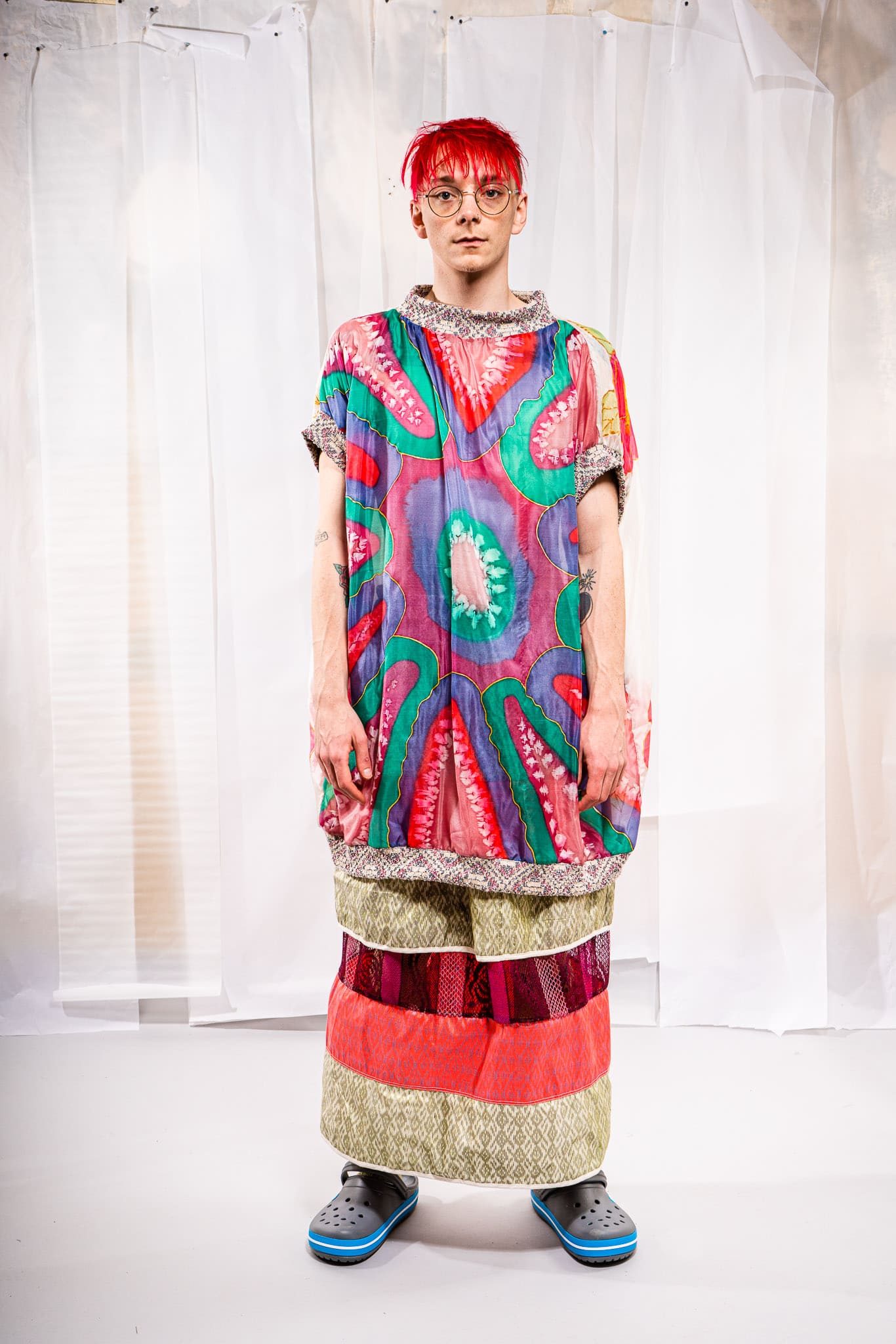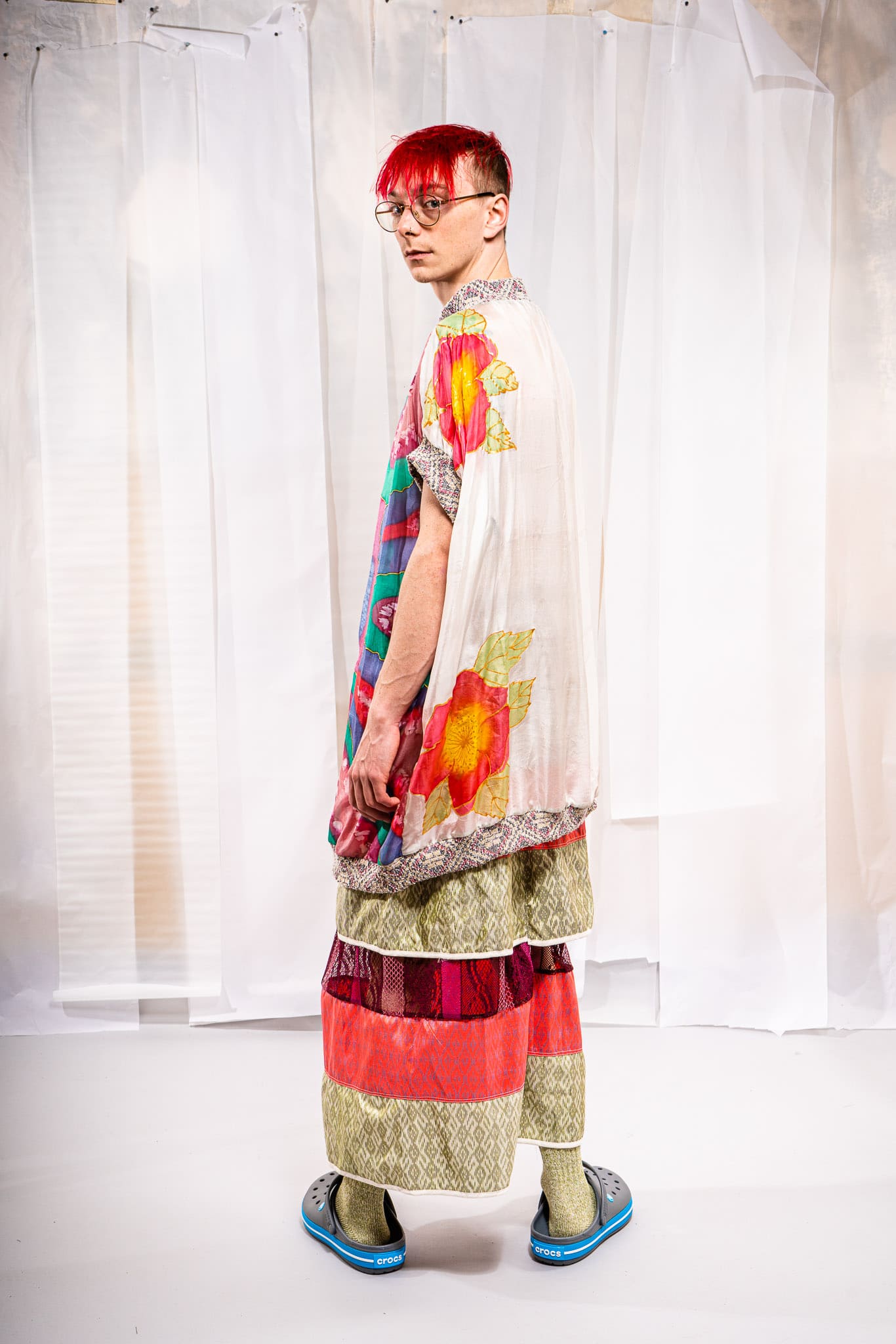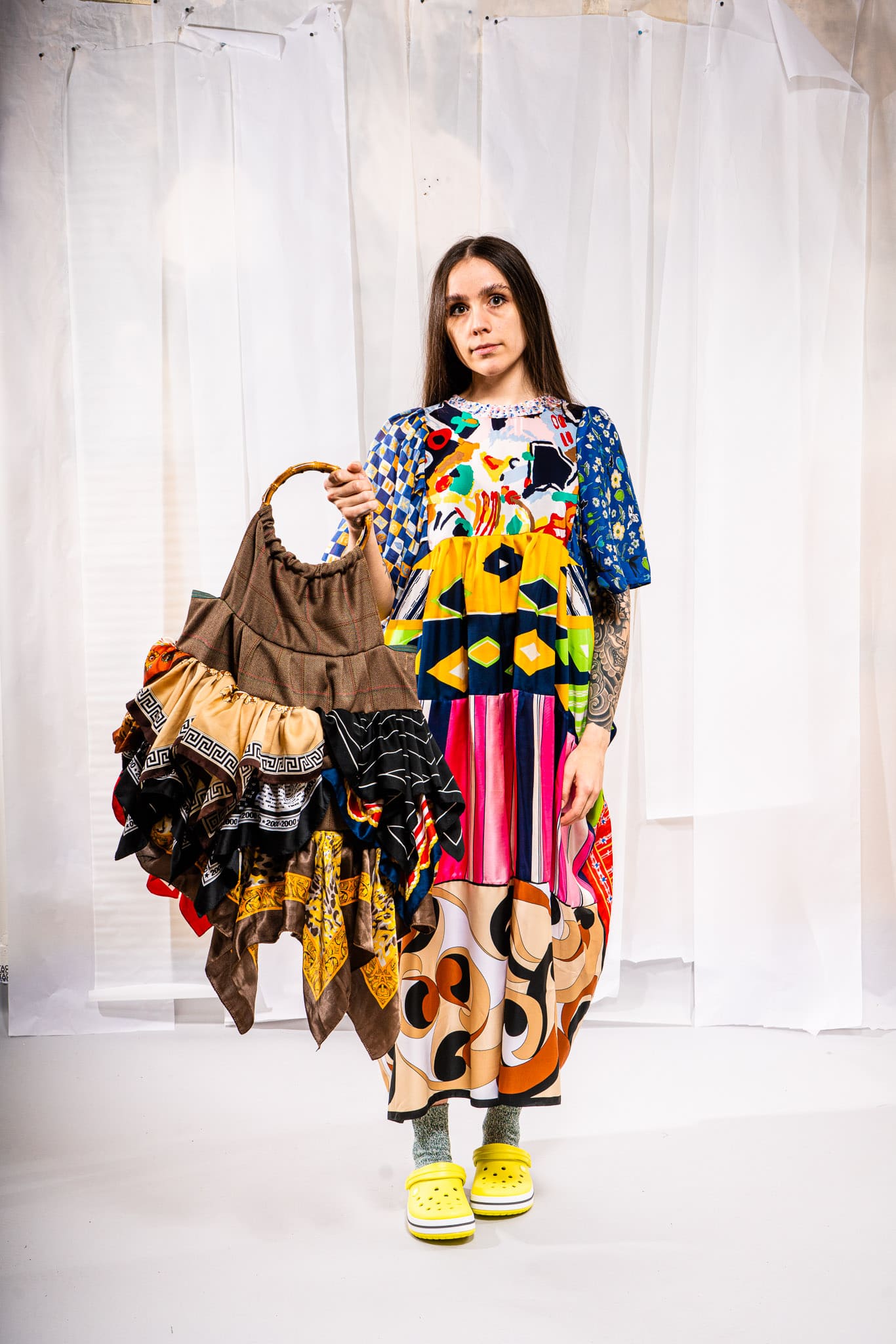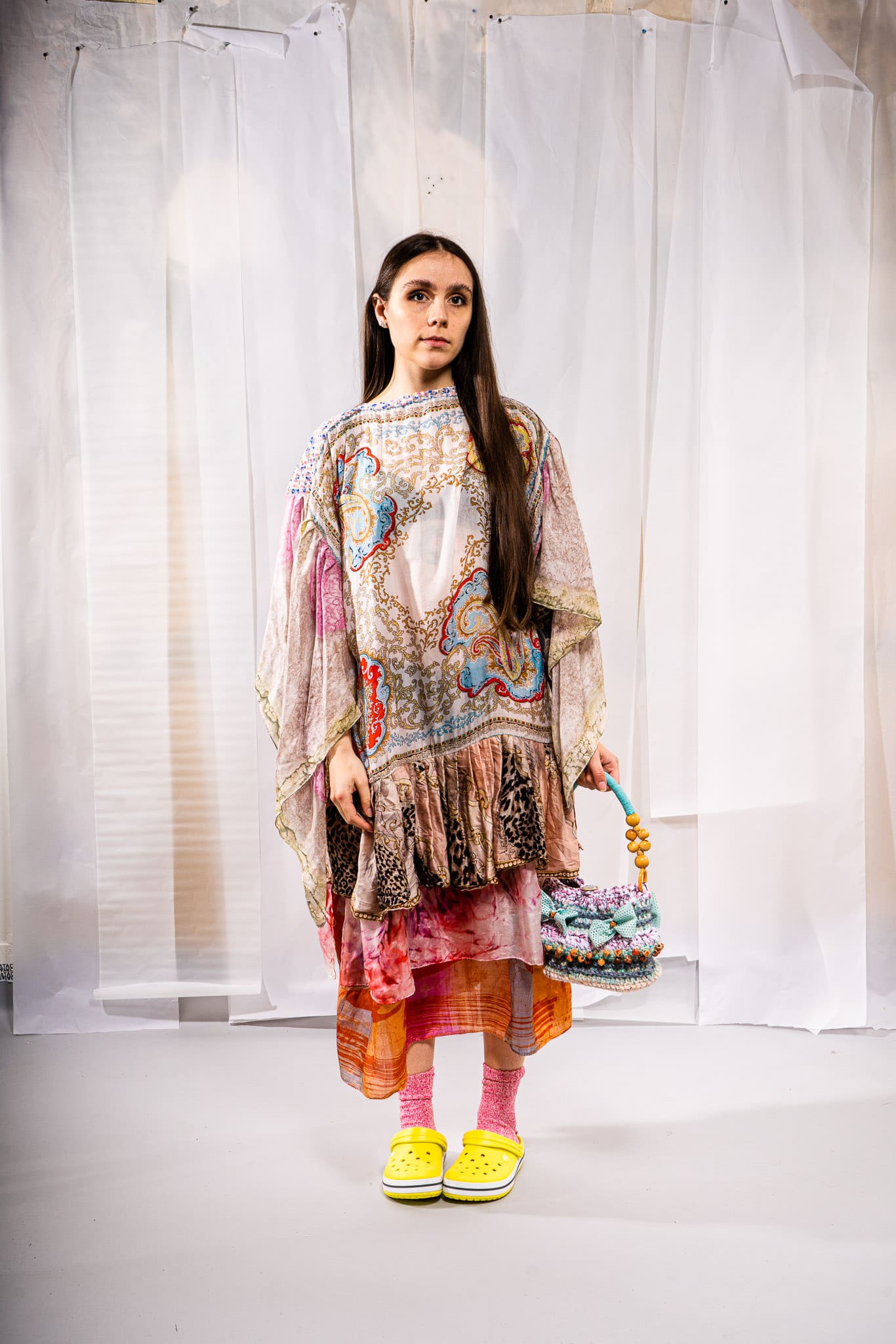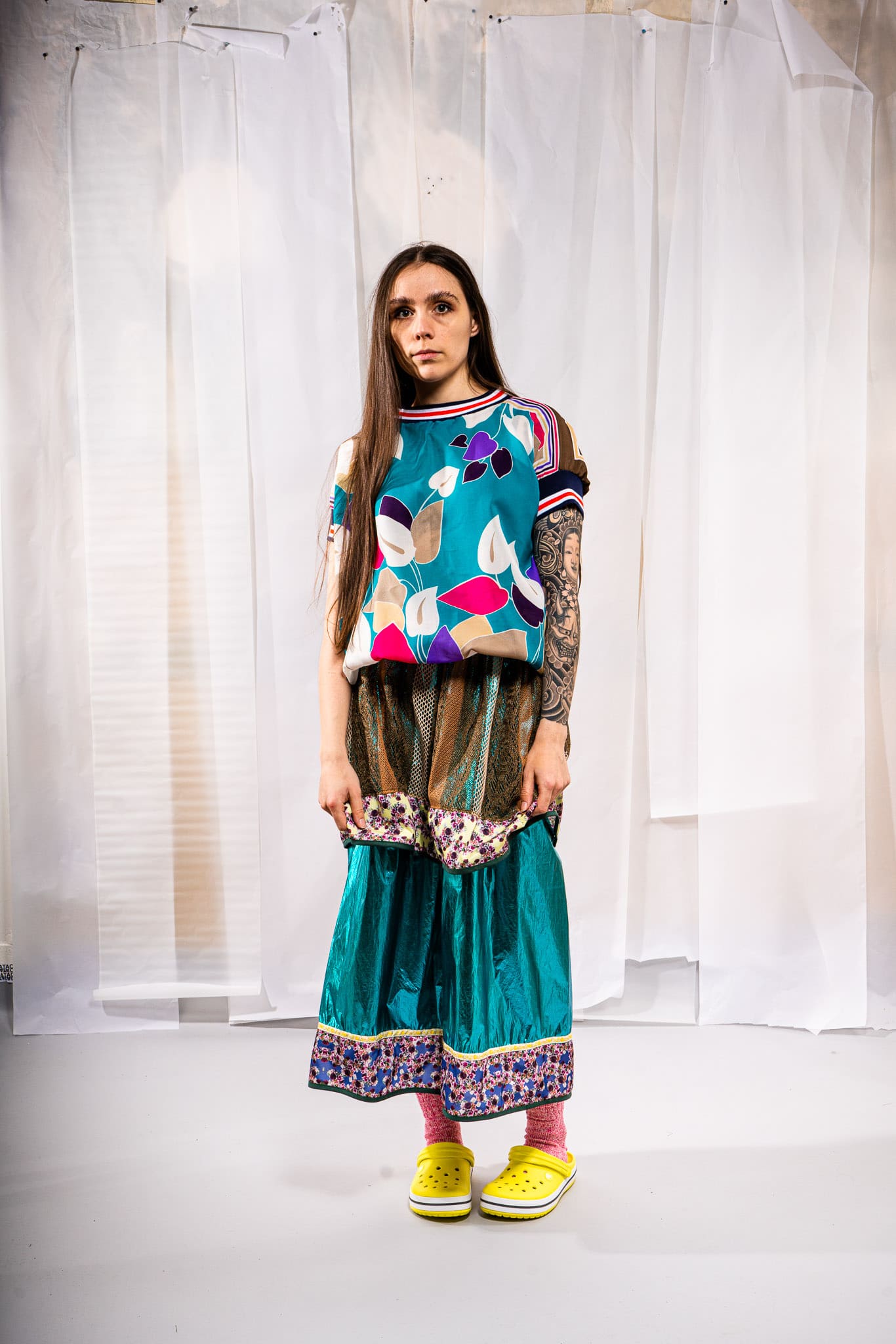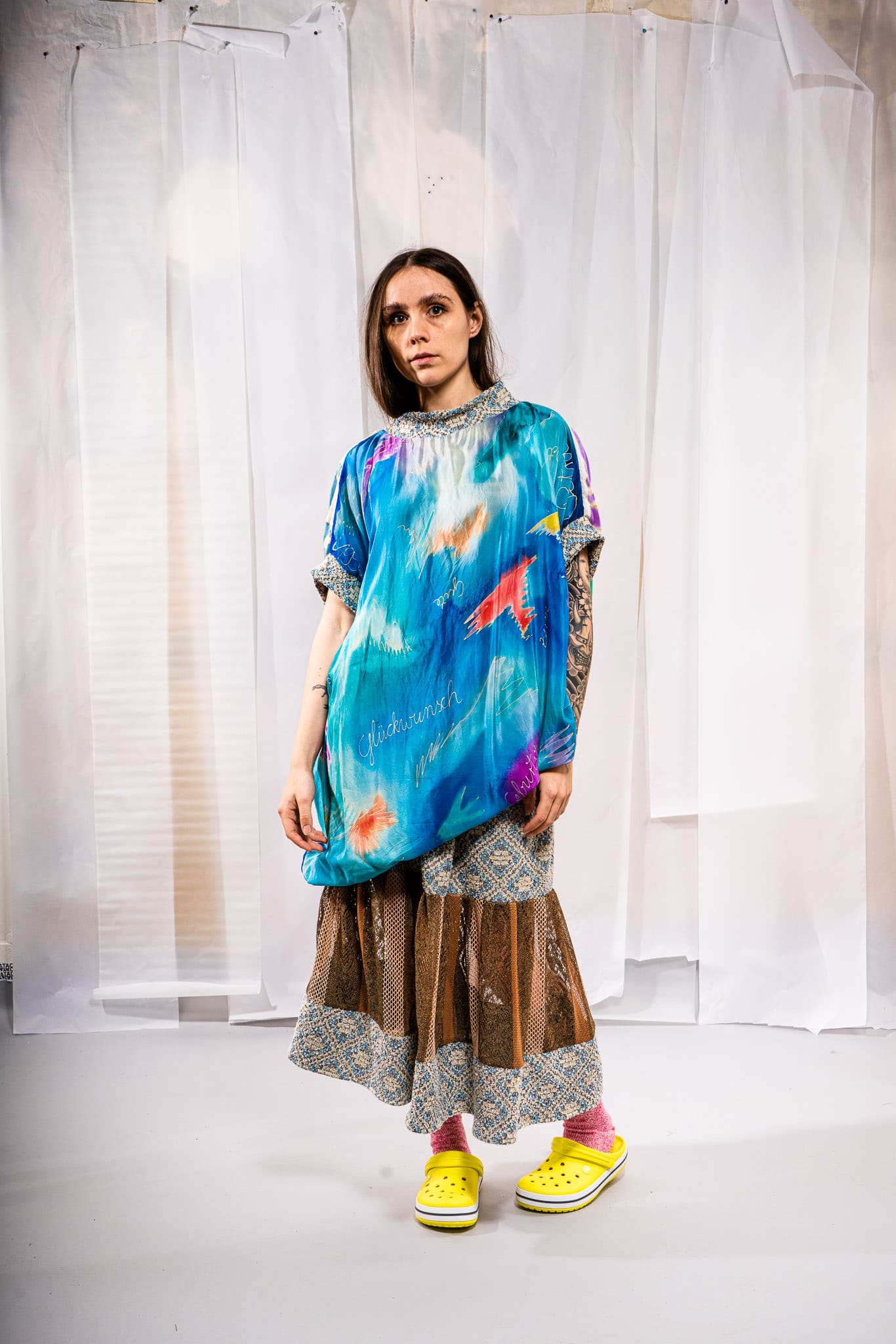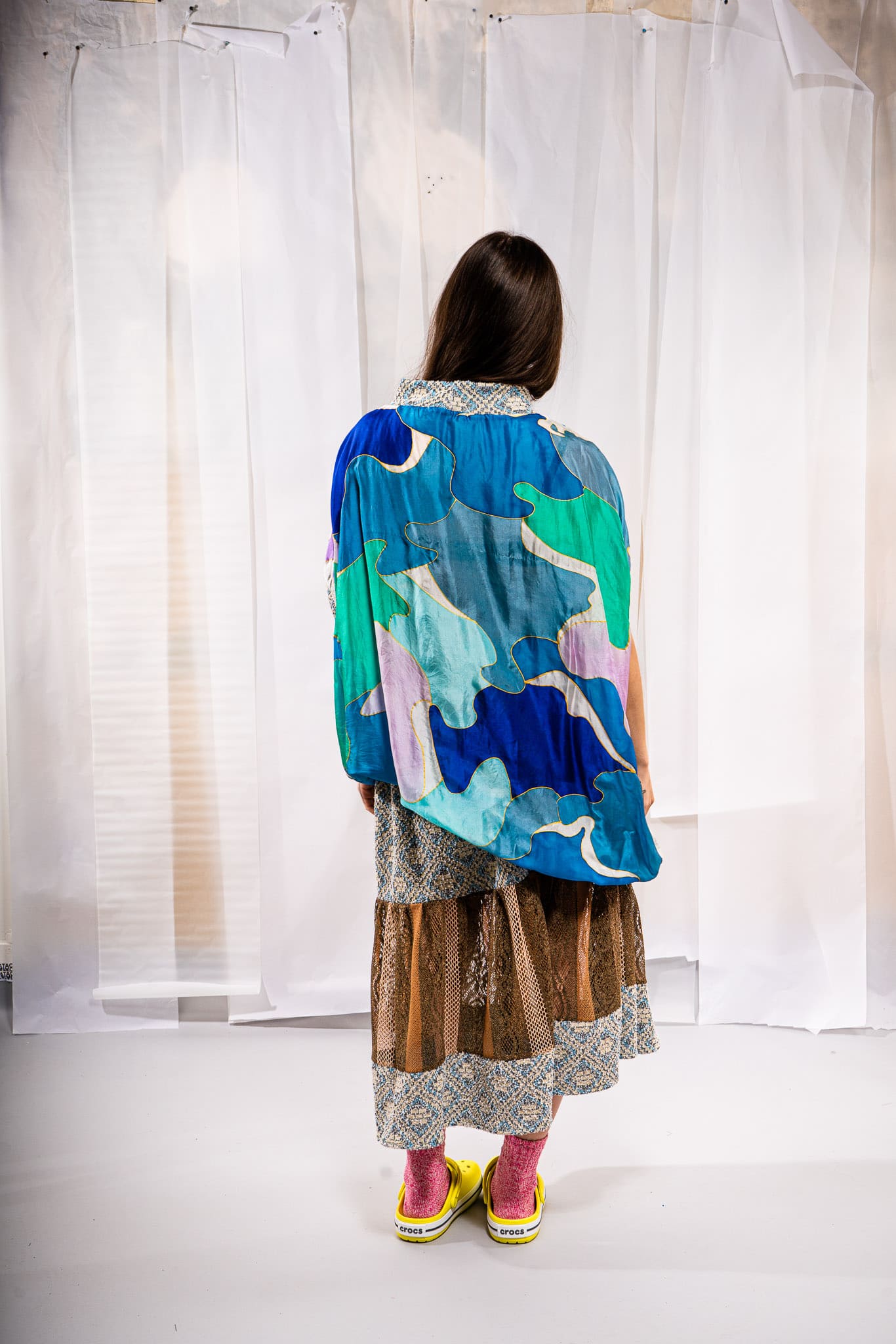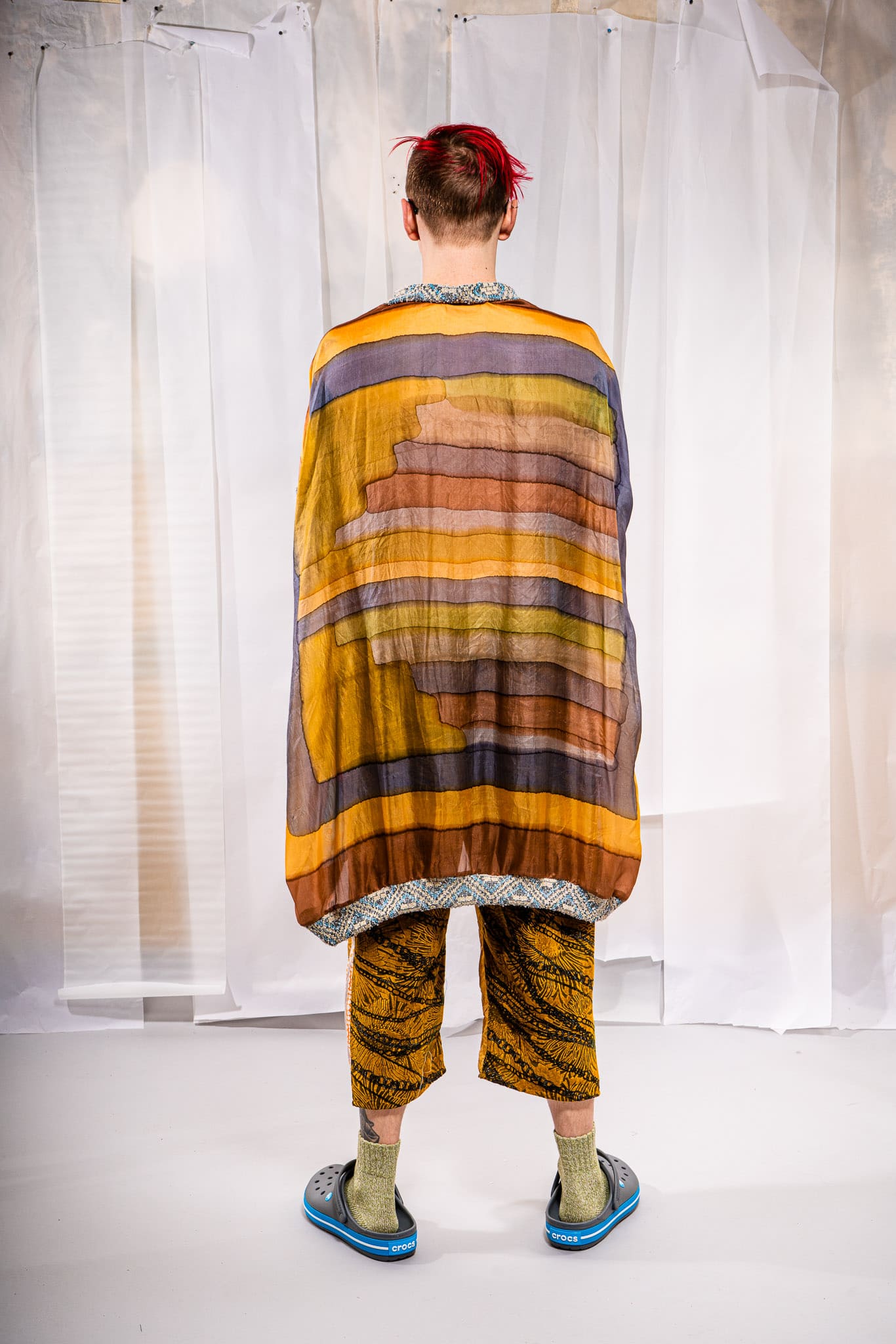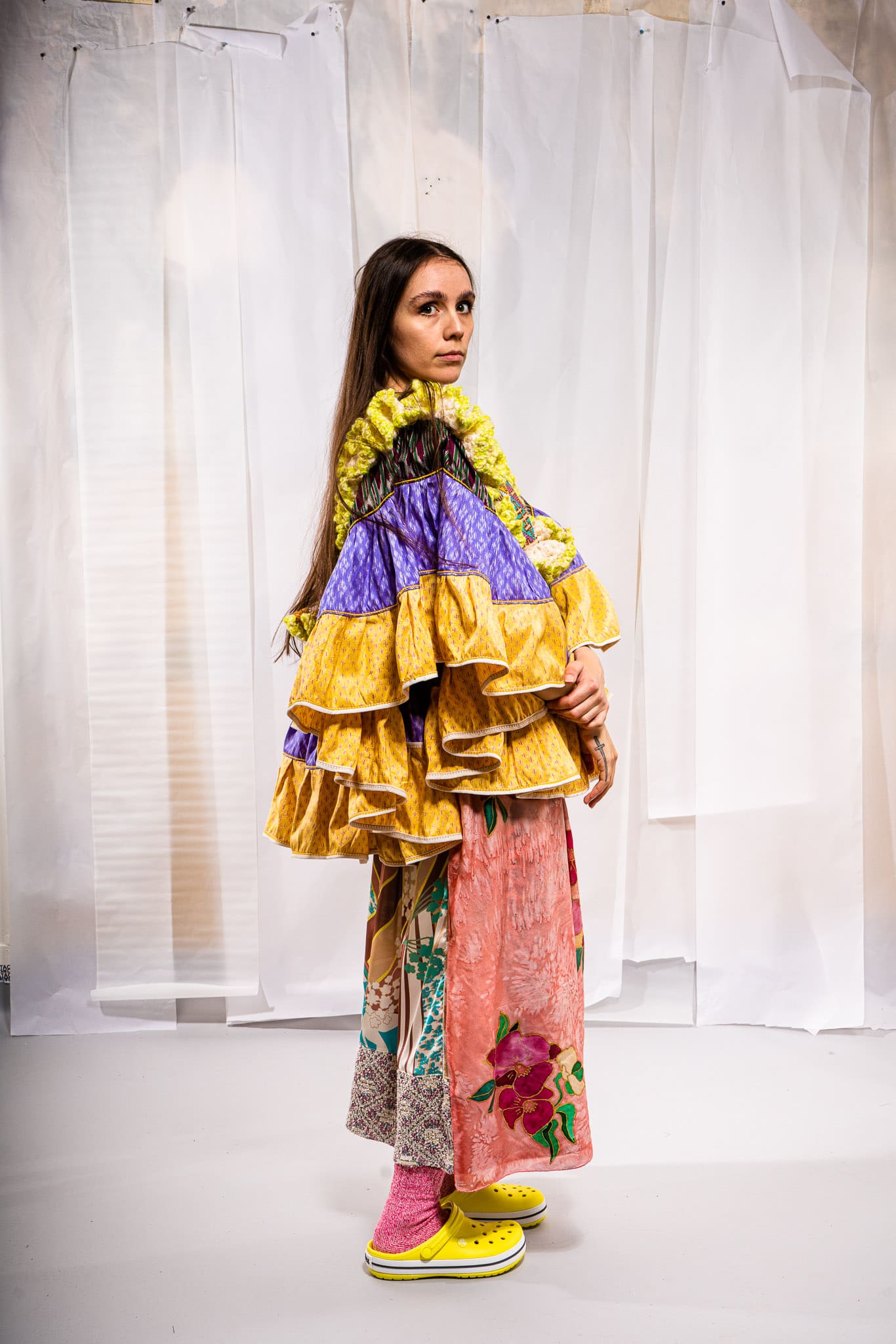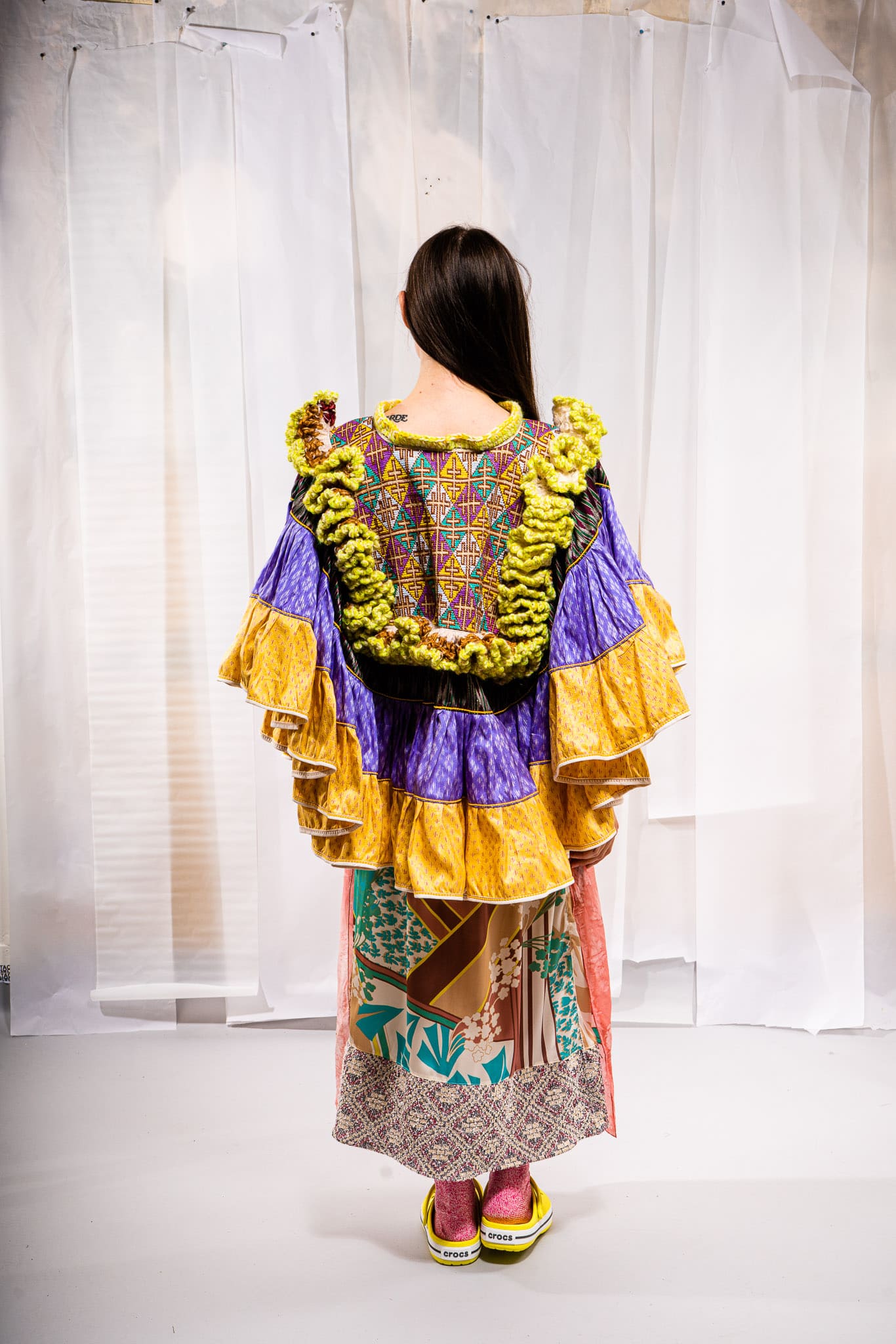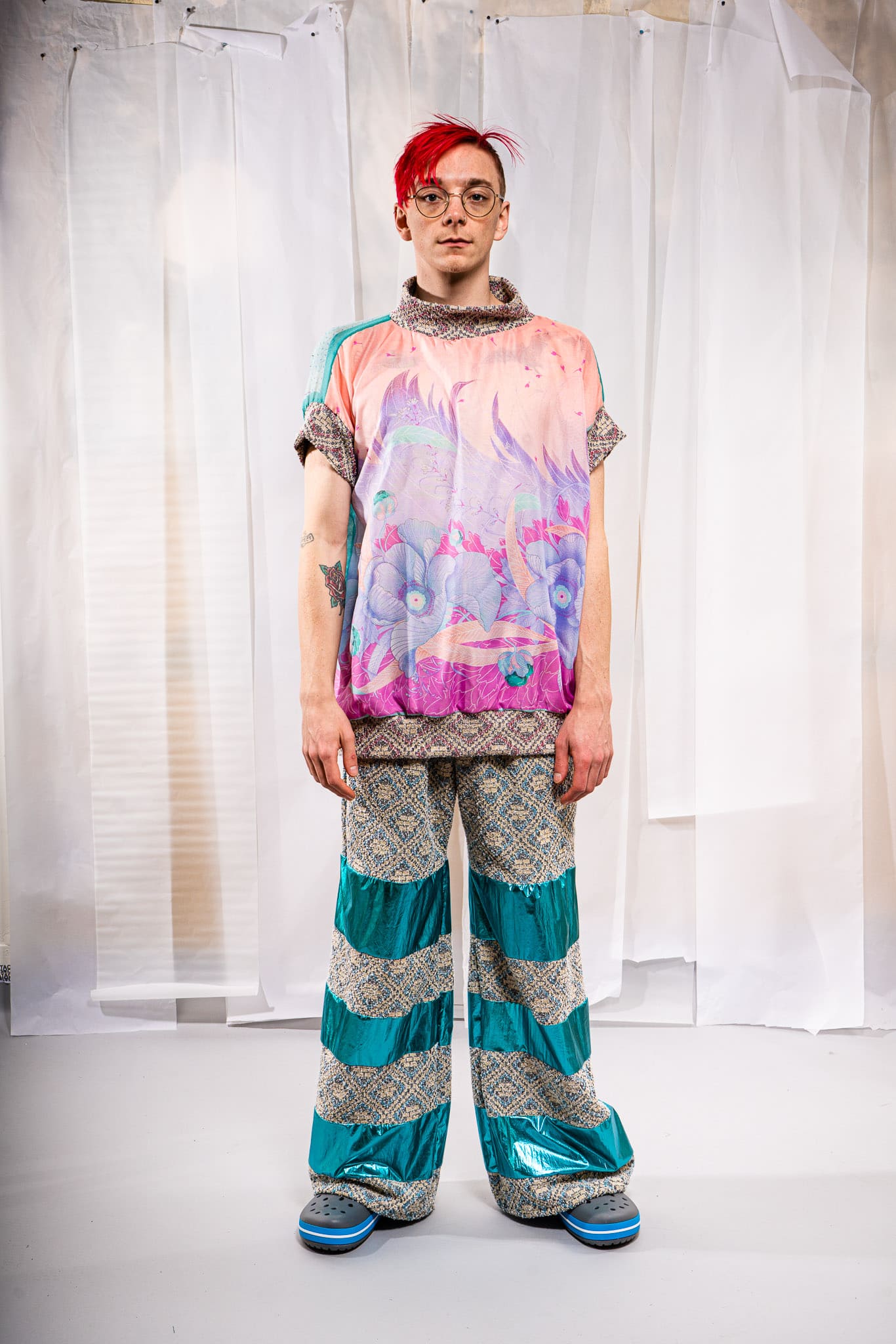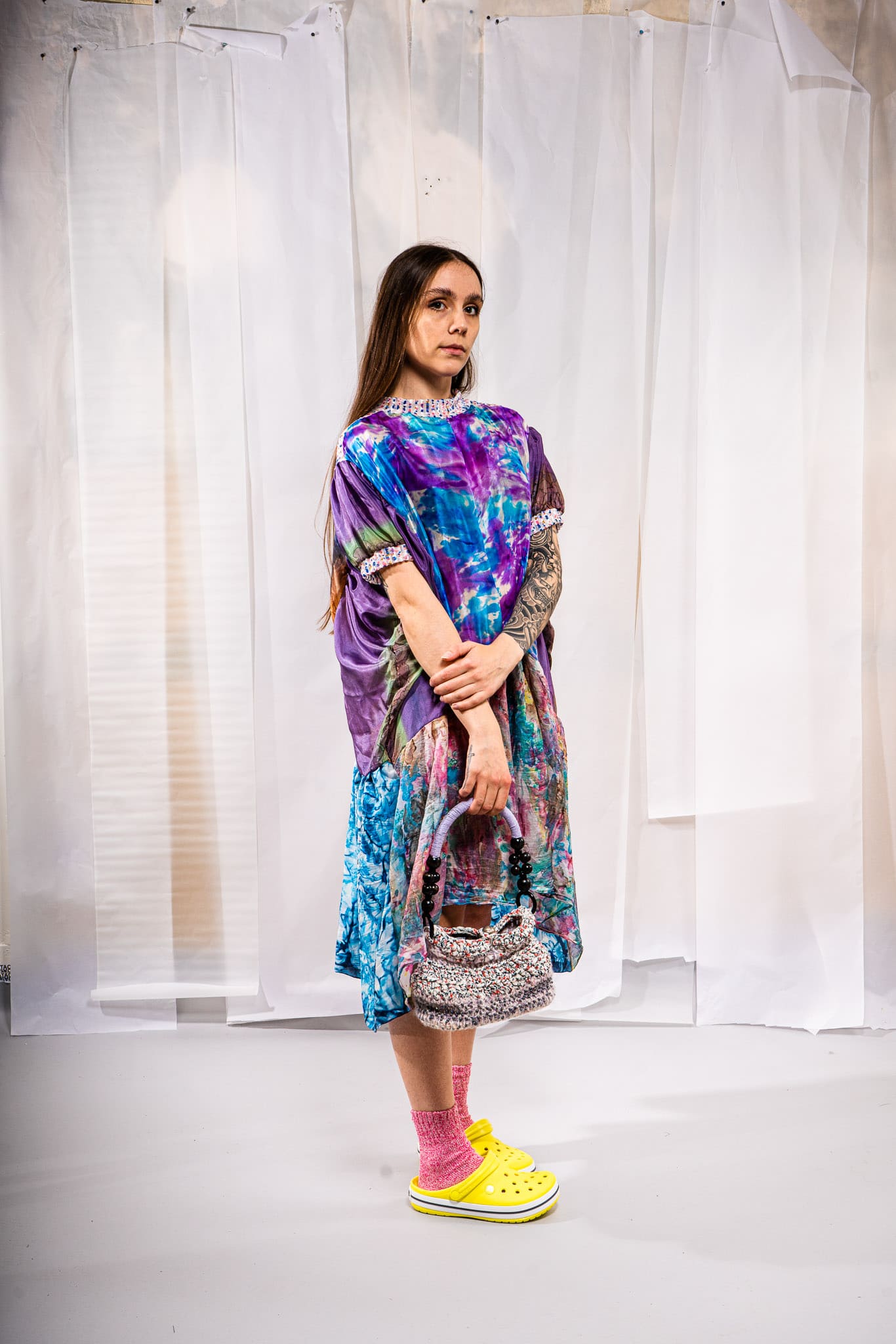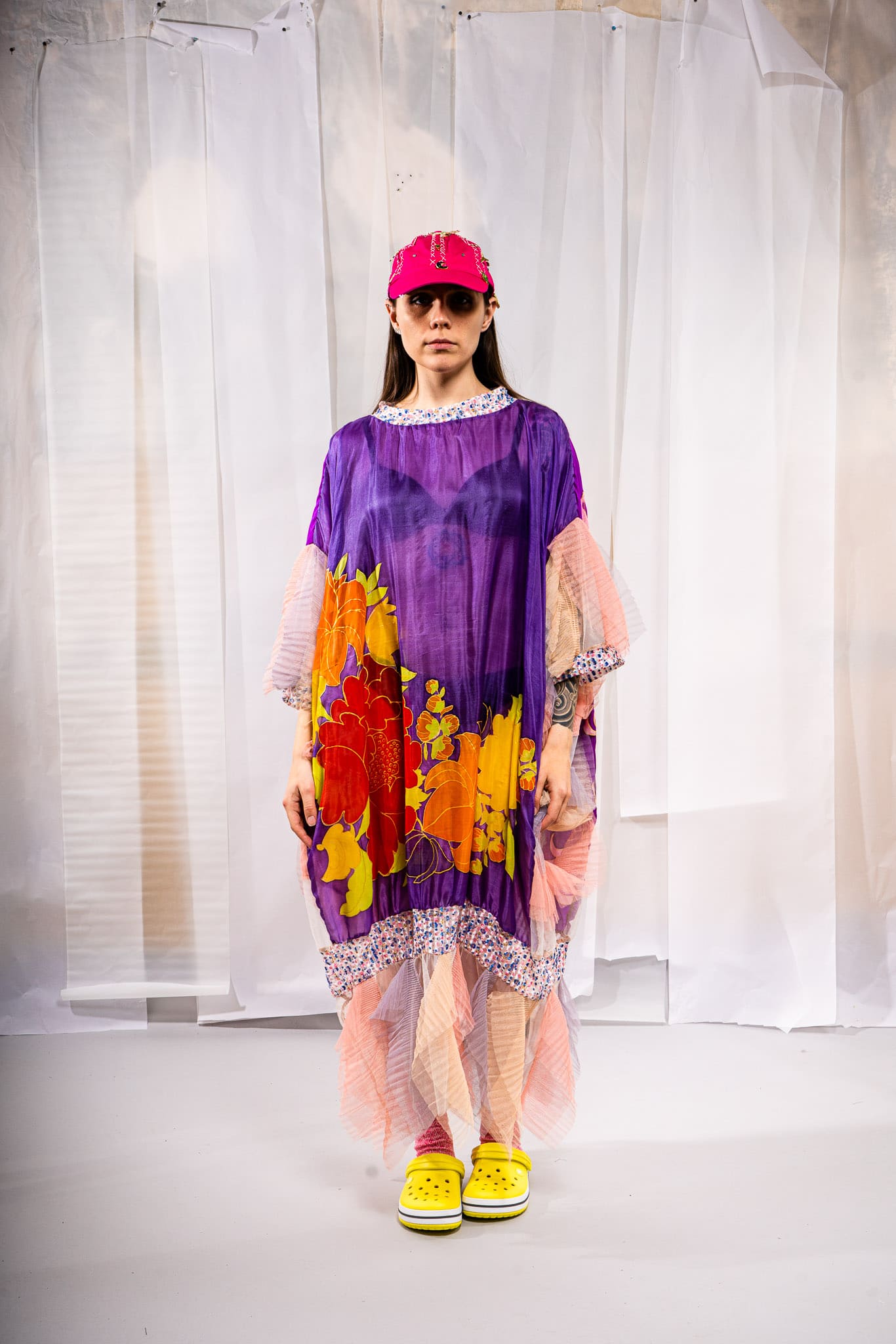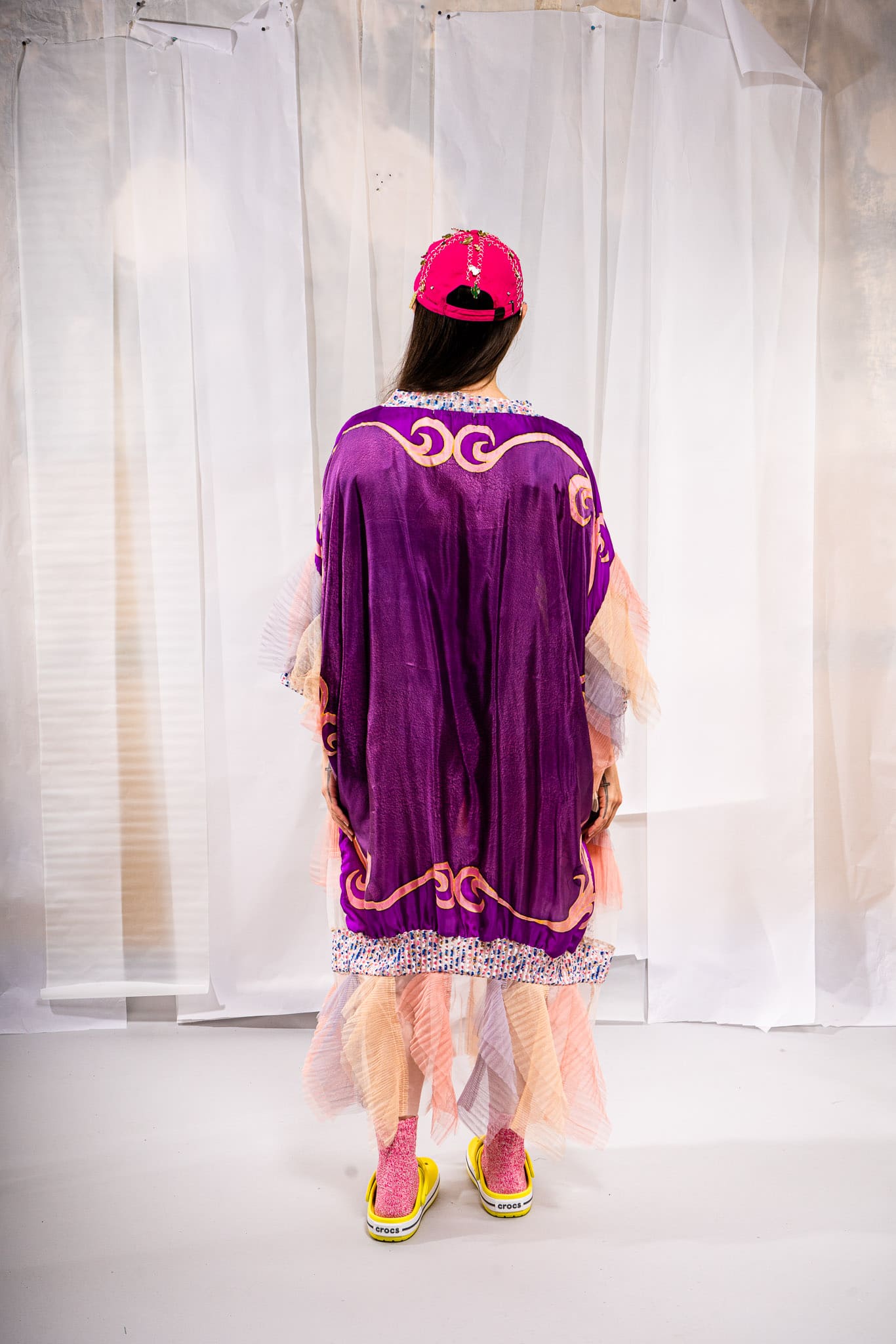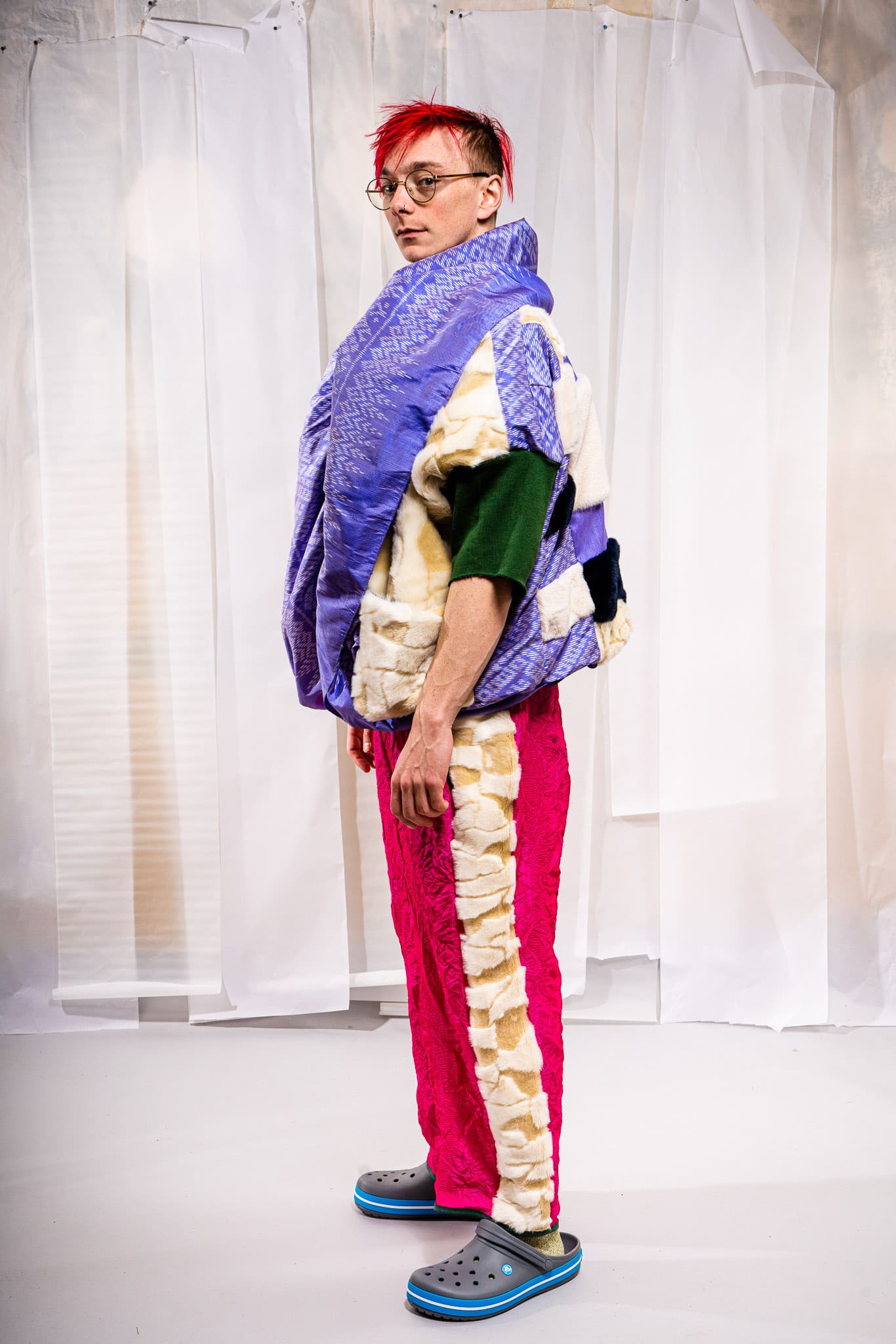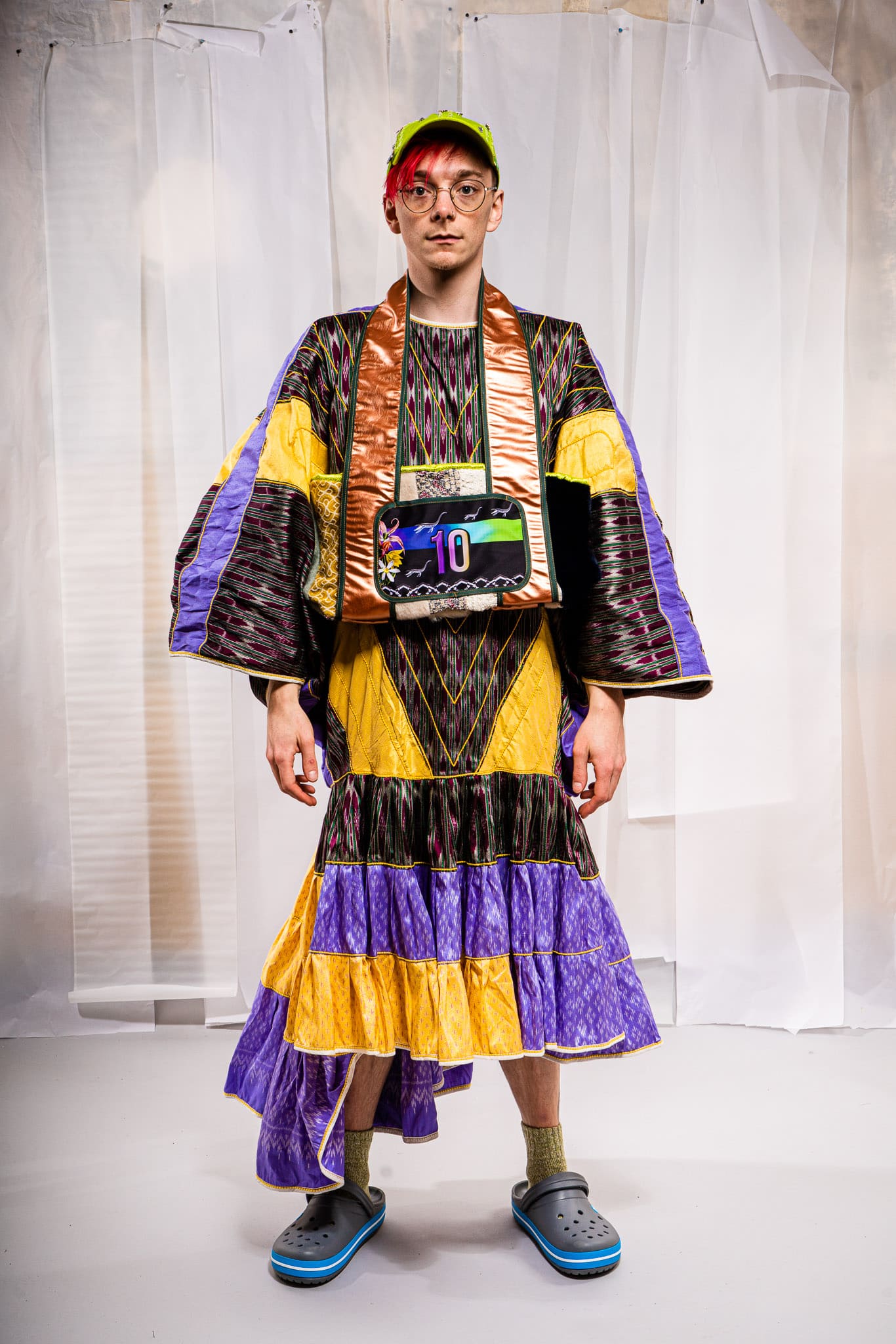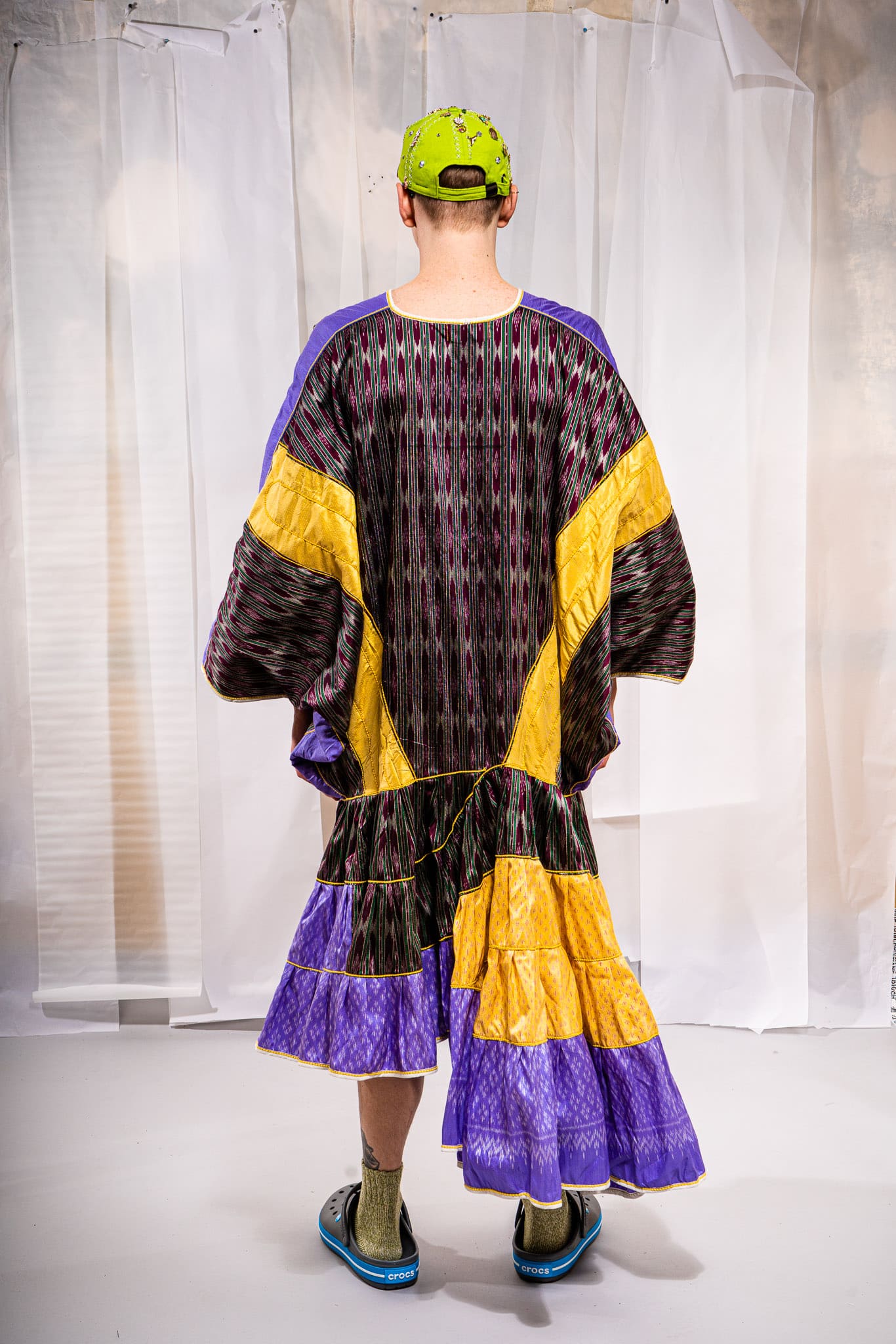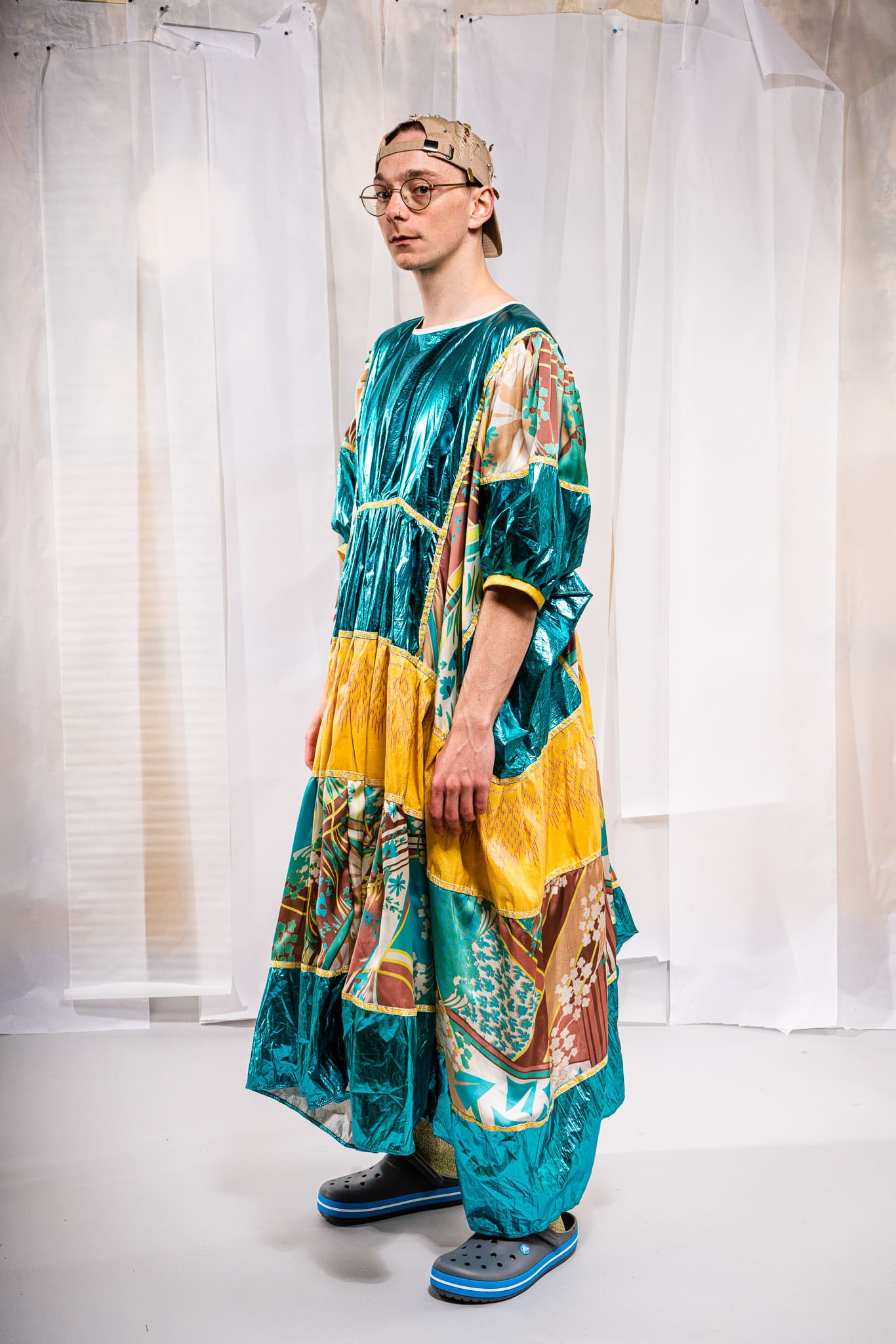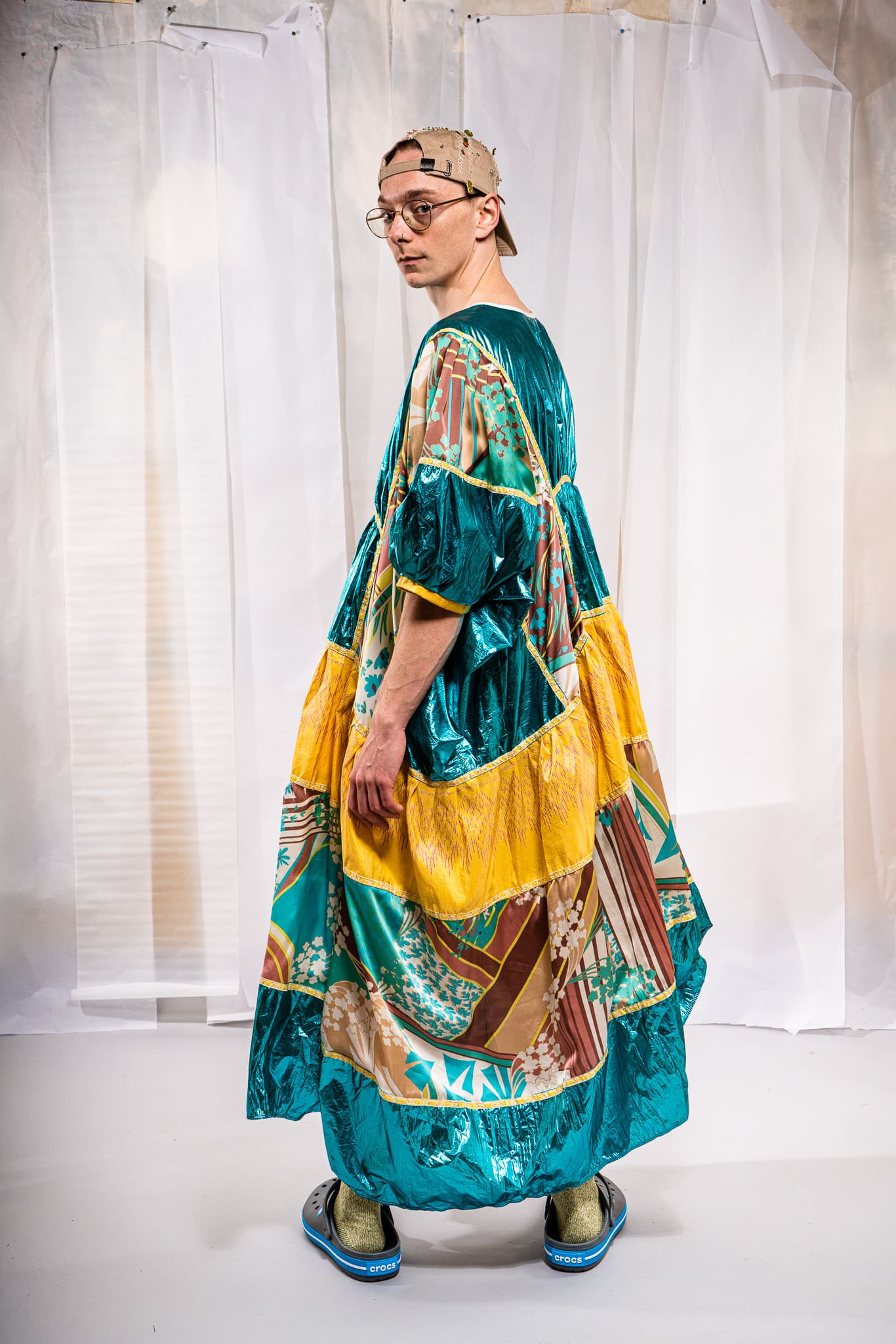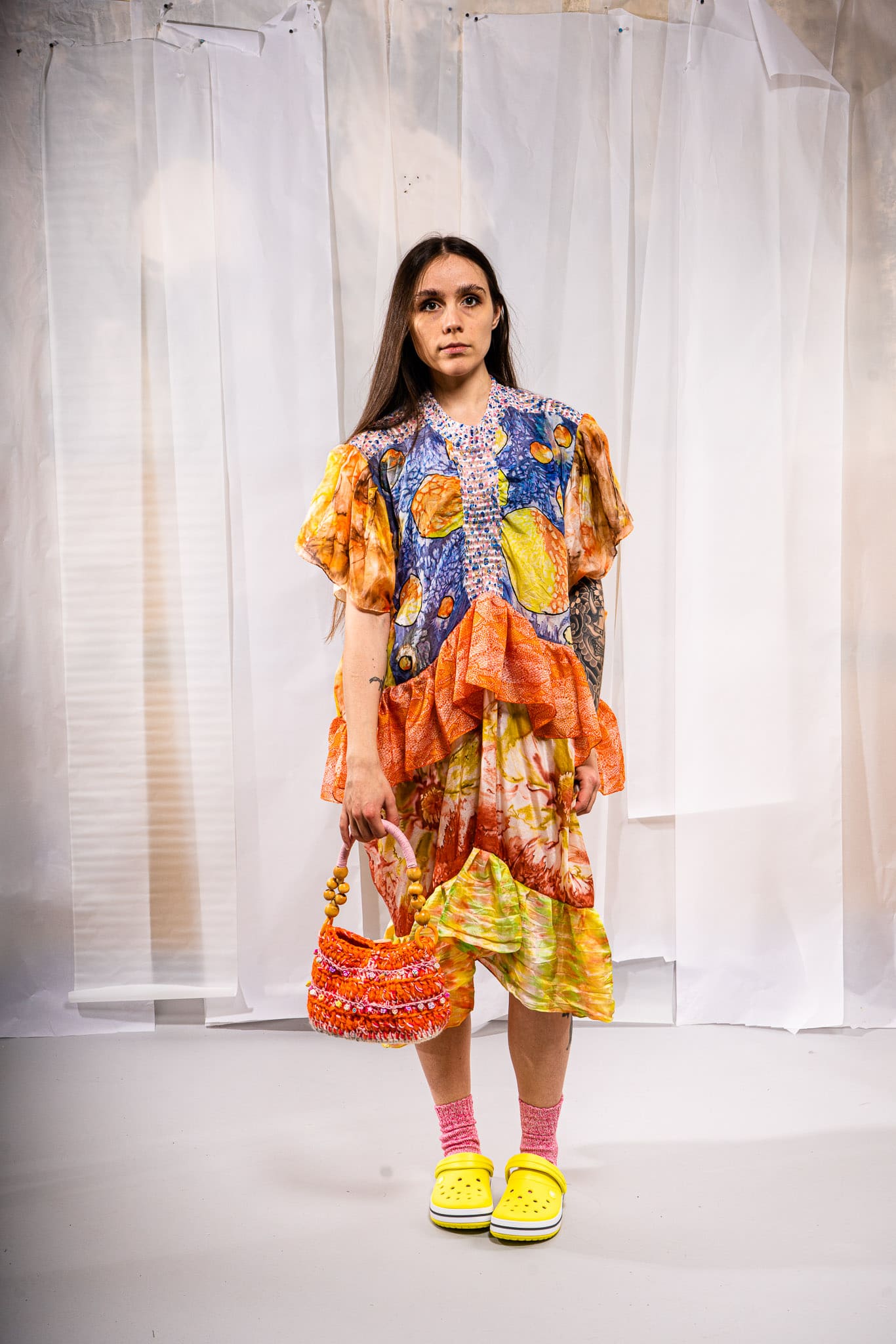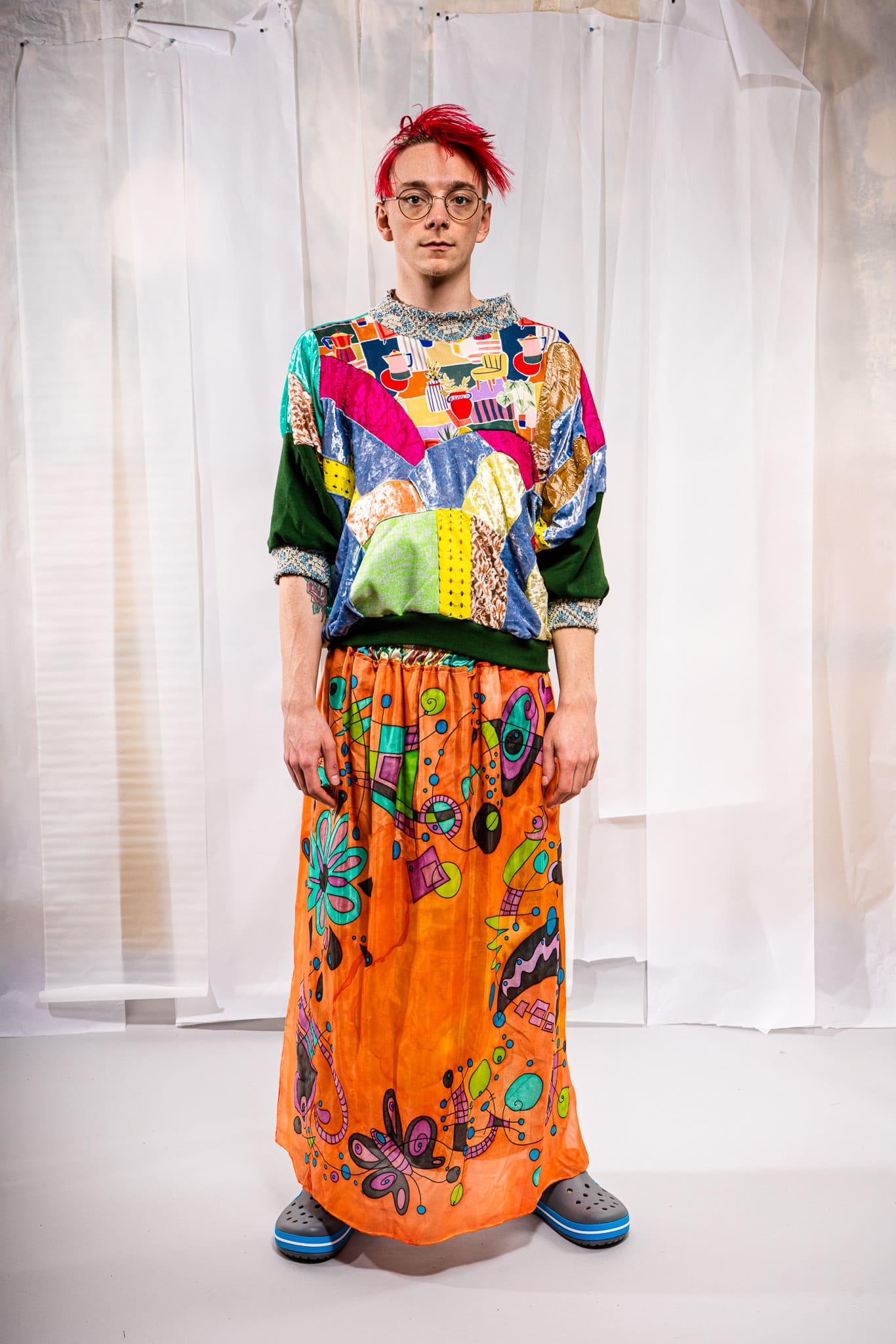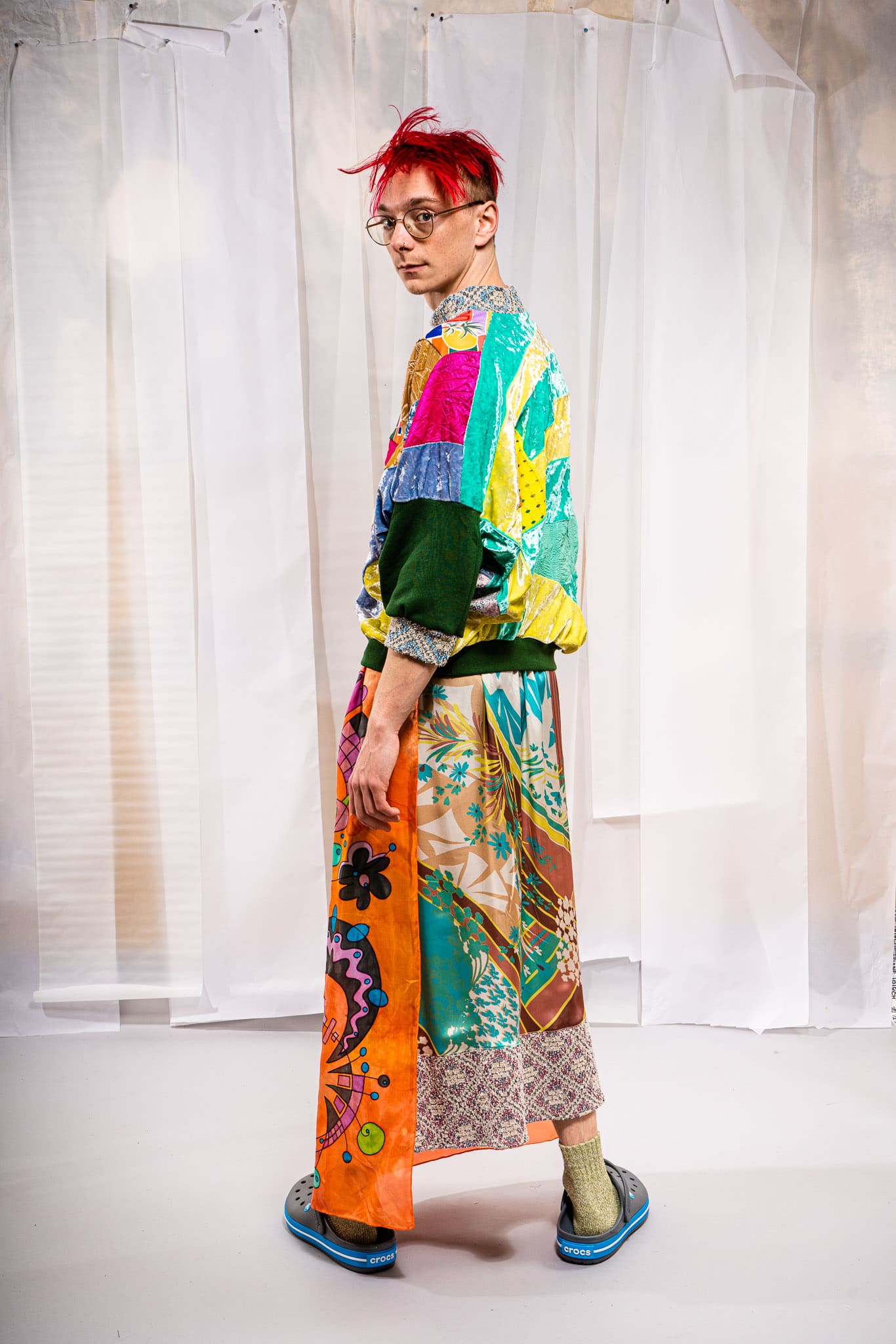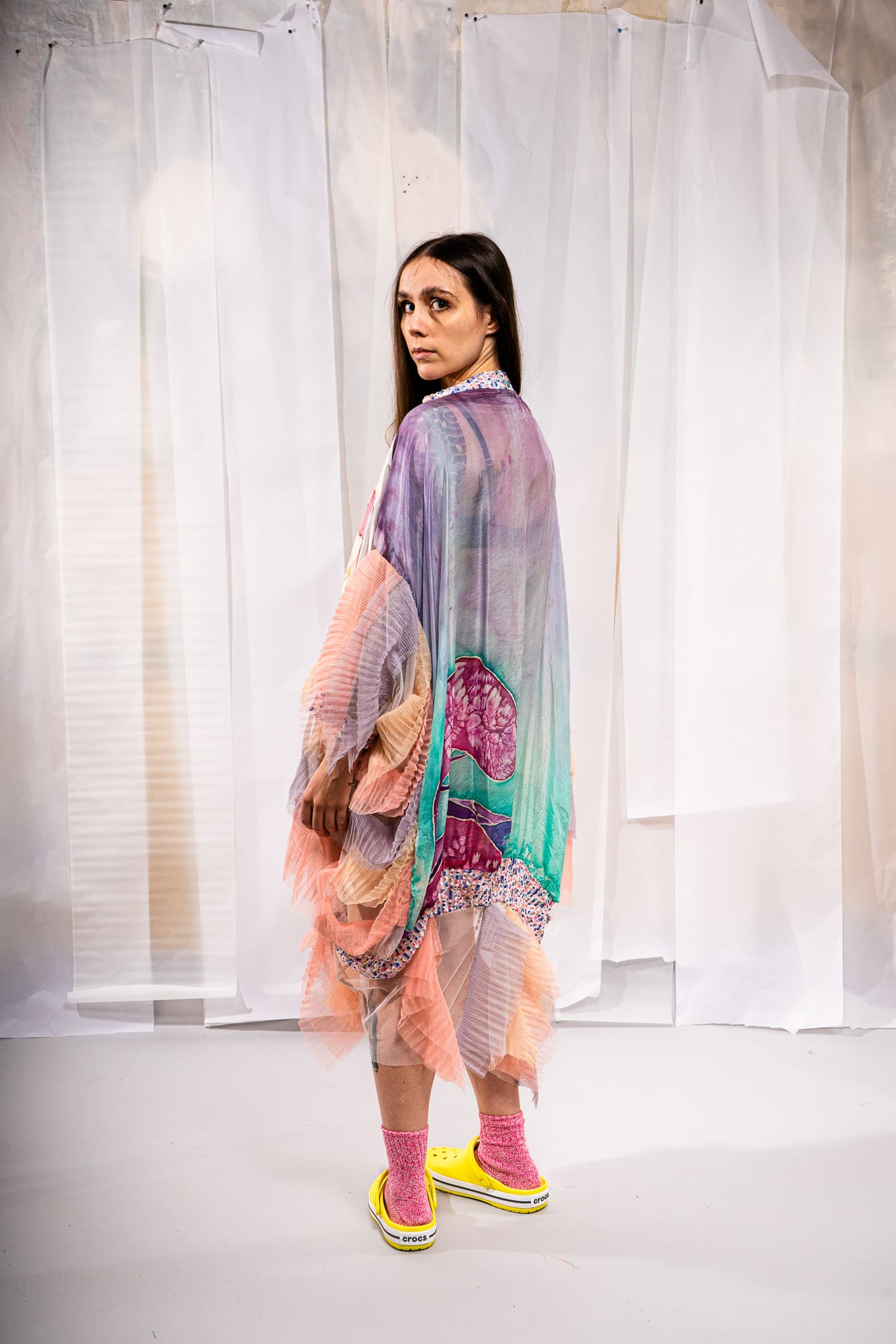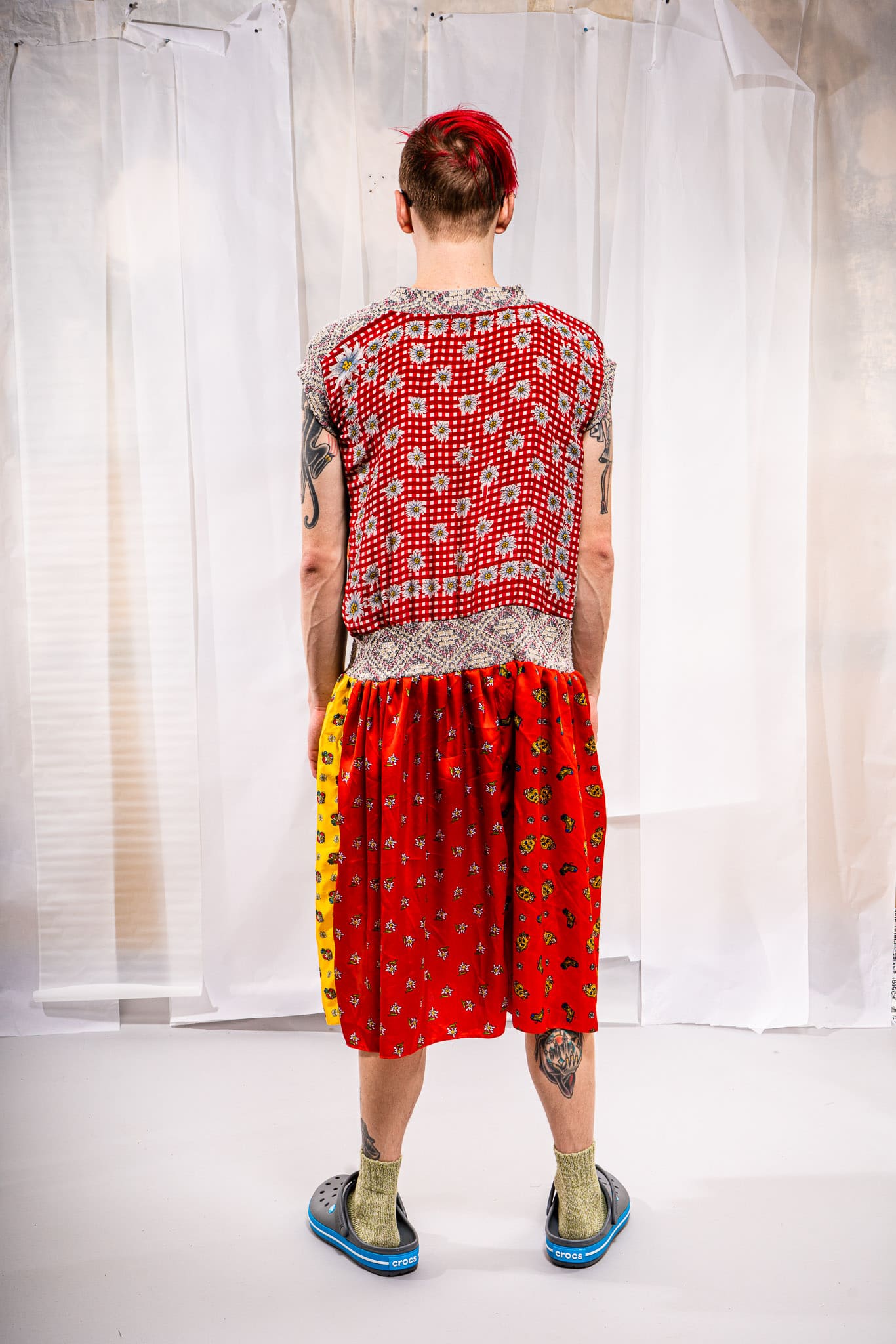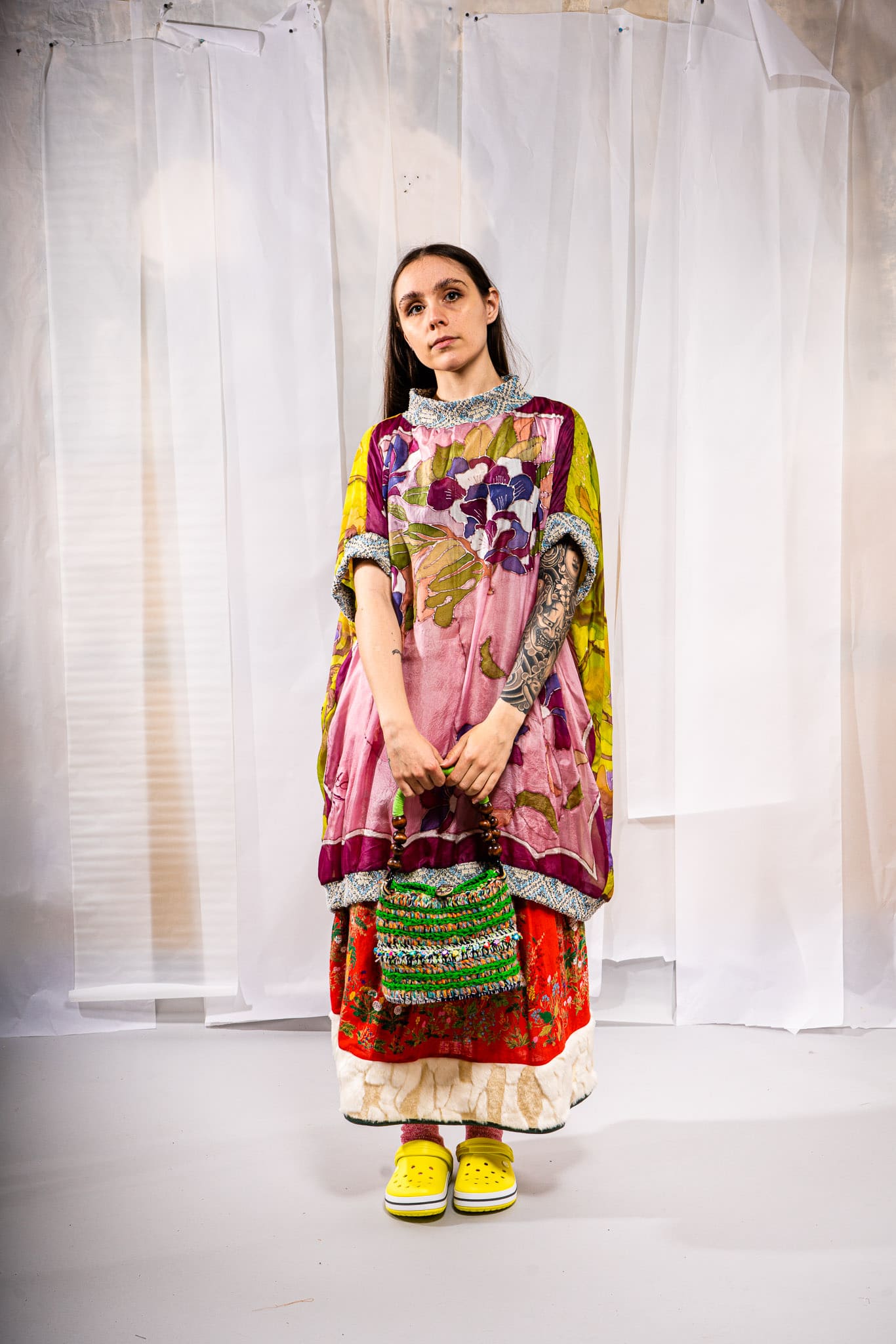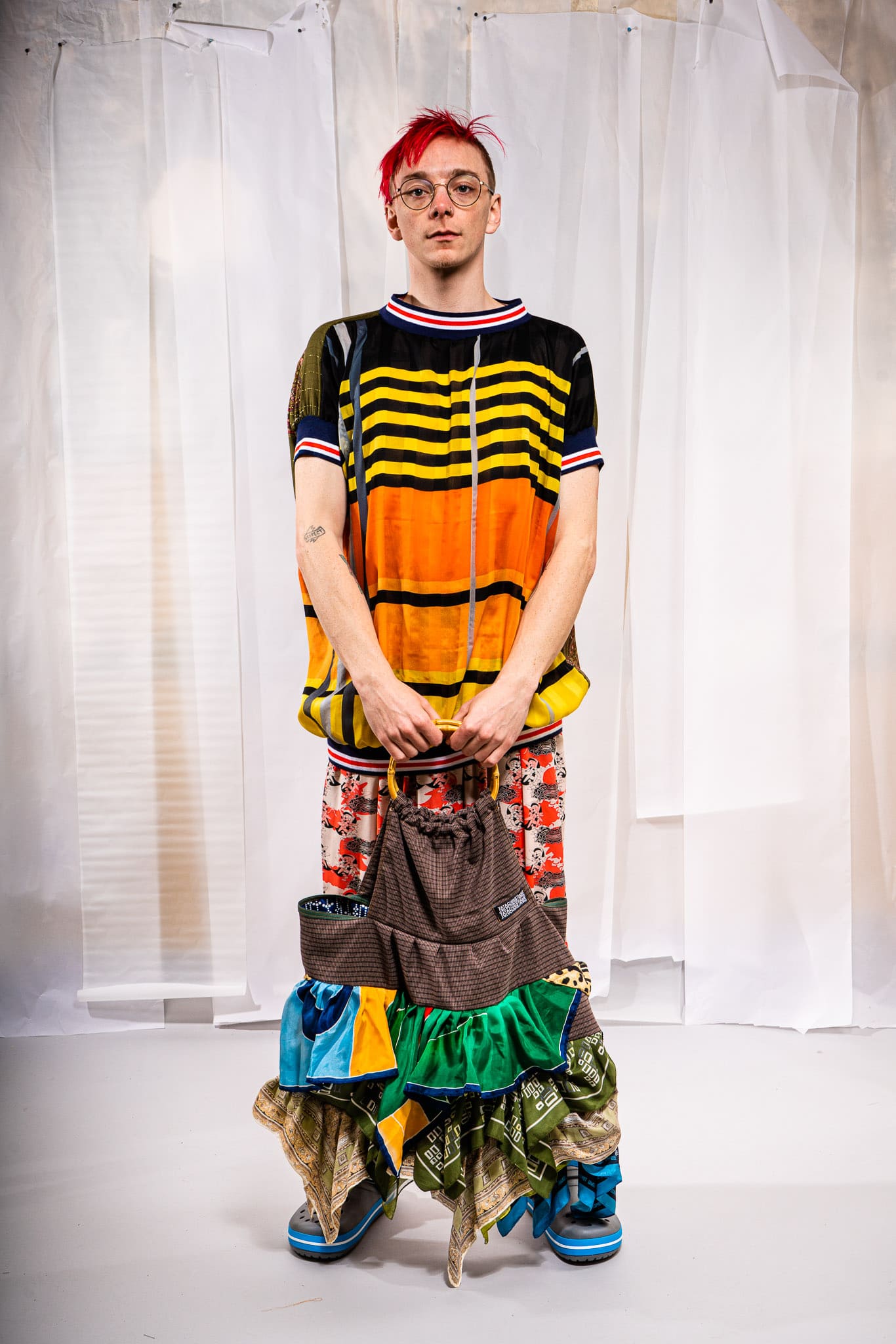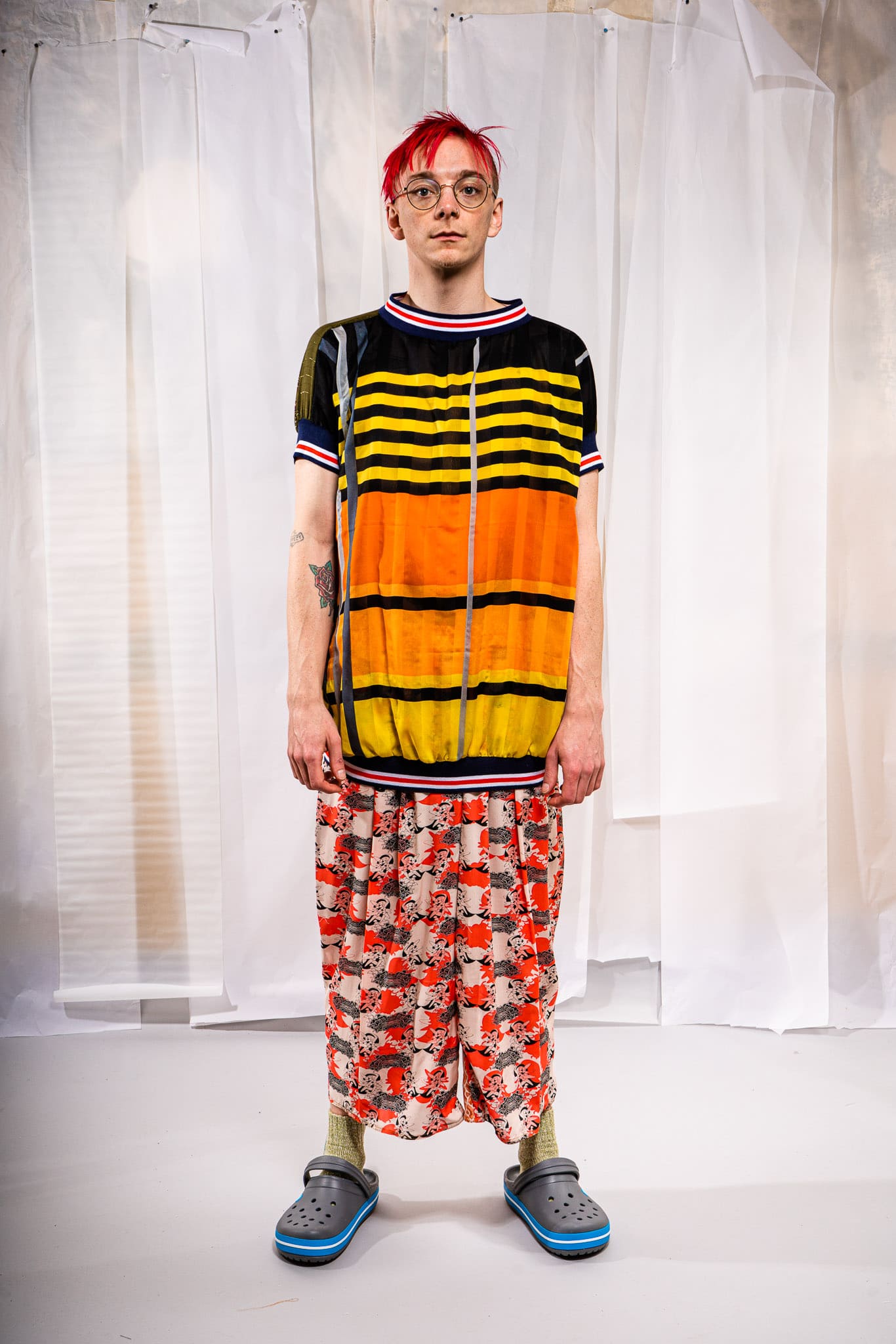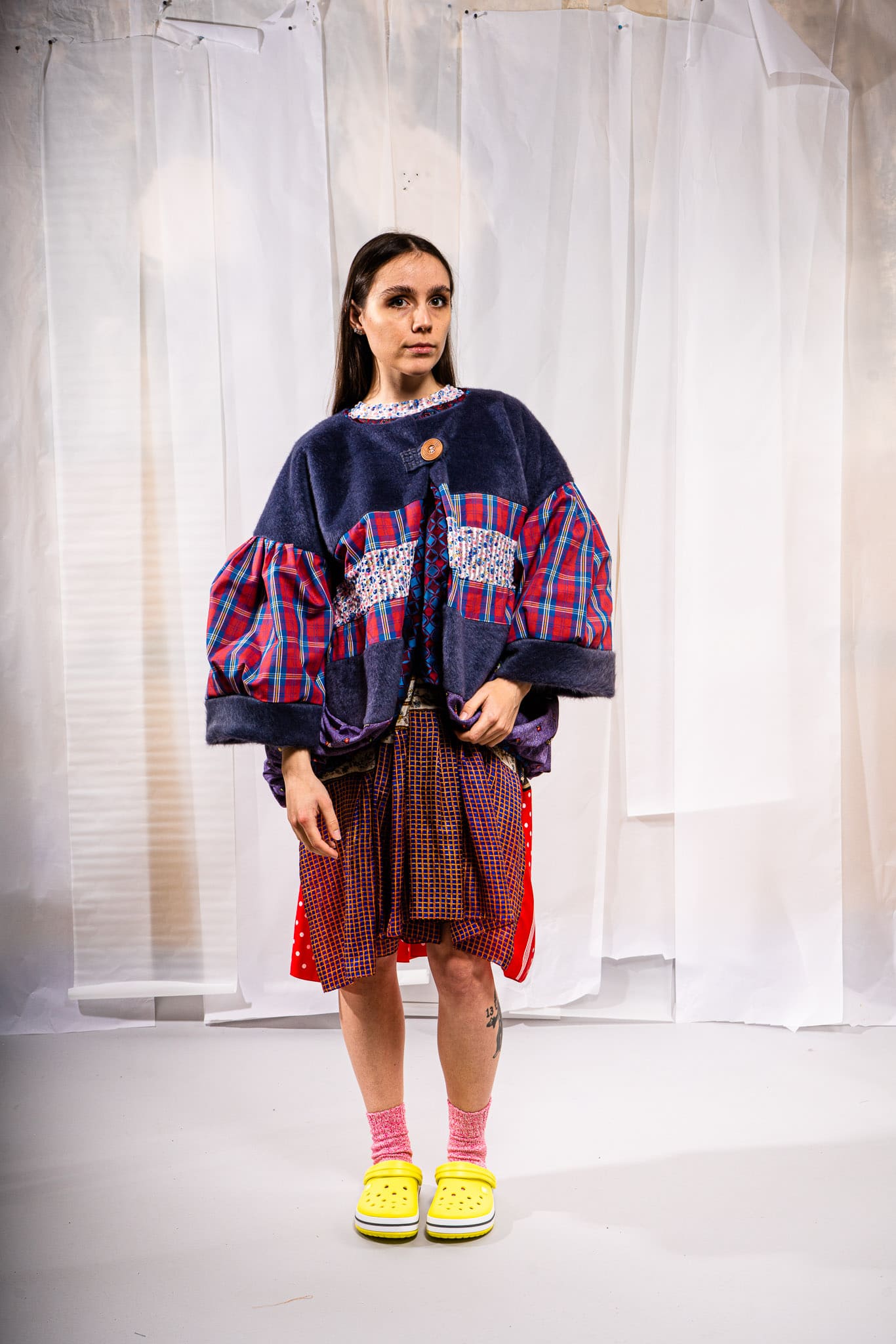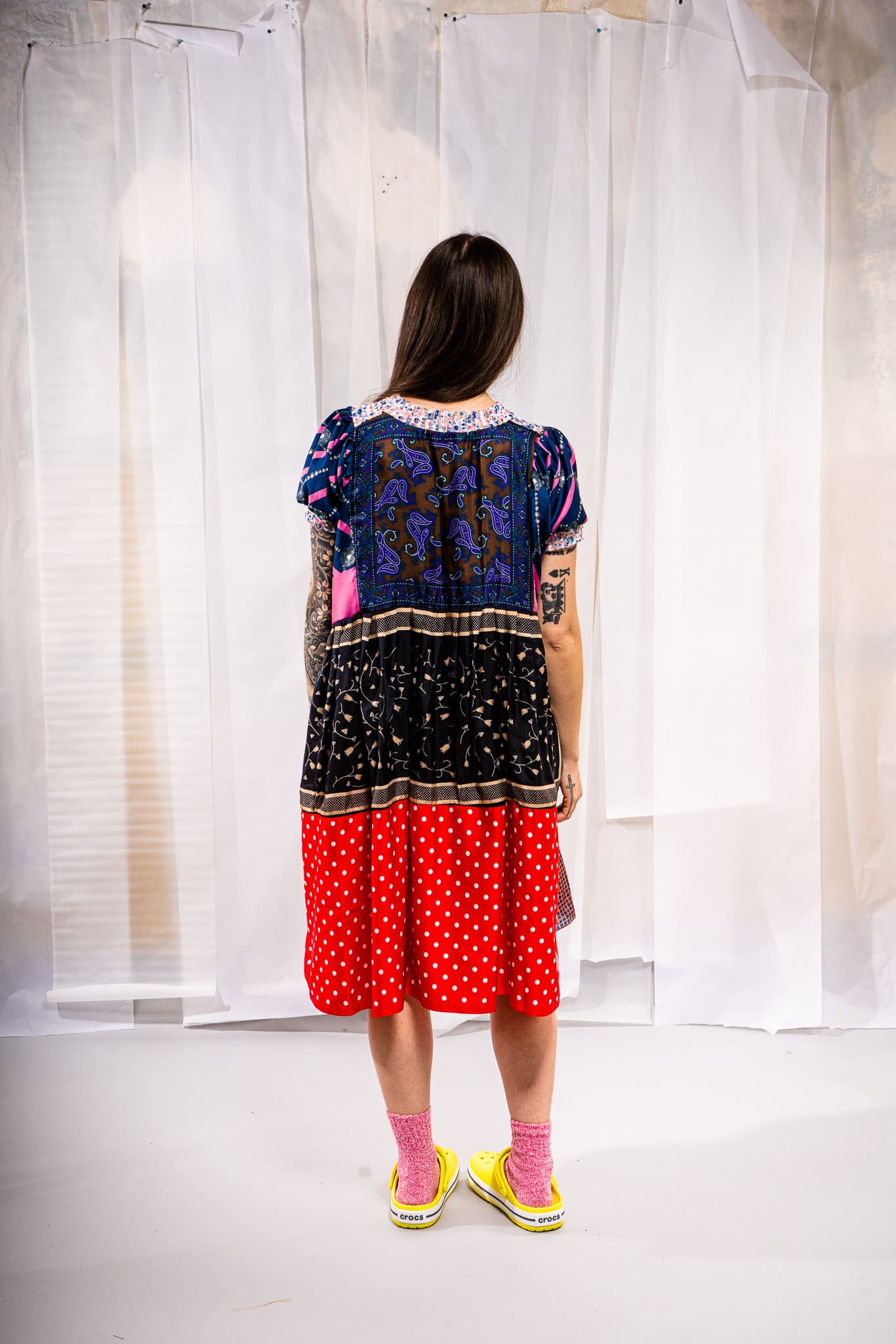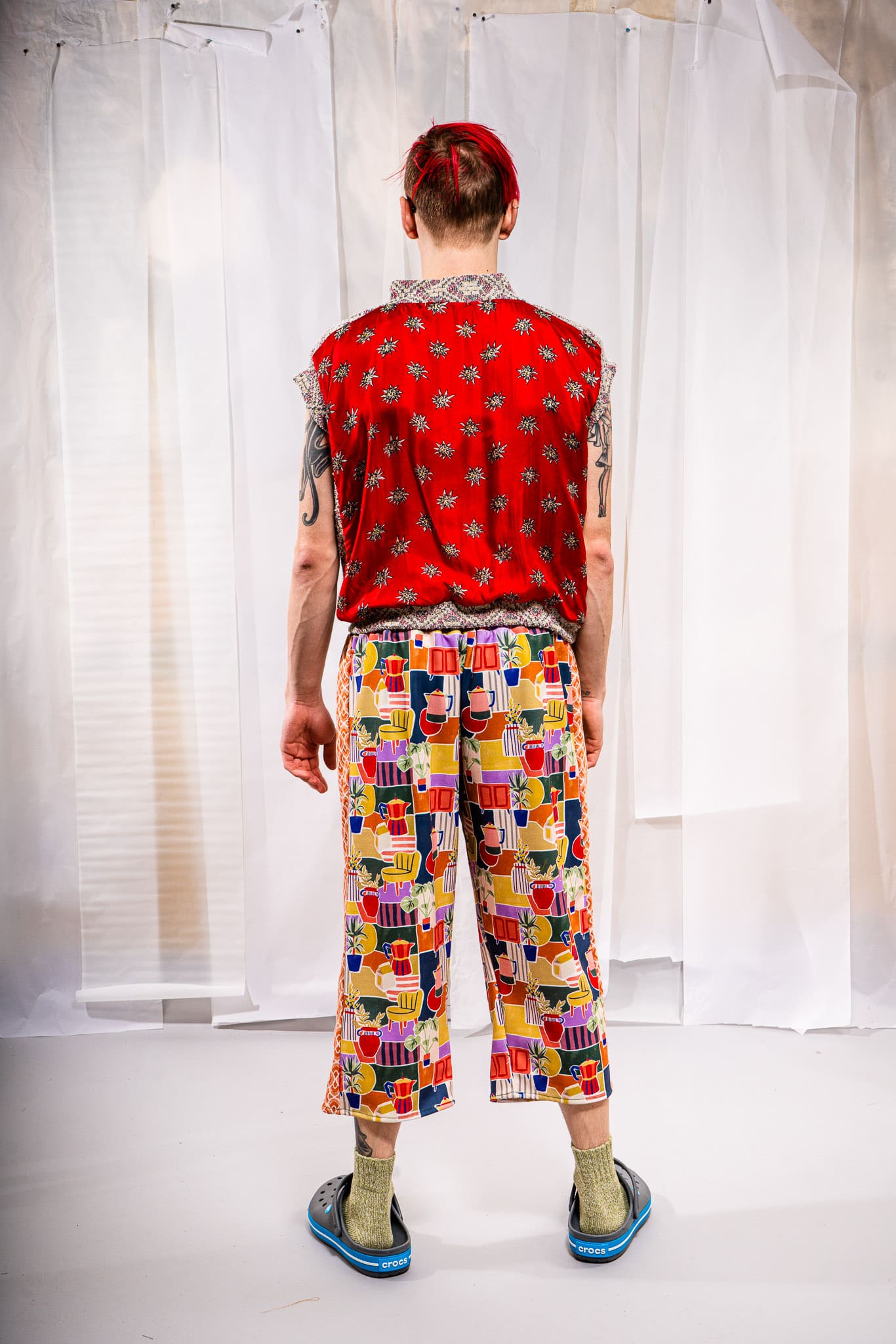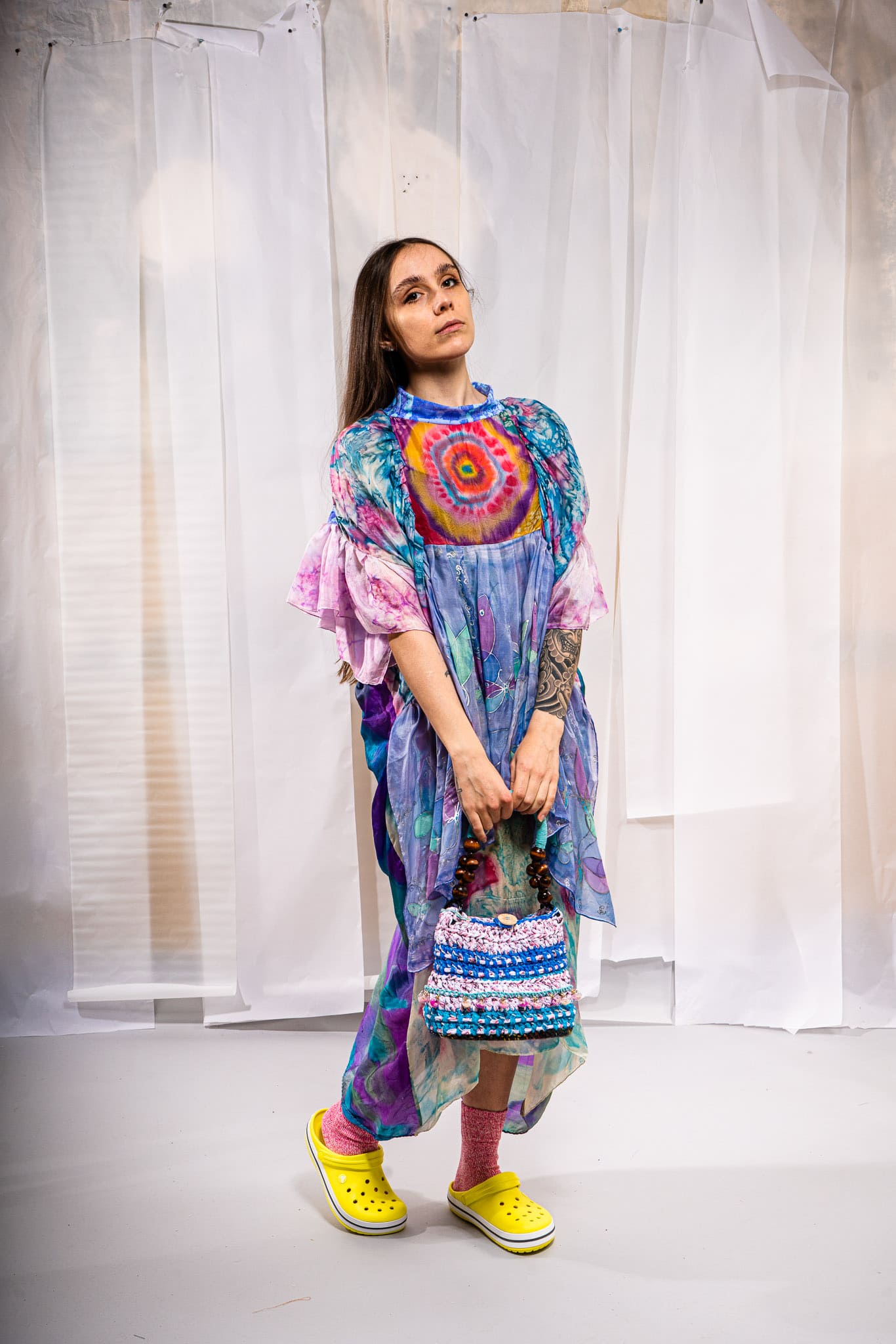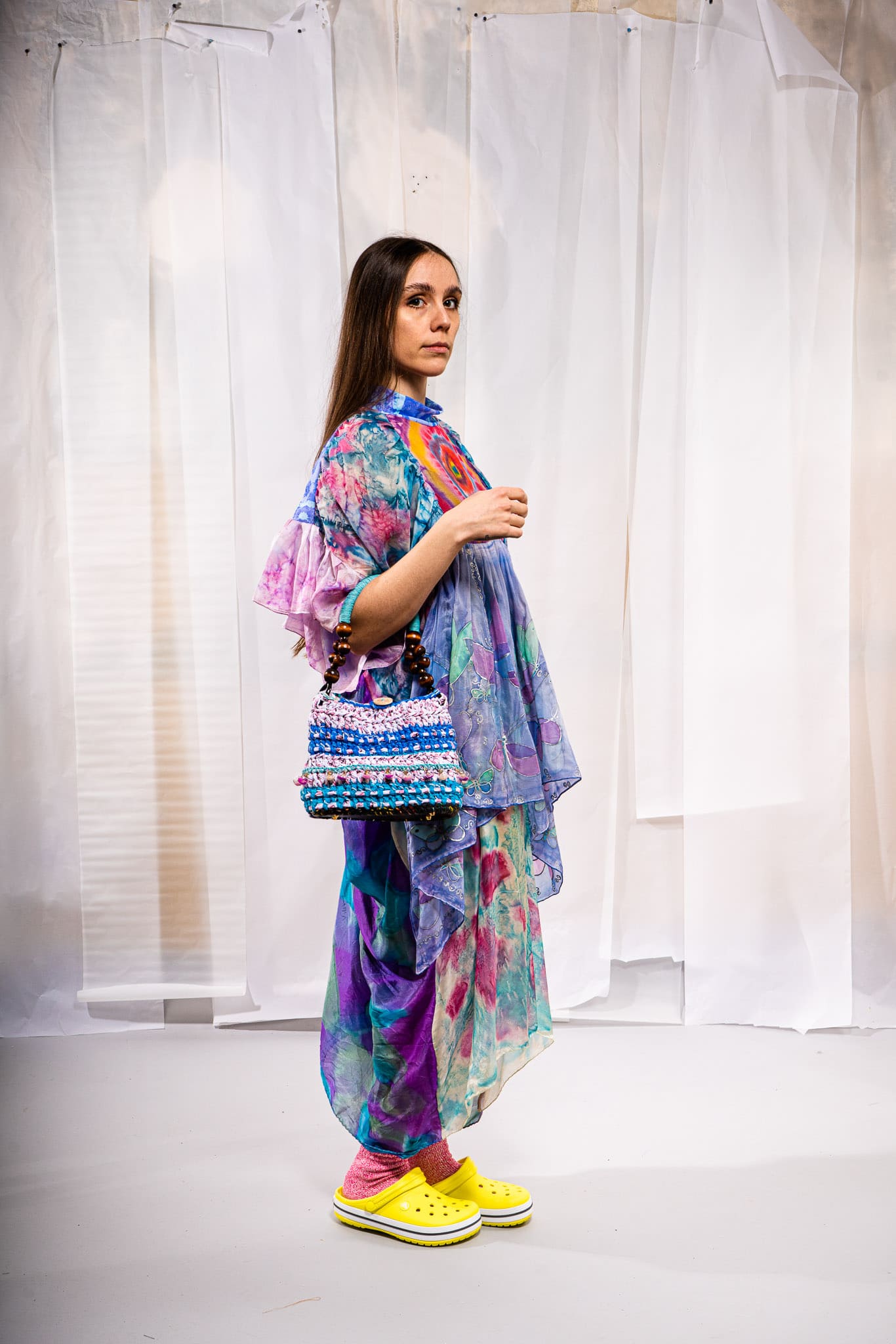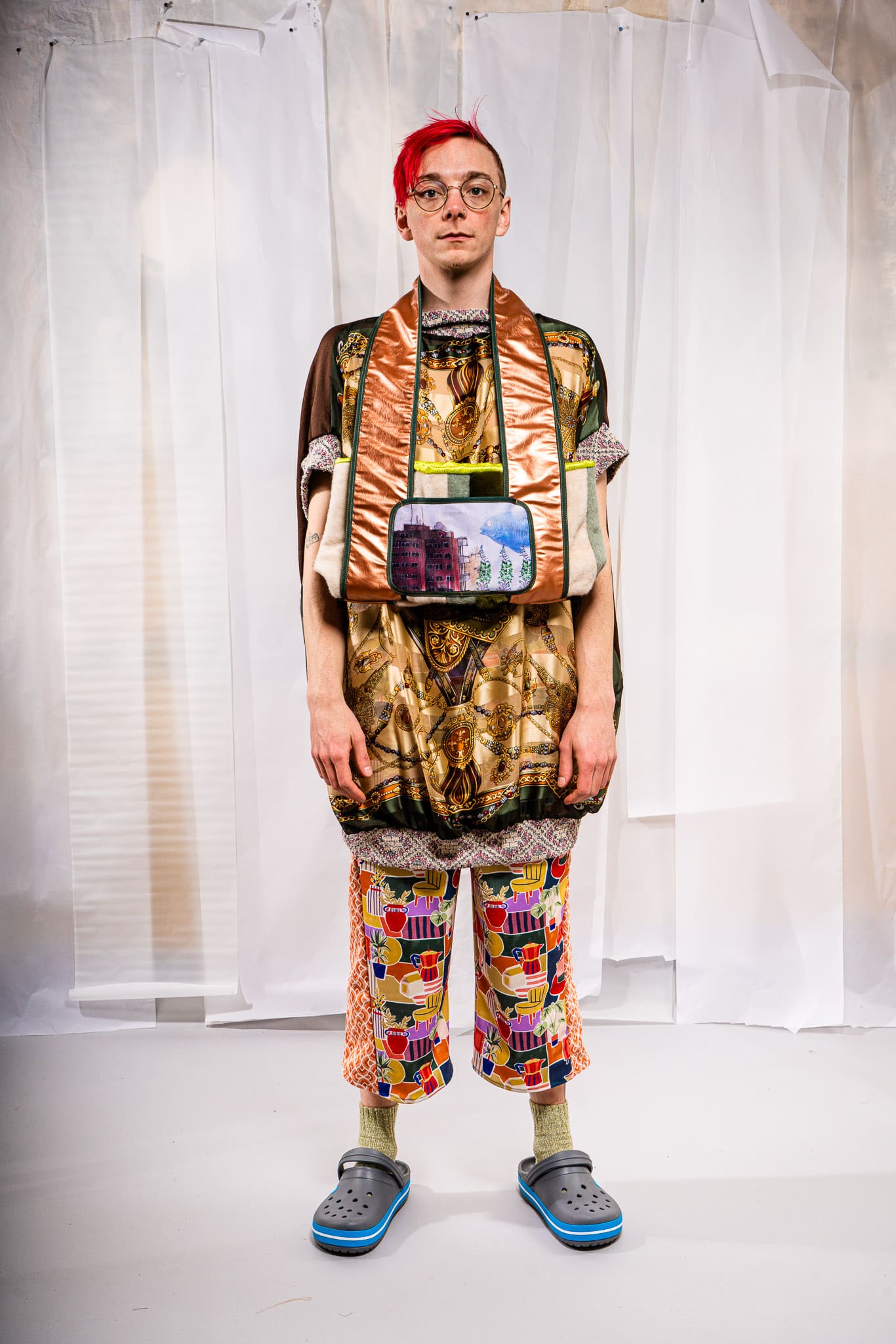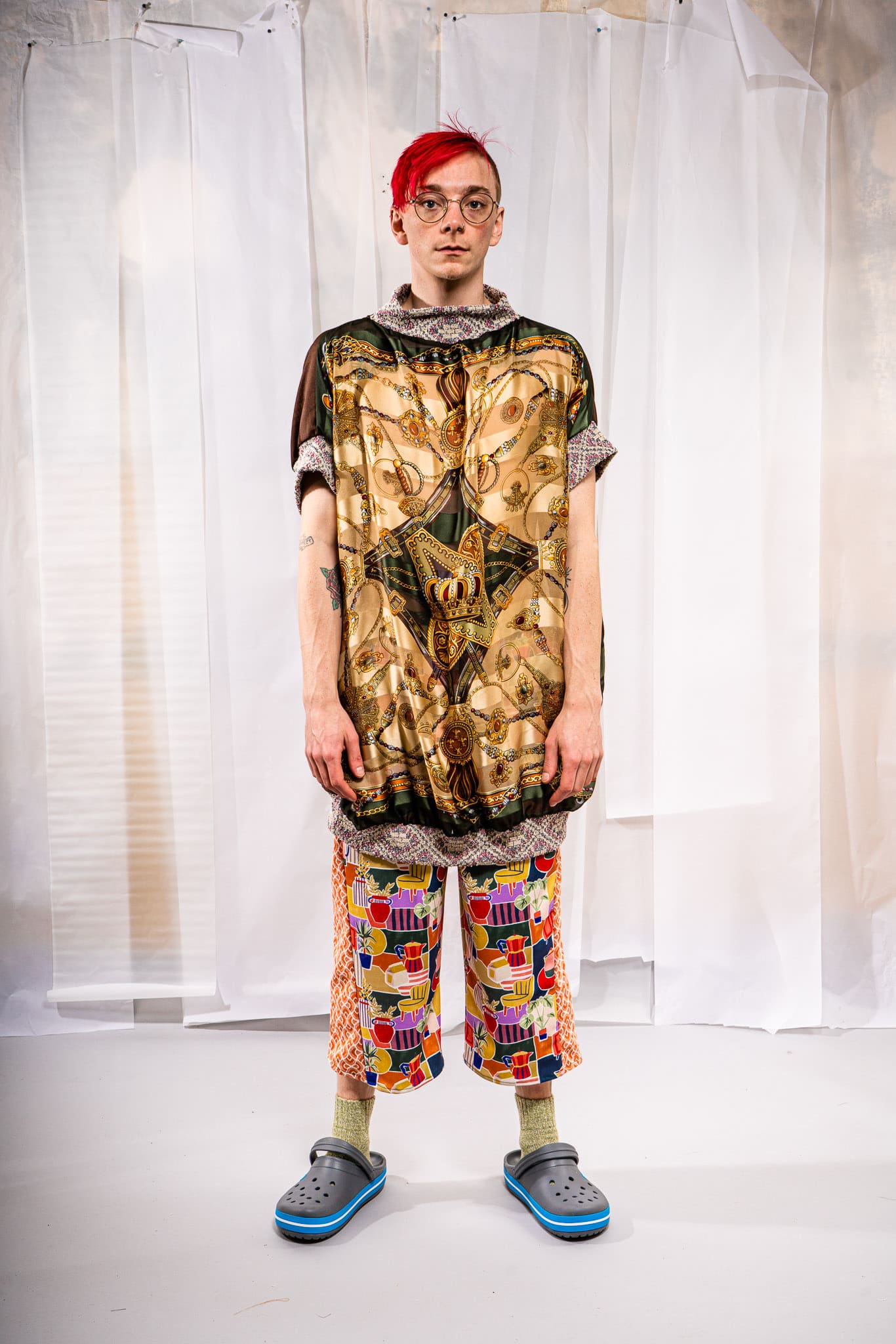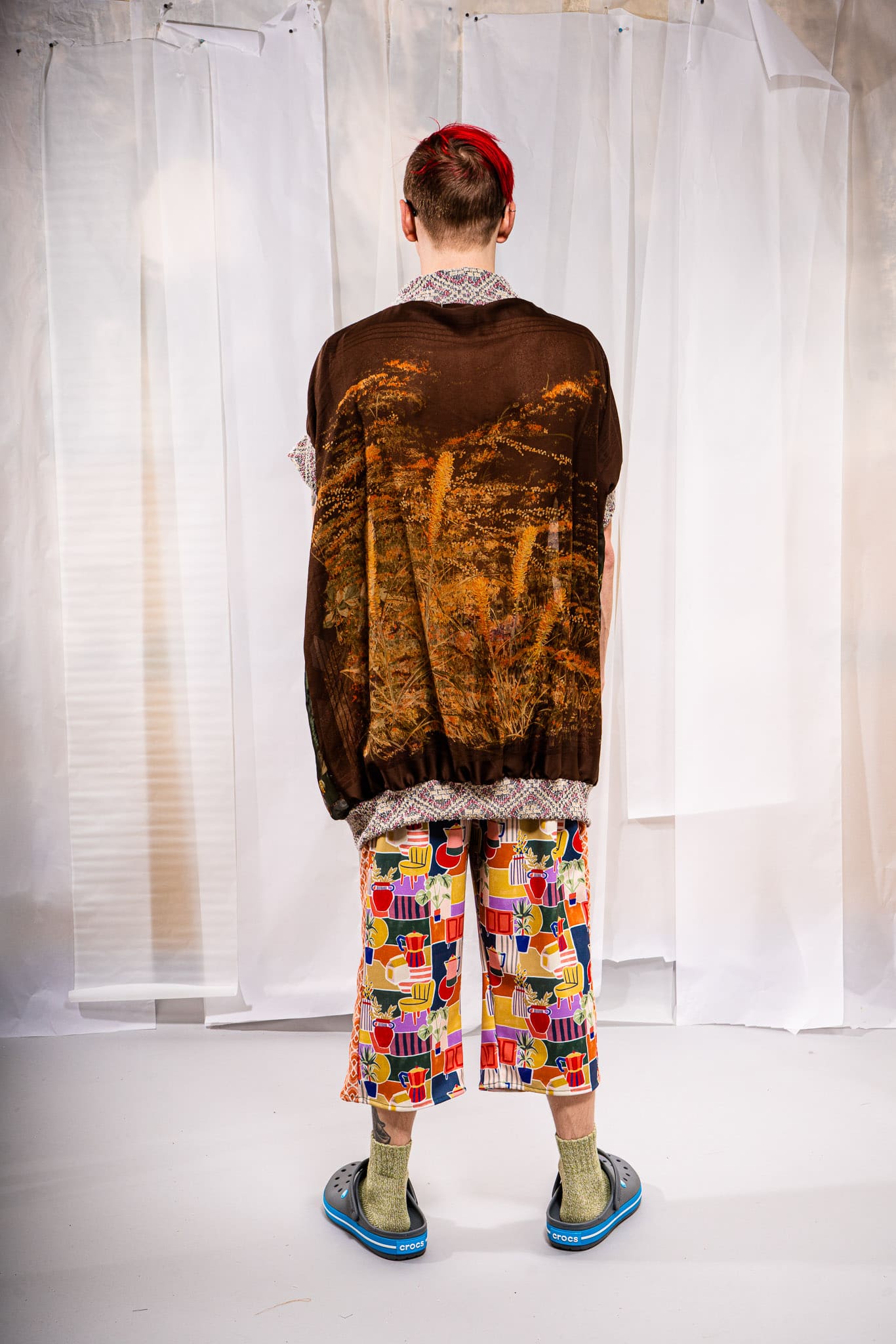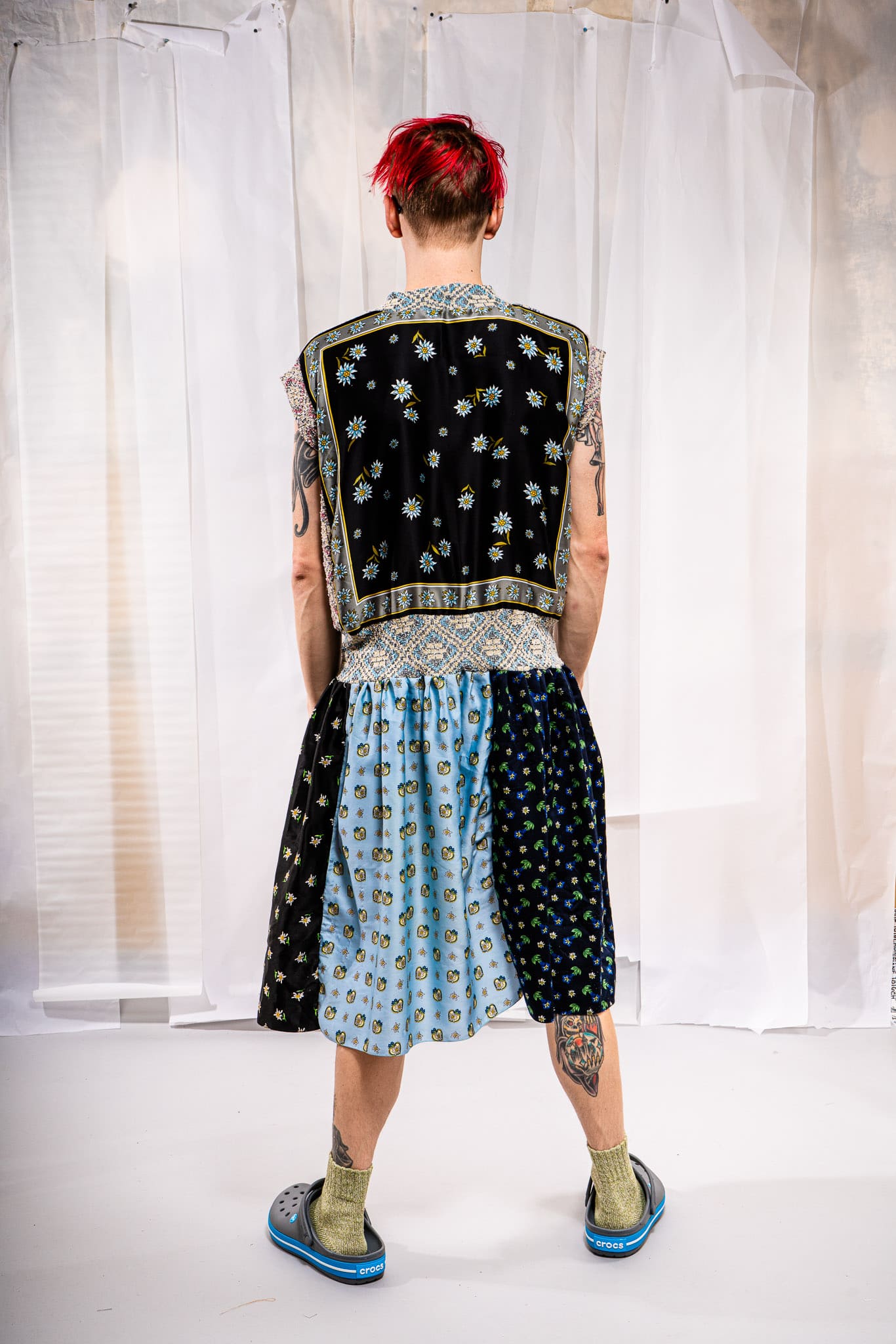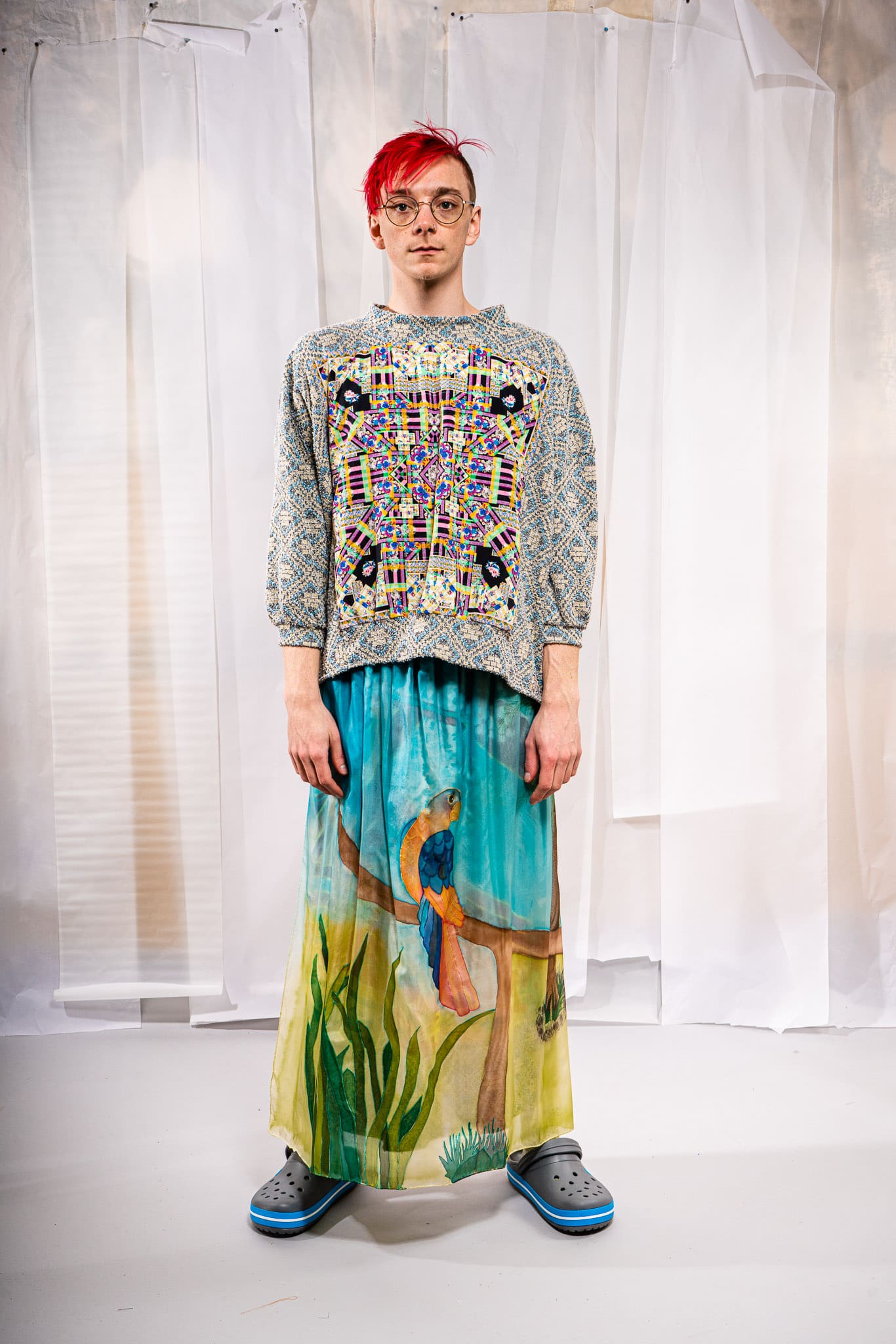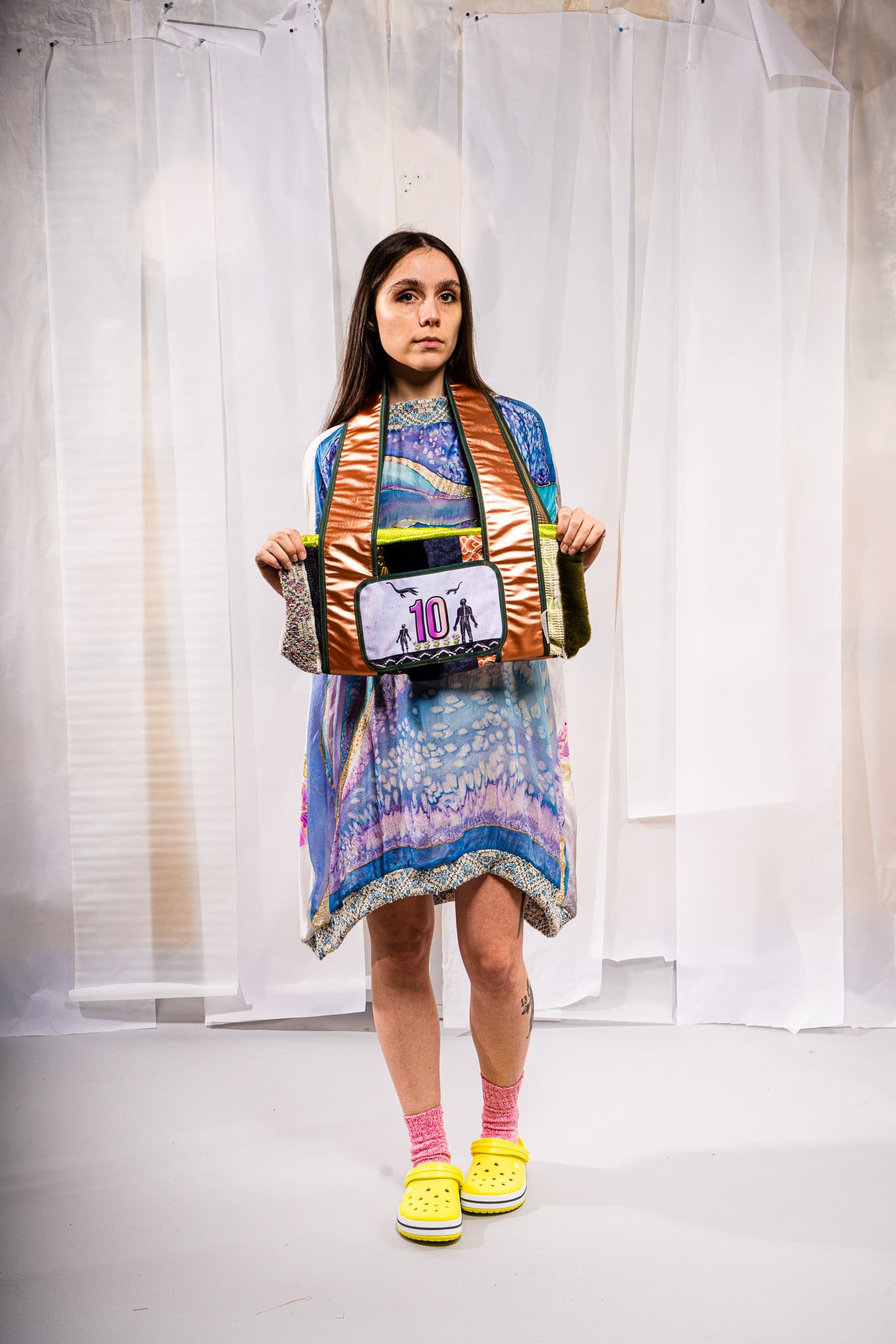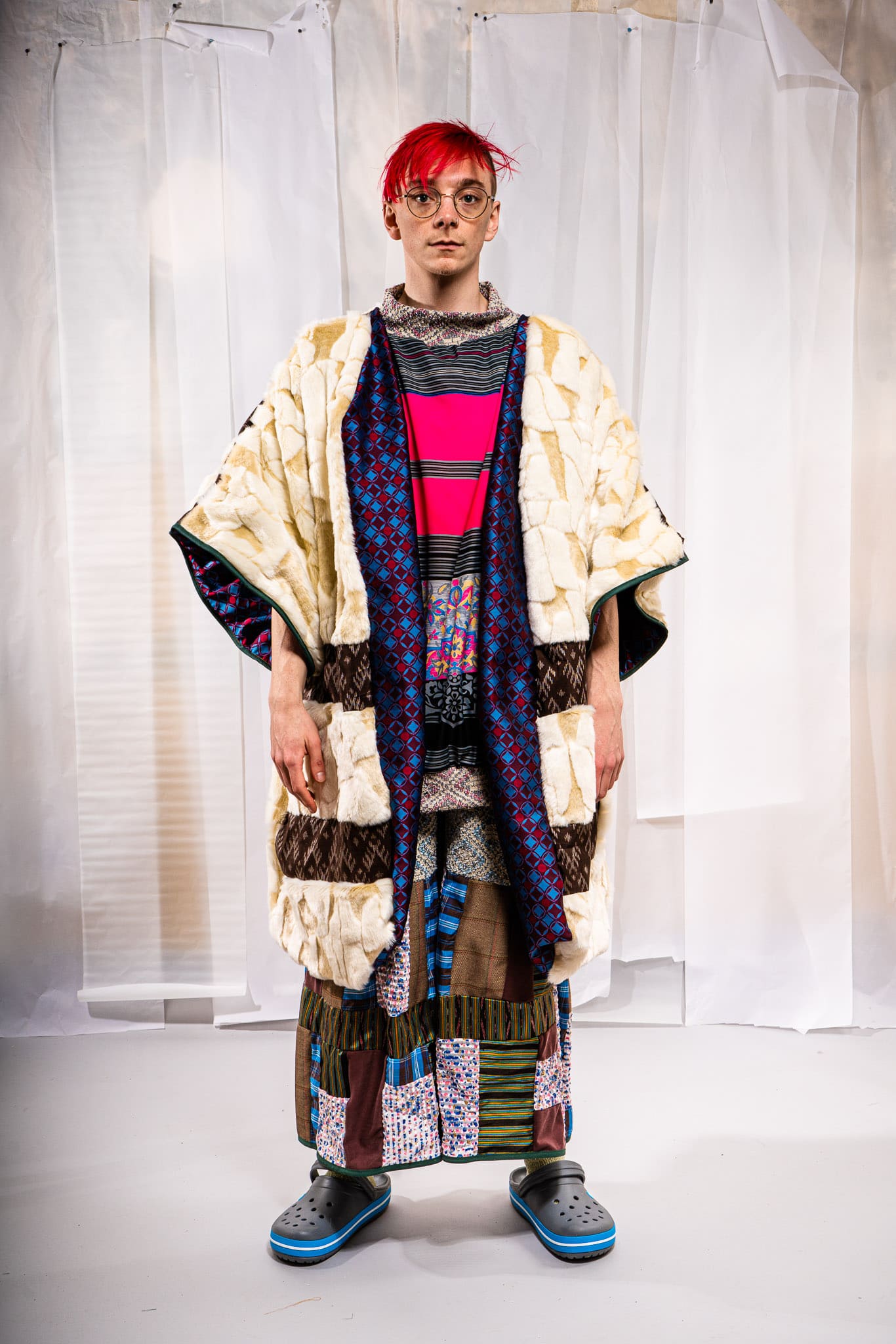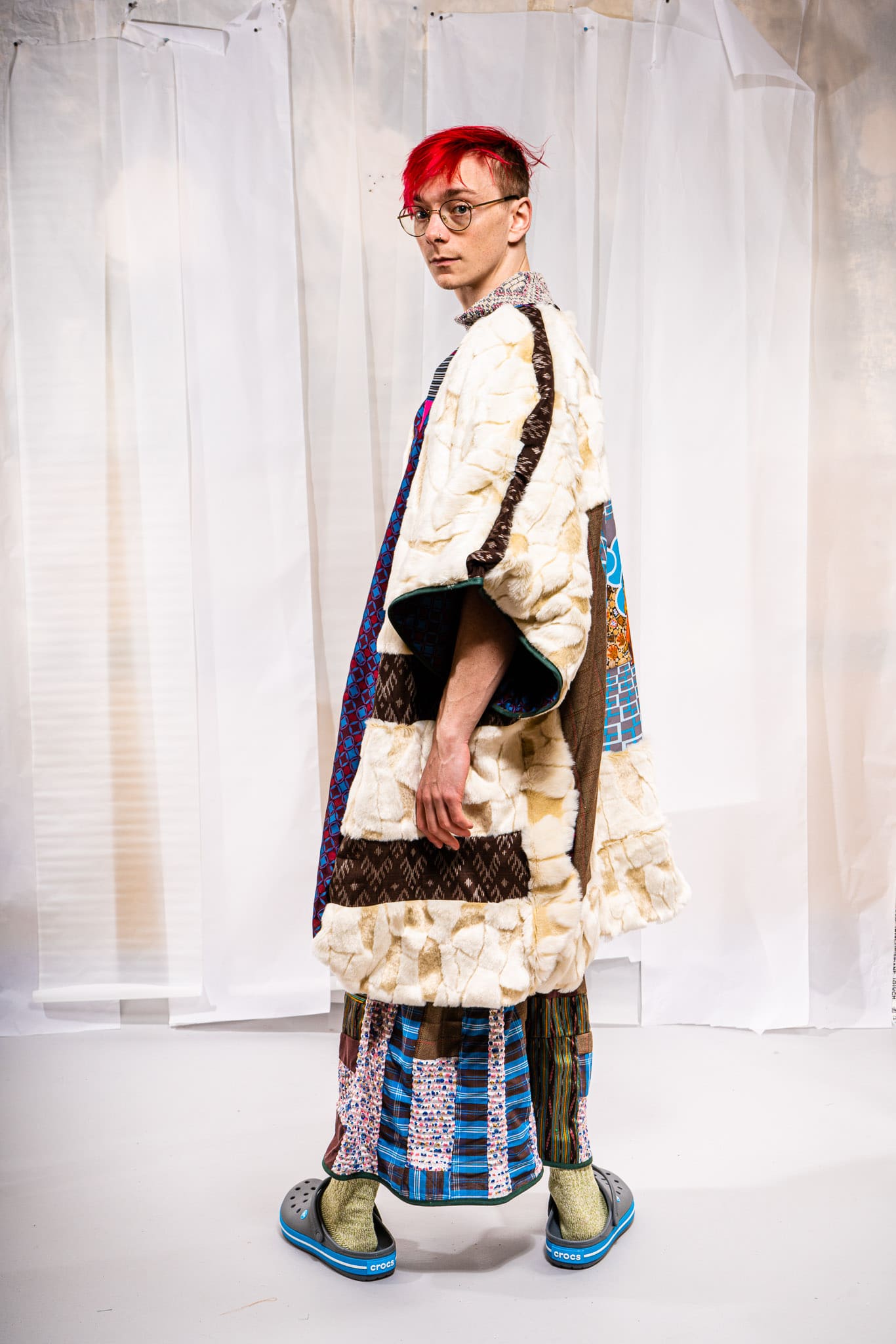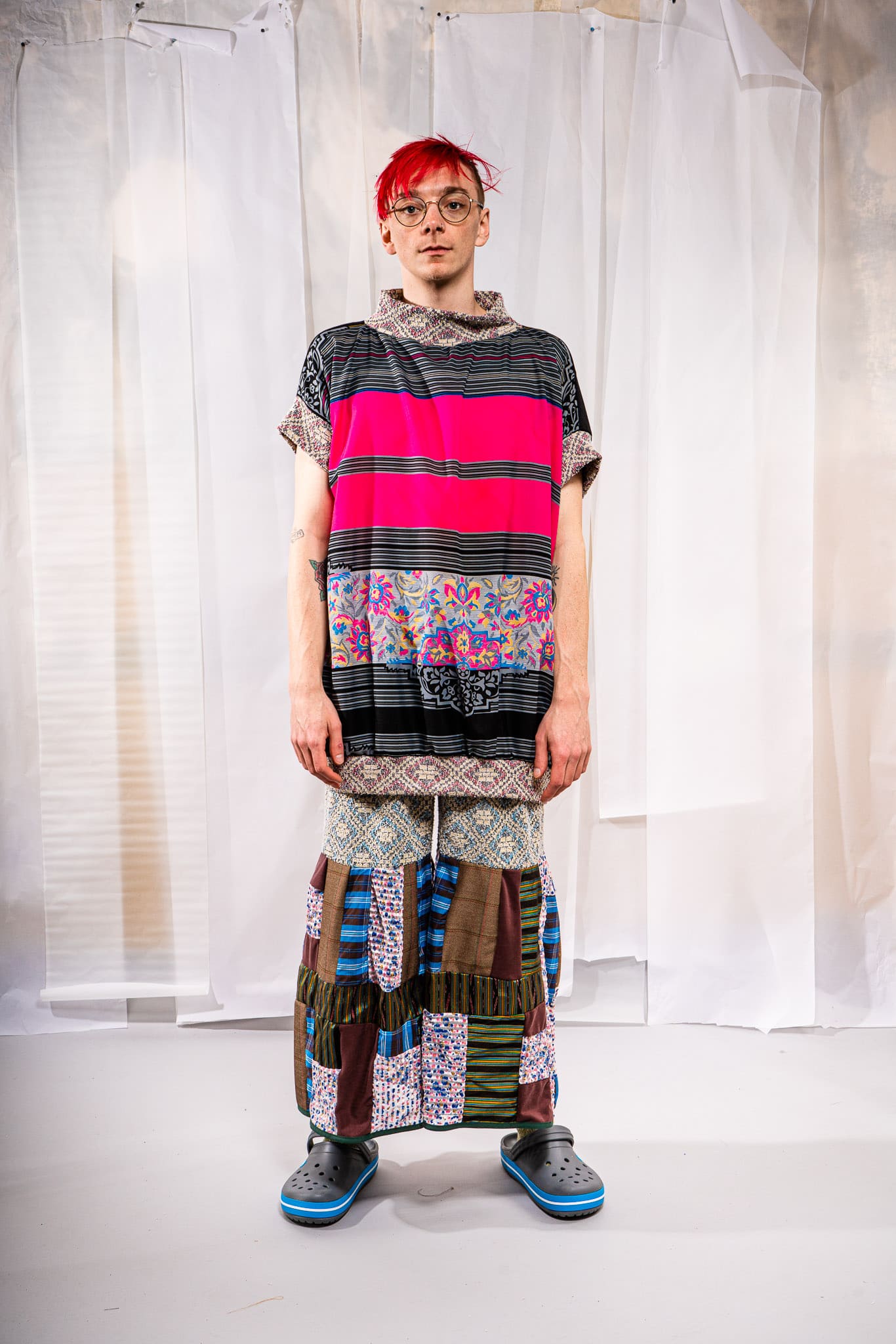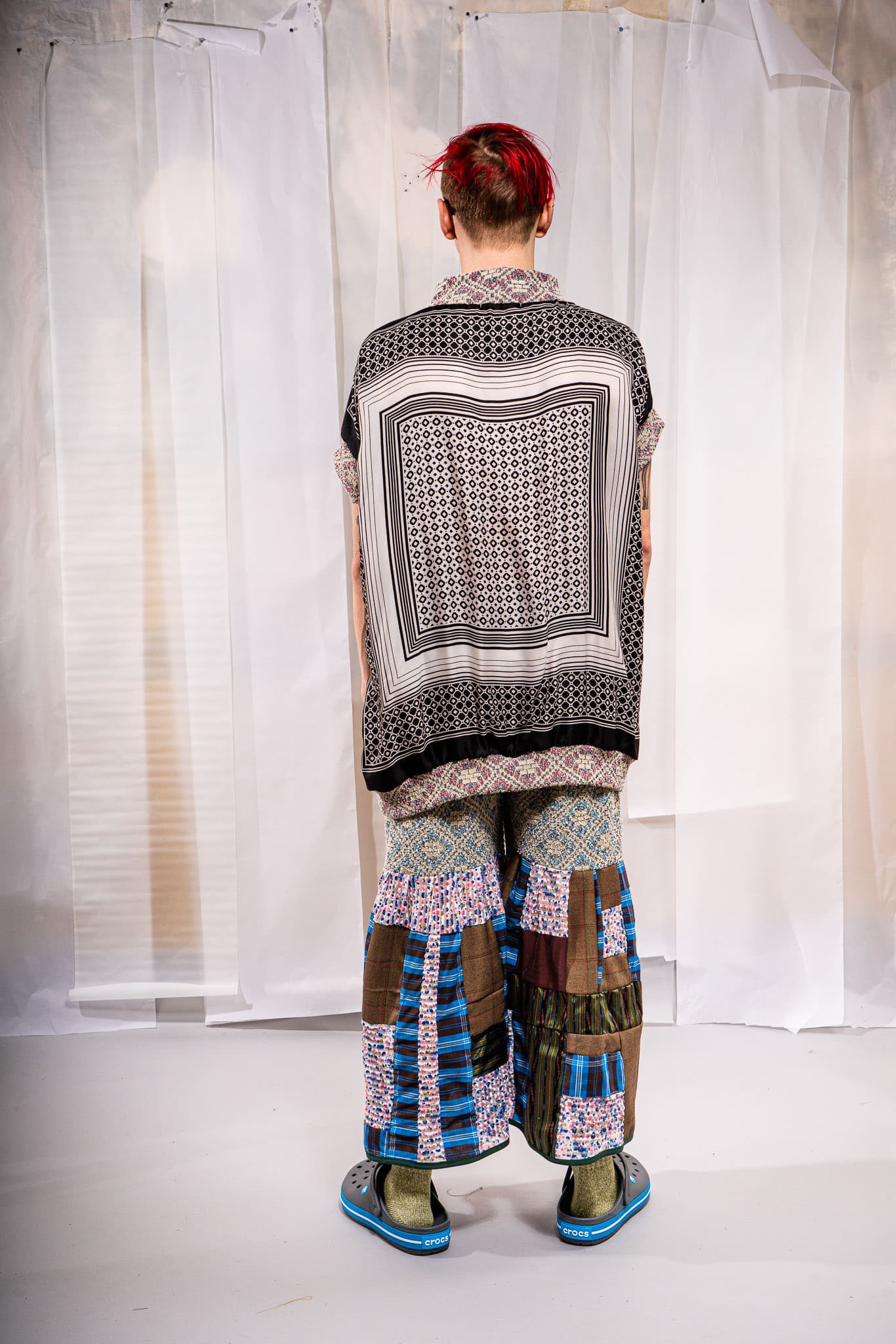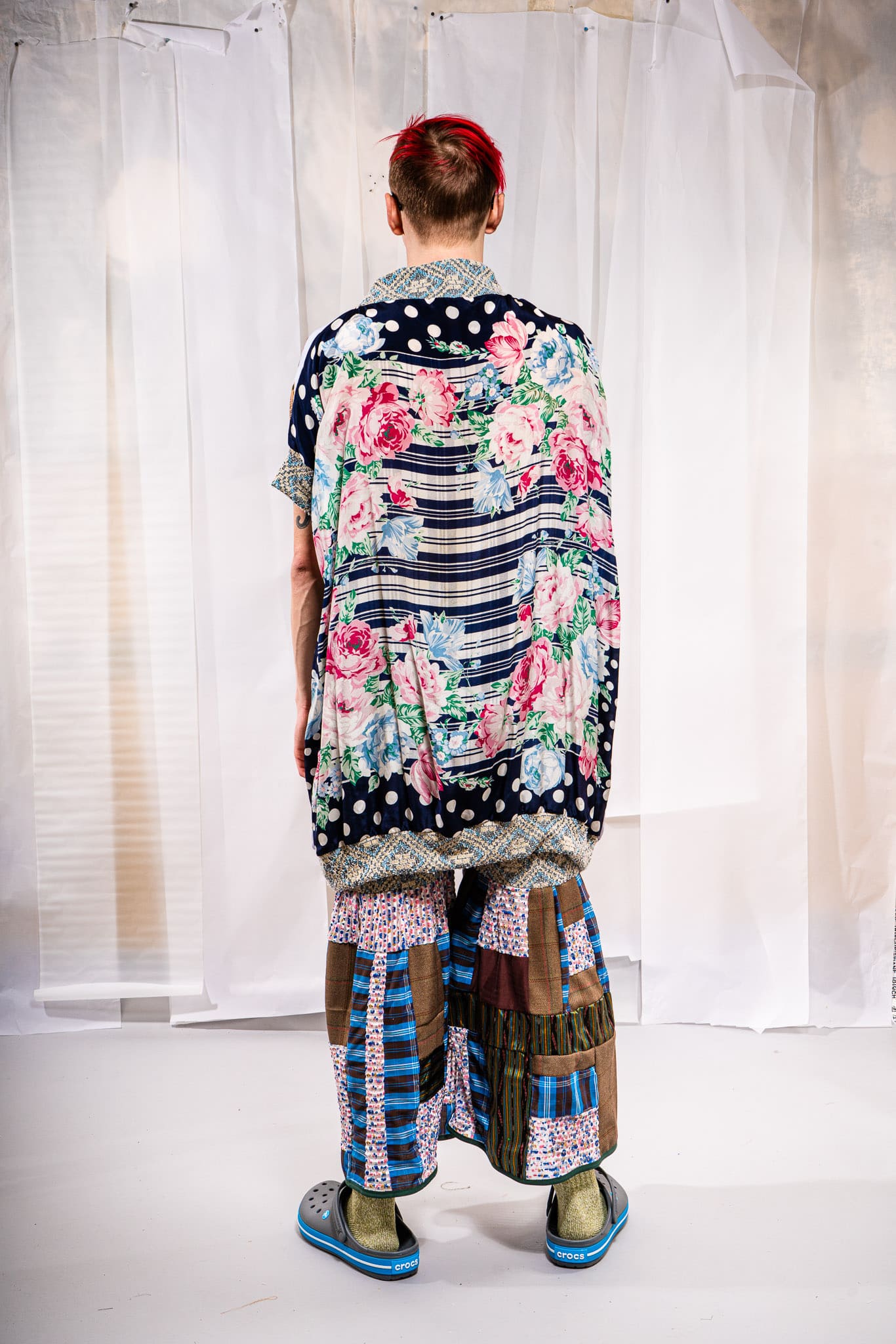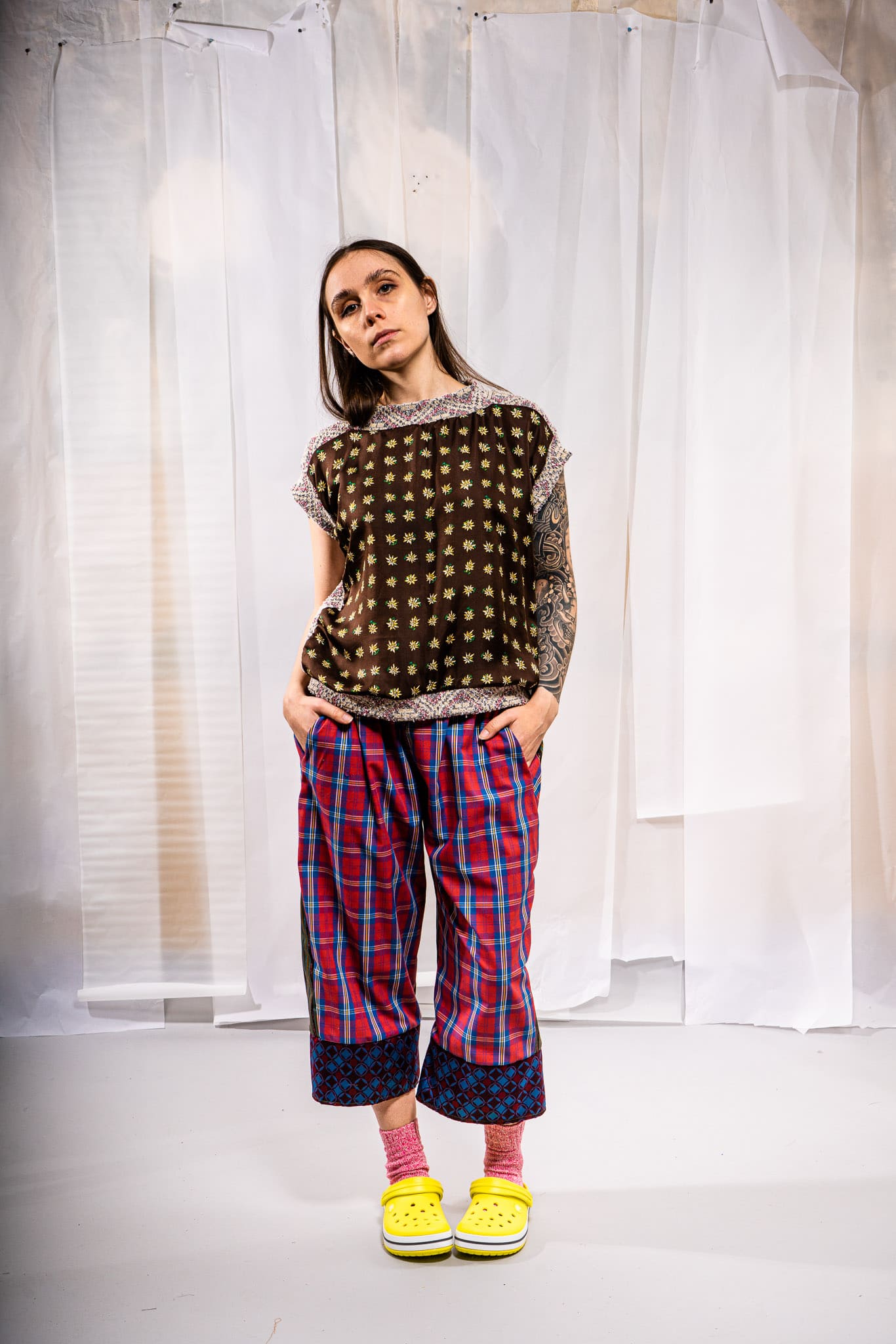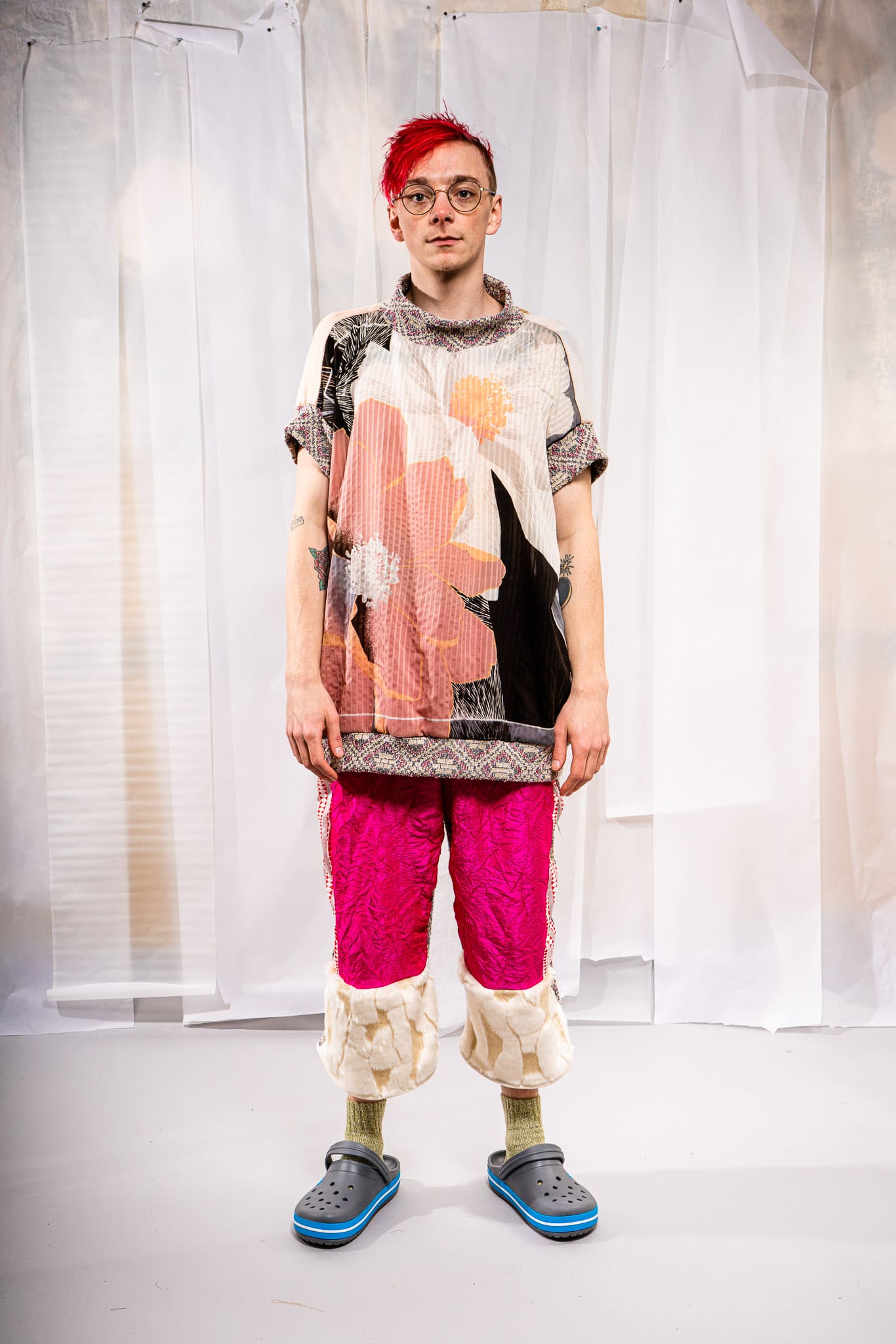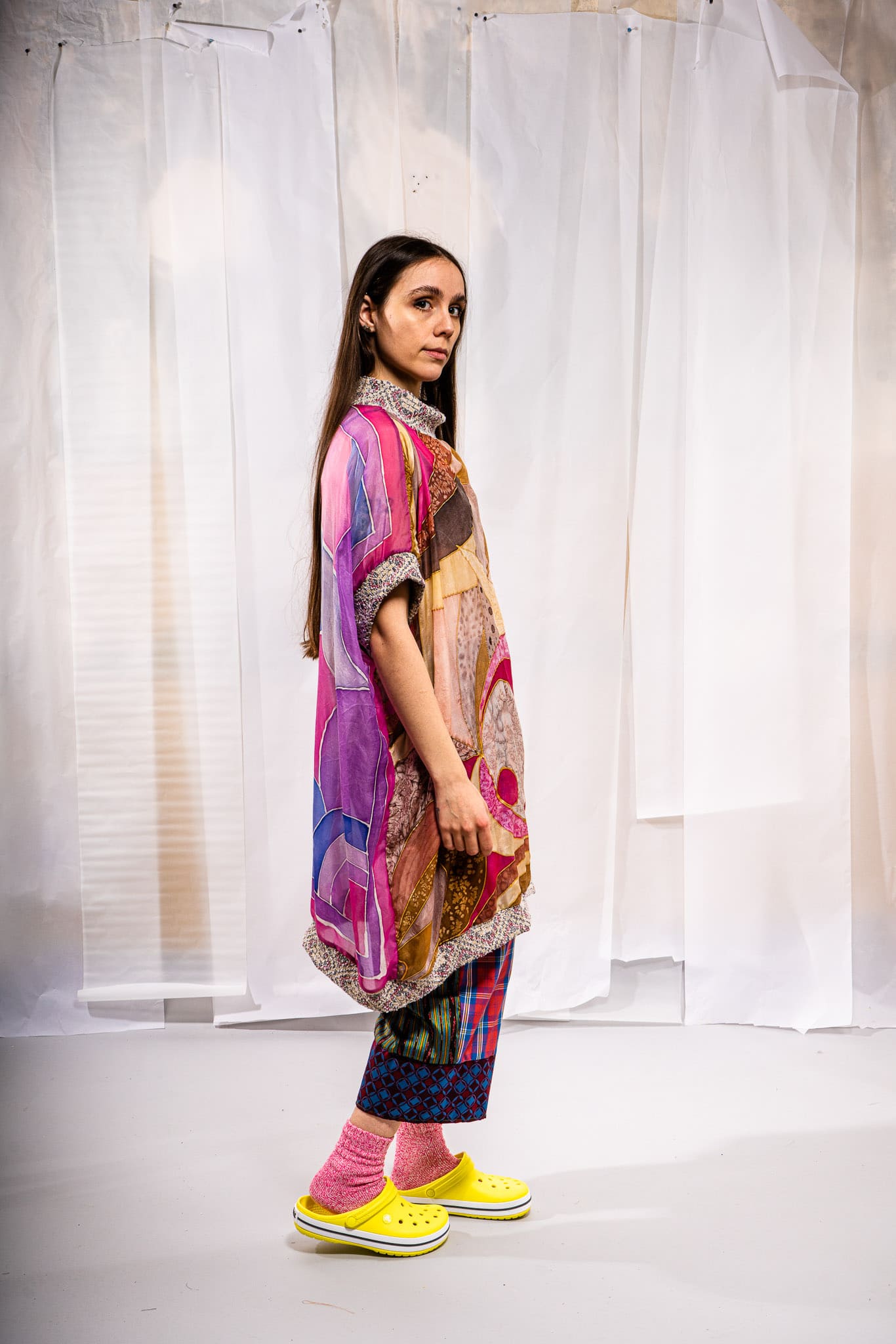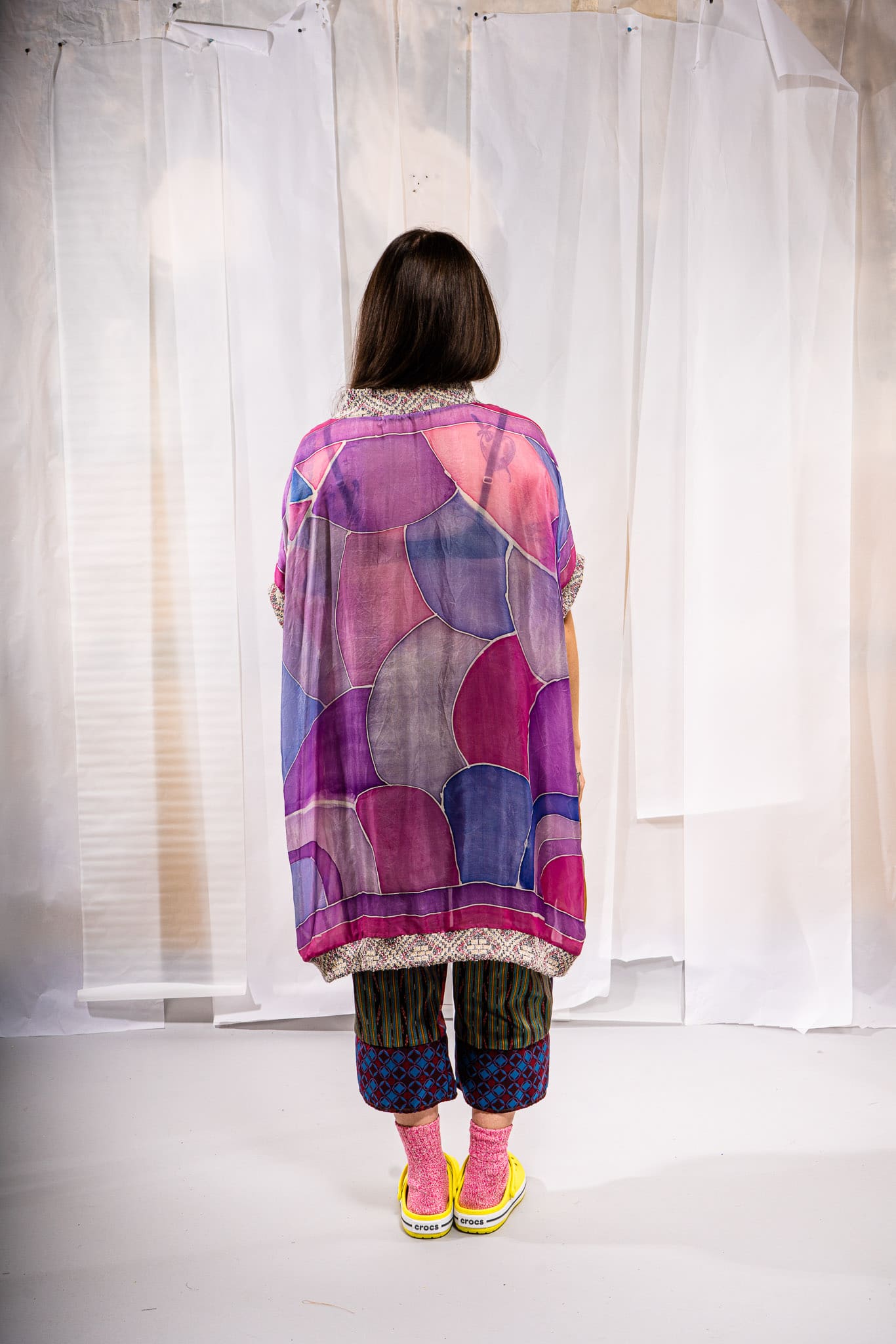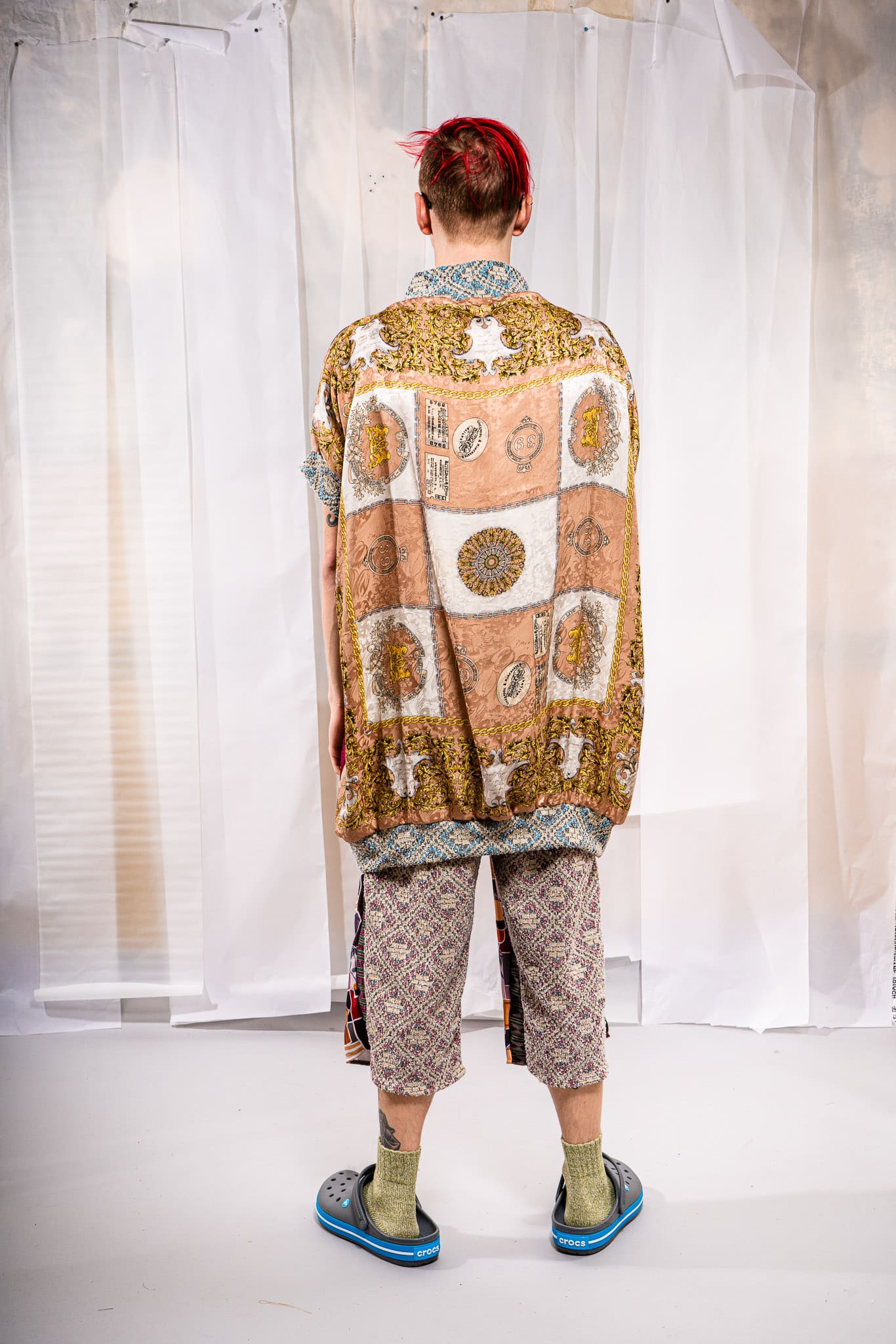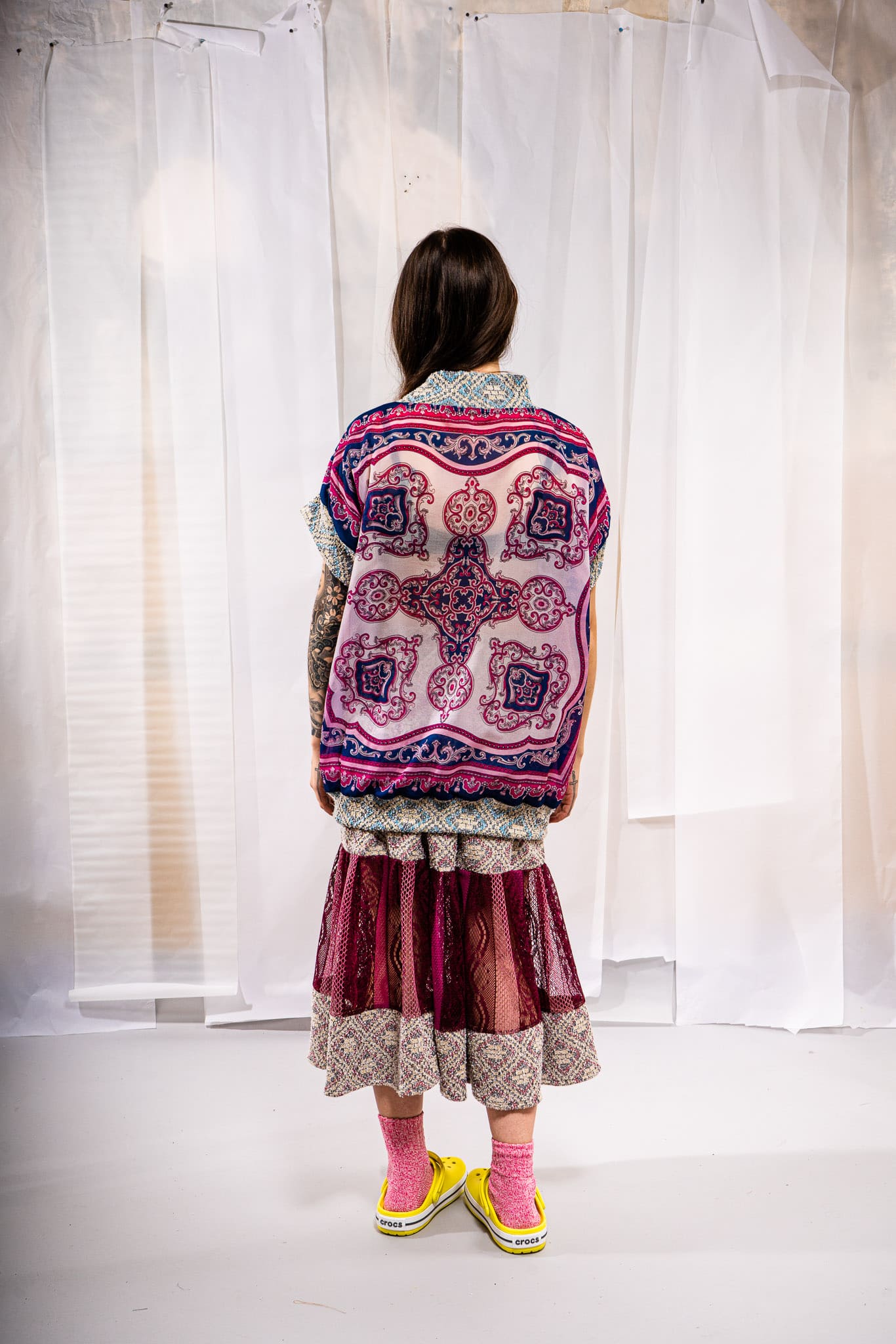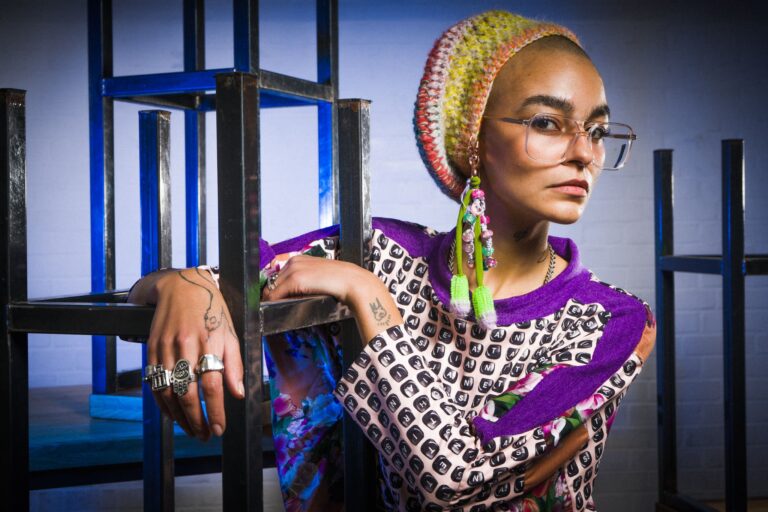New Traditions, Tata Christiane’s Unique Pieces Resort Collection 2023
It is a play between past and present, new and old (especially through recycled vintage scarves), the permanence of practices such as crochet, weaving of natural silk, painting on silk, patchwork, recycling. All these practices are ancient but they call to be re-established or strongly preserved in our contemporary society for a more ecologically and social responsible practice especially in the approach of slow and sustainable fashion.
“The definition of tradition is “the transmission of customs or beliefs from generation to generation or the fact of being passed on this way.”
New Traditions, Vintage Upcycling
In this collection I used again the raw material of recycled vintage scarves by exploring multiple ways to give them value and a new life. This season I focused on silk scarves with silk painting for their really vibrant and subtle colors, but also for a kind of naive approach to design and certainly for the handmade dimension, but also because silk painting is a traditional technique as well the tie and dye technique.
“Like all craft techniques, the finished product is never exactly the same. The patterns depending on the knotting, they are never repeated completely identically. As for the colors, the dyers are often unable to reproduce the same colors twice, because they prepare the dye baths by judgment.”
Both technique are also known now as DIY practices. DIY practices, made popular recently for a more autonomous approach to one’s own activities or creations. Handicrafts contribute to responsible and sustainable consumption. Indeed, the “handmade” highlights recycling, which limits consumption.
New Traditions, Edelweiss
At the same time I have selected a series of scarves with the traditional edelweiss flower motif. It is one of the most famous mountain plants, partly because of its rarity. Its name comes from the German edel, “noble”, and weiß, “white”. In Switzerland, the edelweiss is often used as a national emblem, and is featured on the Swiss 5 franc coin. In the Tyrol, and in the Alps in general, the edelweiss is said to represent purity and love, and it was customary for the groom to offer a bouquet to his bride on the day of the wedding. A whole popular imagery has developed in the Alpine regions and has influenced many people. In the collective imagination, this plant remains linked to the Alps and their customs.
New Traditions, Thai Silk
Another big inspiration for this collection is Thai woven silk. I had the opportunity to learn about the Royal Thai Silk Factory in Thailand and their ancient weaving technique. Thai silk is a world-renowned product whose name is synonymous with luxury and beauty. Other than its commercial worth, Thai silk also holds significant cultural values. Sericulture and weaving, which have helped to sustain the people of Thailand for ages, are all special processes that require great time and care.
These knowledges are preserved in the delicate fingers of the weavers who pass down their skills from generation to generation. In the frame of the invitation of Thai Silk International Fashion week, designers were invited to look back to their own traditionnal national costume, that was for me a really interesting perspective to connect ancient practice and our time practice, as well discover the traditional costm of 60 other differents countries.
New Traditions, Upcycling
And a practice at the practice that is the basis of our unique pieces, the upcycling. “Upcycling is more than a more sustainable way to create clothing, it promotes a new way of thinking.” The history of upcycling is long and found in many different cultures and periode od time. Definitly a re-emergence of this practice that cuts across many traditional, artistic and cultural practices or new traditions.
“Technically, the history of upcycling can be traced back to early humans, where reusing and “upcycling” materials and products were simply a part of everyday life. However, upcycling in fashion is not just something that humans have used for practical reasons; there is evidence that it has also existed in luxury. In fact, the habit of nineteenth-century haute couture clients was to transform and reuse the materials of their expensive garments to make them last for decades.”
The Alterist blog just published a beautiful article of the history of Upycycling.
New Traditions, Crocs
So this collection New Traditions is coming from this dialogue and interpretation by Tata by all this dimensions to provide new uniques pieces that stretch the past and the present, represent a slow way to approach fashion as we hope become more and more new traditions.A nod to Crocs, reminiscent of traditional clogs. Pulling from the design of clogs, Crocs were also designed to be easy to take on and off, which is great for the high seas—or just running errands. New Traditions?
“Designers like to play with the idea of beauty. Adding shoes like Crocs to a pretty silhouette creates an interesting juxtaposition that challenges the very idea of luxury. fashion. These models that are not conventionally attractive are often chosen to emphasize one’s knowledge of fashion. We do not wear them because they are beautiful but because we have the references”, deciphers Ellen Sampson, artist and researcher at Northumbria University (UK), author of Worn: Footwear, Attachment and the Affects of Wear.
“Exploring the resonance of worn and used artefacts, I seek to uncover how attachment to the material world is produced and maintained.” Check her book, Worn: Footwear Attachment and Affects of Wear.

